By Scott M. Fulton, III and Carmi Levy, Betanews

 Scott Fulton, Managing Editor, Betanews: We fully anticipate that you'll be following this morning's Apple premiere news from any one of the many gadget blogs with reporters on the scenes, working hard even as we speak to tweak the geek connections on their 3G iPhones. (Or, if they're lucky, on their Droids.) But at some point, you'll want to be able to step back out of the wilderness, as it were, to catch a breath of reality before going back in.
Scott Fulton, Managing Editor, Betanews: We fully anticipate that you'll be following this morning's Apple premiere news from any one of the many gadget blogs with reporters on the scenes, working hard even as we speak to tweak the geek connections on their 3G iPhones. (Or, if they're lucky, on their Droids.) But at some point, you'll want to be able to step back out of the wilderness, as it were, to catch a breath of reality before going back in.
This is why Betanews contributing analyst Carmi Levy and I have opted, just for your sake, to stay behind with you in the real world today, to bring you our thoughts as to what Apple's move today will mean for those of us out here -- people who prefer to improve technology rather than allow technology to try to improve us.
Carmi Levy, Contributing Analyst, Betanews: Here's my quick brain dump on the tablet-to-be-named-later device that's apparently coming from Apple:
Apple is far from the first company to try to carve out a profitable business in this technological middle ground between full-blown laptops and increasingly capable smartphones. This is a market segment where, for the better part of the past 15 years, countless vendors have impaled themselves on inflated expectations and deflated products that probably won't even make decent museum pieces someday.
From where I sit, if Apple introduces just another device into this technological Death Valley, the company is sunk. But the company never does the "just another device" thing, anyway, so there's little risk of that. Whatever feature set it ultimately has, and whatever it's ultimately called, the magic sauce won't be in the device itself. Rather, it'll be the services behind it. Apple's own playbook -- invented with iPod/iTunes and perfected with iPhone/App Store -- dictates tight integration between device, service, and content provision/purchase/management. The new device will not deviate from this strategy. Rather, it'll extend it into new market sectors.
Since it's worked so well for music and software, a larger form factor device will allow Apple to apply this same approach to similarly struggling sectors whose leaders had previously failed to transition from conventional to Internet-borne business models. Publishers who haven't already worn their knuckles raw on Apple's front door will miss out, as Apple's model could do for the written word what it's already done for the singing one. Newspaper and magazine subscriptions on a dead-simple-easy-to-sync device would be a godsend for an industry that otherwise has no hope. Similarly, movies and other rich content will play better on a 10-inch screen with a lifestyle-friendly interface than on a 3.5-inch smartphone.
There's certainly a risk of consumers balking at the price, and complaining that they have to carry, pay for, and manage yet another device. But if the hardware/software/service bundle is as compelling as Apple's two previous mobile platform smash hits have been, consumers -- Apple fanatics as well as mainstream -- will once again line up in droves to buy in.
Scott Fulton: I think we'll know for certain whether this new design is as hit when we see a response from the fashion accessory industry. The iPod created a form factor that clothing and accessories designers, and even automotive interior designers, could build around. And the iPhone has followed suit in that regard as well. When a fashion accessories designer makes room in his design portfolio for a trendy item that's made to support a particular brand of gadget, you know that designer has reason to believe the market for the gadget has scaled up to the market for clothing, which is huge.
Maybe this would be a great Lifetime reality show challenge: Make a room full of amateur fashion designers craft a trendy accessory for this tablet thing. Imagine a button down shirt with an eleven-inch pocket. Or a clip-on belt holster the size of a Bowie knife.
Here's how I perceive the situation for Apple going in: Back in 2007, there was an urgent, if then under-appreciated, need for the handset form factor to be revolutionized, carried several steps forward. We needed for handsets to get past the incremental, evolutionary phase, and move several years ahead in one fell swoop. Apple accomplished that with a product that will probably be memorialized in history as America's first game-changing product of the 21st century. Steve Jobs was for handsets what Jim Bowie was for knives.
But a similarly urgent need does not exist, I believe, in the field of tablet PCs. While Apple can proceed with the business of revolutionizing the concept of portable, keyboard-less computers with full screens -- and I fully expect Apple to succeed in that department today -- the breadth of its impact on the world at large will be smaller because this is a small market already. Apple could expand the size of that market with a successful design, but that's like adding landfill to the perimeter of an island.
However...only a company in Apple's position could be perfectly fine with that. Let's face it, this could be one of the world's most stunning limited successes. It could be a major investment in a minor market. But few other companies in the world are in a market position to pull this off, to be able to succeed on a limited scale and be good with that. One has to be a little jealous of Apple just for the fact that it can afford to do something great with something small. Not even RIM on one side or HP on the other could really afford a similar gamble.
If this tablet design is to have any truly lasting impact on the world at large, it will need to be in how it's operated. It needs to be usable in such a way that it makes user experience (UX) designers in other fields of endeavor, including PC applications, stop in their tracks and realize, "Damn, we should be doing this." In that respect, Apple does have at least some opportunity to make a broader, if more indirect, market impact.

11:39am PT: SF3: It looks like a wrap. Final thoughts from me: I expected a big iPhone. That's pretty much what I'm seeing, except that it's not really a phone. (And it has AT&T, so it's less of a 3G.) I expected an expanded iTunes platform for books, and that's what I'm seeing.
Game-changing innovation in platform design? No. It's an extension of what they have, an "iPhone Maxi."
But as I said in the intro, I don't believe Apple needs to succeed to succeed here. The real success for the company will be getting its feet wet in the CPU production department, to start the growth of its own hardware platform, which will eventually extend to iPhones everywhere.
CL: My bottom line: It's an impressive piece of hardware that borrows liberally from Apple's iPod/iPhone playbook. It'll sell well, and will vanquish bad memories of multiple generations of really lame tablet offerings from other vendors. The big gap in this remains periodical publishing. It remains to be seen whether the New York Times agreement is a one-off, or whether Apple will successfully create a platform that pulls in other newspaper and magazine publishers. The iPad is a promising evolutionary product. The revolution will come when failing industries figure out how to leverage it to fundamentally change the nature of their business.
11:35am PT: CL: I see some cannibalization from higher-end netbooks, but not much. Much as Apple did with the iPhone, it'll skim off the early adopters before adjusting its pricing longer-term.
11:34am PT: CL: They didn't specifically use the term "multitouch" but I'm going to go out on a limb and assume that the "manipulate it with your fingers" line of reasoning suggests that it's multitouch capable.
11:32am PT: Jobs: "Do we have what it takes to establish a third category of products? We think we've got the goods." [via The iPhone Blog]
11:30am PT: SF3: They must be talking about hardware now because the geek blogs all went silent again.
11:28am PT: SF3: Confirmation on the wires, the CoverItLive service was indeed knocked down.
There's very little "multi-" in this product introduction, though. No multi-user. No multi-channel conversations. No multitasking. (Little multitouch, I assume you have to be able to hold down shift while typing capital letters, right?)
11:26am PT: CL:The case seems to offer a modicum of angled support. Not perfect, but better than a featureless slice, I suppose.
Shipping in 60 days. Let the lineups begin.
SF3: Ah, okay, I can see it making a little sense. Not that the keyboard itself is portable, but if you kept it on your desk in the office and took your iPad with you, it makes a little sense. (A little.)
But the pictures they're going to leave us with are of people propping the device up in their laps to type? Not a smart decision.
11:23am PT: CL: The price point is better than we had all initially expected, but still at the high end of a post-recessionary economy that's really enjoying $300 netbooks. It'll sell like hotcakes at this price, but it'll really soar once carrier subsidies increase and up-front costs drop to the same ballpark as an average iPhone.
SF3: Even the $829 price tag for the 64 GB model with 3G included is actually pretty respectable. I always expect the "Apple premium," which is understandable and even desirable from a qualitative standpoint. But this isn't too extravagant at all.
CL: 3G-enabled devices get pretty expensive if you go hog wild with memory.
Hark...is that a keyboard I see? With a dock?
SF3: I'm seeing a picture of an iPad dock on Engadget. I don't see how you could type on that thing.
11:20am PT: SF3: $499 price tag will wake me up. That's where the A4 chip starts kicking in.
11:18am PT: CL: All iPads unlocked, and all use GSM micro-SIMs. Good news, since it'll let folks with GSM-enabled carriers shop around.
11:17am PT: "Every iPad has the latest and greatest Wi-Fi. But we're going to have models with 3G built in as well."
SF3: At last, the first mention of the words "3G."
CL: Suggests a two-pronged strategy similar to the iPhone and iPod touch. Interesting - and smart.
SF3: I fear an effort to gloss over the implication of "AT&T." Except the fact that I'm not seeing the carrier's name here could be the "One More Thing" part.
CL: $10 for iWork. Revolutionary price point...for a conventional take on conventional software. Nice, but not out-of-the-park nice. Apple's still missing the cloud-based boat.
AT&T. Sigh. Aren't there any other carriers out there? Why does 2010 dawn with yet more carrier-specific exclusivity and lock-in?
$14.99 for light use and $29.99 for unlimited: Suddenly, laptop/netbook and smartphone data plans look overpriced. Welcome to price erosion across the board...we can all thank Apple for kickstarting the trend.
SF3: Sigh indeed. Here's the part where I start typing Y-A-W-N.
11:13am PT: CL: Possibly. And I think I'm screaming into the wind on the keyboard thing and expansion base because they're both not happening here. But the one-size-fits-all form factor that's dominated the iPhone landscape and now seems to be defining the iPad one can't last forever. At some point, they've got to accommodate different strokes for different folks -- all without diluting the elegant simplicity that got them to the top of the market in the first place.
SF3: I do like the idea of a portable graphical calculator, something I've always hoped the industry could produce. I could imagine any number of real-world uses for such a thing.
11:10am PT: CL: Would be nice to see a third party keyboard that hard-docks into the iPad. An expansion port of some sort might kickstart the industry. Can't tell from the pics what the device's physical expansion capabilities are, though.
SF3: Yea, but wouldn't such a device be a tacit admission that the function doesn't really fit the form? Sort of like the MacBook Air with the hard drive that you plug into it from the outside like an I.V. unit.
11:08am PT: CL: Good to see a new iWork for iPad. Reinforces that you can do more than just watch movies on this thing. I still wouldn't write War and Peace on a glass keyboard, but just having software that's more capable than a text editor is encouraging.
SF3: I think if you put that much forethought into productivity software for a slate form factor, they should have expended an extra ounce of fuel to find some gadget-y way to make the device hold still so you can type on it. Maybe netbooks are cheap, Steve, but at least they fit on your lap. I'm worried that typing on a iPad will be like playing Scrabble on a sheet of ice.
11:04am PT: CL: So iWork has a new UI. Lovely, I'm sure. But productivity apps aren't about the UI. What's underneath, folks? And will these things integrate my iPad experience with my Web experience? Wish I could tack iWork for iPad as a front end onto my Google Apps apps.
What, geeks don't use spreadsheets? :)
SF3: There was somebody I read here recently...maybe one of our readers will remind me...who pretty much said, geeks don't use spreadsheets. (What, you don't agree? Tell me about it in comments.)
11:03am PT: SF3: Here's the part where all the geek blogs go silent. I'm literally reading one-word paragraphs now. "Spreadsheets." Like there wasn't enough caffeine left to coax them to type the letters, Y-A-W-N.
10:59am PT: CL: Hard to tell from the demo what the screen's quality is as an e-reader. Screen shots LOOK nice, but the only way to really tell is to sit with it (uncomfortably) in one's lap.
Hmm...iBook Store to buy books right on the device.
Let's get this straight: there's an iTunes store for music and video, an App Store for software, and an iBook Store for books. Is this universe getting a little confusing? Is there opportunity for consolidation into one superstore/software environment?
SF3: iBooks is exactly right on target so far -- 100% "iTunes for books."
CL: Another example of using the original iTunes model and extending it into new content. I'd prefer one big umbrella for all my content, but I'm picky that way. I can understand why Apple would focus individual "stores" for each category.
SF3: I think it has to say "books" in the brand. If it really were "iTunes for Books," that would sound too much like a Microsoft branding campaign.
CL: True. Can't rebrand what is already an entrenched brand years after it became entrenched. Too confusing for consumers.
Ah, iWork. Will productivity software become interesting again? Let's see.
10:55am PT: CL: Perhaps. But there's still an industry that sells books and newspapers, antidiluvian as they may both be. And it's an industry that's begging for some sort of transition. I'm going to go way out on a limb and say this is the most mainstream move yet to fundamentally change how this stuff gets produced, delivered and paid for. Well, that last part I'm still waiting for: how are we gonna pay for all this, Steve?
Ooh, bitchslap to Amazon. iBooks intro starts with a backhanded compliment, then an imonous warning: "Amazon's done a great job of pioneering this functionality with the Kindle. We're going to stand on their shoulders and go a little further."
10:55am PT: CL: Disappointed the NYT slice of the presentation focused only on a narrow slice of the end user experience. I know they have lots of ground to cover in very little time, but the publishing angle is so much more fundamental to where this thing will go. Do we really need another gaming demo?
They'll get lynched by the Apple fanboys - I'm betting one of these will be on the ISS before long. At only 1.5 pounds, that's only $15,000 to get it into orbit.
SF3: Back to your point: If this thing is to revolutionize publishing, you'll need to produce more than The New York Times on it. Imagine if the iPod were introduced to the public with a demo of it only playing Stravinsky symphonies.
CL: Agreed. But if the NYT buys in, others will follow. You need a marquee first-adopter, and they don't get more marquee than the Times.
SF3: Problem is, is it the right marquee now, especially for the market Apple's trying to address? Jobs & Co. may think it's the reader of the New York Times Book Review. But that reader is thinking, "Books? Those are old."
CL: You're right, Scott. I think was being a wee bit elitist back there. Gotta grab everyone's attention, and cutting edge gaming does that every time.
What's battery life when this thing's screaming through high performance games, though?
MLB.com...nice graphics! Is there a steroid-enabled mode as well?
10:50am PT: NYT guy: "We think that we've captured the essence of reading a newspaper… all in a native app."
CL: This, in a nutshell, is the essence of what has ailed the publishing industry all along. They simply haven't had a viable platform to replicate the act of reading it on paper, in an electronic form. If iPad manages to pull this off -- at a price point that doesn't scare consumers off -- we may have just witnessed the landscape shift a little in the right direction.
Note to all newspaper publishers everywhere: Start calling Apple. Now. Do not wait. I'd LOVE for my local paper to bundle in one of these babies with a subscription commitment. Publication subscriptions could be the new carriers of periodical-based lit.
SF3: Back to form factor a second: Just from the photos, I've noticed SVP Scott Forstall trying to fit the device somewhere on his lap; and then there's the guy from the gaming magazine, who plays the game by grasping the device firmly in both hands and suspending it on the desk.
I'm not sure, but I think Sony may already have an edge in device comfort, as far as gaming is concerned.
CL: Agreed, Scott. But ecosystem will trump device design every time. If Apple can flesh out the underlying infrastructure, that'll buy it time to make improvements to the generation 1 hardware. iPhone has followed a similar path, and it's worked well for them so far. The hardware need not be perfect out of the gate. Just good enough. Which in Apples case, is never much of an issue.
SF3: Maybe, but I'm imagining, who's the first guy/lady who will give this device the "Richard Feynman" test (suspending the O-ring in a cup of ice water): Who's the guy who will come on CNBC first and say, "I can't find a place to _put_ this thing in order to use it? And demonstrate the point in a living-room setting.
10:44am PT: CL:I think Pixel Double gives Apple a quick and dirty way to leverage everything that's already out there. Longer term, I suspect developers will to at least a certain extent target one platform - iPad - or the other - iPhone/iPod touch - because some things simply work better on larger screens and larger form factor devices than others.
10:43am PT: CL: Question is, how much of the current iPhone/iPod touch app inventory run unmodified on the iPad. What's the user experience like? Do these apps scale well onto the new device?
"We built the iPad to run virtually every one of these apps unmodified right out of the box. We can do that in two ways ??" do it with pixel for pixel accuracy in a black box, or we can pixel-double and run them in full-screen."
"Virtually every one" is never as great as it sounds.
SF3: "Pixel Double?" That reminds me of the graphics modes on the Apple II. Remember when the //gs came out? It could run with "really great graphics," assuming you wanted to plunk down $60 more bucks for the incompatible high-res version of "Carmen Sandiego." But then it could still run the "thousands of Apple ][ programs." Albeit in a graphically defeated mode.
CL: Now for the main event: talking directly about The New York Times. NYT's Martin Nisenholtz discussing the paper's plans for iPad.
10:38am PT: CL: Good point, Scott. This also allows it to scale by starting on a net-new platform. As its popularity moves up the growth curve, it'll allow Apple to ramp its own pipeline as well. Diving into smaller form factors right now wouldn't have allowed Apple that opportunity to grow gradually.
SF3: That gets back to my broader theory: Apple doesn't _need_ to have a _stunning_ success right now in its history, to be successful. It could simply use another good enough product in its arsenal. So far, that's what I'm seeing here, "good enough." It extends the iPhone OS into an "economy size" form factor, it doesn't really create a new platform as much as extend the existing (healthy) one.
CL: Showing unmodified iPhone game on the iPad. This is crucial for Apple - leveraging the existing software base, developer community and tools means it doesn't have to start from scratch building a new marketplace.
Apple is also learning its lessons: New SDK, including iPad tools, is being released today, too. Nicely thought out.
10:34am PT: CL: Wonder what Intel has to say about Apple's choice of processor. Has Apple just hit another architecture-related fork in the road a la 68XXX-to-PowerPC, or PPC-to-Intel?
16-64 GB of storage. Can't tell if that's expandable...looking hard at the screen grabs to see if one of them's a memory card slot. The one under the power button looks suspiciously like one. Or am I just being hopeful?
SF3: I think Apple needed an opportunity to stretch its legs coming out of the cocoon, in terms of developing the heart of its own hardware. Starting too miniaturized might put it in danger, so I'm thinking the tablet form factor was necessary to give Apple a starting point for itself -- so it can work up to producing chips for its own iPhones later.
10:31am PT: SF3: Or you do like Douglas Adams, you take your towel with you wherever you go. A kind of rubber track pad. Maybe that's the iPad fashion accessory we've been looking for.
CL: Screen - size is much better for watching a movie than an iPhone/iPod touch. But aspect ratio isn't HD-optimized. Welcome to an eternally letter-boxed future. And don't get me started about how to hold this thing at the right angle for a 2-hour movie.
SF3: I can't cross my legs for that long.
CL: 1.5 pounds, a half-inch thick. No doubt, it's a great piece of tech to slip into a carry-on bag. Watch it carefully during security screening, though. We now have the hottest device for thieves.
SF3: Okay, now we're talking my language about something: 1.0 GHz Apple A4 chip. Apple's chip factory goes to work at last.
CL: Carmi Levy: "iPad is powered by our own custom silicon. Our own chip. It's called the A4, and it screams." 1GHz. 16, 32, or 64GB of flash storage. "It's got the latest in wireless: 802.11n, WiFi, and Bluetooth 2.1 + EDR."
10:27am PT: SF3: I'm starting to wonder about the form factor. I'm looking at the Gizmodo photos, and I'm seeing Steve sitting easily in his chair perusing Web pages, but already I'm noticing something: It doesn't appear that there's a convenient place for a user to put this thing. With an iPhone, you have one hand holding the phone and another one typing. What do you do with a slick surface device with only simulated keys resting against your freshly washed blue jeans?
10:24am PT: CL: "If I'm on a Mac, I can get events, places and faces from iPhoto." Hmm, that rather confirms it to me: they still want you to believe every Apple product will somehow be richer if you hang it off of a Mac as well.
The return of album artwork. Today's music consumers forget how much fun it was to read the liner notes. Maybe there IS hope for the music industry yet.
10:21am PT: SF3: You begin to wonder what the platform extension for this will look like on an iMac.
CL: Does every Apple demo have to be laden with countles uses of the word "gorgeous"? We get it...please move on.
SF3: It's as if they'd hired Charles Nelson Reilly to right the script.
CL: ...and if Apple will offer a preferential experience on Macs - like iTunes was in the early days - or deliver consistent multiplatform capability right off the hop. I wonder if the company is losing its "drive Mac growth" ethos...or if it really even matters any more.
I think Steve would look great in the center square, Scott. But only if Florence Henderson is on with him, too.
10:18am PT: SF3: That gets back to that whole, what kind of _platform_ are they building for it, issue. The content delivery model. Smartly, Jobs is saving that part of the introduction until later in the event.
Leave it to Canadians to be erudite and considered when providing feedback online, Scott :) I think the masses still see this as a hardware play, while a small, bigger-picture-thinking minority understands the what's really changed here. 8+ years after iPod, after all, most folks still think it's just a slick media player.
SF3: Notice how soon Jobs started right into the iPad -- with the iPhone introduction, he took some time, built up some expectation.
CL: I believe the speed with which he dove right into iPad suggests there's more to this. He's building to something else...and it ain't just the device. Waiting for news on partnerships, ecosystems, the lovely glue that keeps everything underneath together and vital.
10:16am PT: CL: Desktop UI looks like an interesting mix of OS X - the dock on the bottom - and iPhone/iPod touch (the app icons on the desktop itself.)
Giant on-screen keyboard. I hope the keys are bigger than my big, fat, glass-challenged fingers. For large volume text entry, this still isn't the holy grail.
Facebook was the first web page shown. New York Times the next. Waiting to see the publishing play. Don't let me down, Steve!
Keyboard looks like a digitally rendered version of the current Mac-standard 'board. Looks nice...
"Steve. "More intimate than a laptop....and it's so much more capable than a smartphone." Me: Intimate? Yeesh. Some things we don't really want to know.
Using the NYT again for his web demo. I think the story here may be a little deeper than just hardware, folks. Keep going, Mr. Jobs...
10:12am PT: CL: iPad it is. Going to have to provide elocution lessons to Apple Store employees to ensure they don't confuse customers. iPad = iPod?
Desktop UI looks like an interesting mix of OS X - the dock on the bottom - and iPhone/iPod touch (the app icons on the desktop itself.)
10:08am PT: SF3: It's extraordinary how few of the "live feeds" are actually updating, or have even started. I think CoverItLive.com, which provides some of the back end for these guys, may have actually crashed.
CL: "Live" doesn't mean the same thing that it once did. Then again, "new and improved" has never been new OR improved, so I guess nothing's really changed.
10:05am PT: The event has begun with the now-customary iPod status report. But judging from the reports I'm reading, that update is flying by at lightning speed. My guess is, expect content partners to take the stage, and Apple will need time to fit them all in.
9:58am PT: SF3: I have to say, I'm impressed with some of the questions I'm seeing on the live blog feeds with user feedback. On Canada's National Post live blog, for instance, is a fellow asking, why does there appear to be so much emphasis on the hardware aspect of this, when it's the underlying platform that will make or break this venture? The implication here being, Apple needs to extend iTunes into larger-screen media in such a way that it has some reach to hardware beyond just this iTablet/iSlate (following the iTunes for Windows philosophy).
Copyright Betanews, Inc. 2010













![A recent mockup of the likely default appearance of Firefox 4.0. [Courtesy Mozilla]](http://images.betanews.com/media/4966.jpg)










 "We all want to have control over our personal information. This is why the EU has rules on the protection of personal data," Reding said. "Our rights are clear and must be respected. Whenever your personal information is collected, whenever it is processed, and whenever it is used, these are the high standards we must live up to...We are facing common security challenges from international crime and terrorism. We have been confronted with devastating attacks in Europe and in the United States. We are working hard with the US to confront these challenges."
"We all want to have control over our personal information. This is why the EU has rules on the protection of personal data," Reding said. "Our rights are clear and must be respected. Whenever your personal information is collected, whenever it is processed, and whenever it is used, these are the high standards we must live up to...We are facing common security challenges from international crime and terrorism. We have been confronted with devastating attacks in Europe and in the United States. We are working hard with the US to confront these challenges."
 When a massive Microsoft corporate reorganization on September 20, 2005 vaulted Robbie Bach into the role of President of the Entertainment & Devices division, the explanation at the time was to enable the company to focus on devices where the goal was to promote devices, and on platforms where the goal was to promote devices. Xbox was a device, whatever MP3 player the company would decide to produce was a device, and obviously cell phones are devices should Microsoft ever choose to enter that business in earnest.
When a massive Microsoft corporate reorganization on September 20, 2005 vaulted Robbie Bach into the role of President of the Entertainment & Devices division, the explanation at the time was to enable the company to focus on devices where the goal was to promote devices, and on platforms where the goal was to promote devices. Xbox was a device, whatever MP3 player the company would decide to produce was a device, and obviously cell phones are devices should Microsoft ever choose to enter that business in earnest. It's a development that indicates that Microsoft realizes the importance of these assets as platforms, rather than as mere devices -- a realization made feasible by the work of Bach and Allard. And yet off they go to parts unknown.
It's a development that indicates that Microsoft realizes the importance of these assets as platforms, rather than as mere devices -- a realization made feasible by the work of Bach and Allard. And yet off they go to parts unknown.


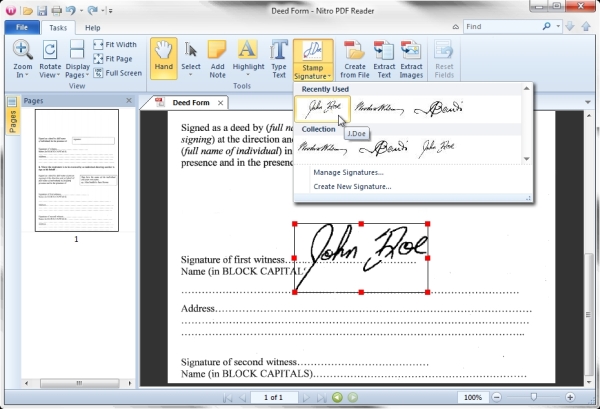
 The latest hybrid notebook storage device announced today by Seagate Technology, the
The latest hybrid notebook storage device announced today by Seagate Technology, the ![Seagate's cross-section depiction of its new Momentus XT hybrid SSD/HDD. [Courtesy Seagate]](http://images.betanews.com/media/5024.jpg) Fast-forward to today, when Seagate product marketing manager Joni Clark triumphantly announces to Betanews that Momentus XT will not be bound to ReadyDrive at all.
Fast-forward to today, when Seagate product marketing manager Joni Clark triumphantly announces to Betanews that Momentus XT will not be bound to ReadyDrive at all.![A slide from a Seagate presentation revealing the benchmark test results for 'real-world' applications with its Momentus XT hybrid SSD/HDD drive. [Courtesy Seagate]](http://images.betanews.com/media/5025.jpg)
 "Within a Digital Single Market, citizens should be able to enjoy commercial services and cultural entertainment across borders. But EU online markets are still separated by barriers which hamper access to pan-European telecoms services, digital services and content," Comm. Kroes told a press conference in Brussels yesterday. "Today there are four times as many music downloads in the US as in the EU because of the lack of legal offers and fragmented markets. The Commission therefore intends to open up access to legal online content by simplifying copyright clearance, management and cross-border licensing. Other actions include making electronic payments and invoicing easier and simplifying online dispute resolution."
"Within a Digital Single Market, citizens should be able to enjoy commercial services and cultural entertainment across borders. But EU online markets are still separated by barriers which hamper access to pan-European telecoms services, digital services and content," Comm. Kroes told a press conference in Brussels yesterday. "Today there are four times as many music downloads in the US as in the EU because of the lack of legal offers and fragmented markets. The Commission therefore intends to open up access to legal online content by simplifying copyright clearance, management and cross-border licensing. Other actions include making electronic payments and invoicing easier and simplifying online dispute resolution." On the surface, it might sound like one of those amateurish conclusions a blogger might reach after having just read the press release: Symantec, a software company now mainly known for security products, acquires some assets from a non-competitor in order to get that company's logo. But in the deal between Symantec and VeriSign announced yesterday, there is no mistaking the fact that the antivirus products maker acquired, among other things, the single asset that just last week VeriSign argued was the ticket to its own future stability: quite literally, its own logo.
On the surface, it might sound like one of those amateurish conclusions a blogger might reach after having just read the press release: Symantec, a software company now mainly known for security products, acquires some assets from a non-competitor in order to get that company's logo. But in the deal between Symantec and VeriSign announced yesterday, there is no mistaking the fact that the antivirus products maker acquired, among other things, the single asset that just last week VeriSign argued was the ticket to its own future stability: quite literally, its own logo.


 In a decision handed down in US District Court in New York this afternoon, representatives of the recording industry won summary judgment against P2P file-sharing software maker LimeWire, in a patent infringement suit
In a decision handed down in US District Court in New York this afternoon, representatives of the recording industry won summary judgment against P2P file-sharing software maker LimeWire, in a patent infringement suit  Ever since it stopped billing itself as a producer of "replacements" for Intel CPUs, AMD has struggled with the platform question: the need for OEMs to produce PCs based on pre-determined patterns. Manufacturers can achieve price breaks when they buy parts in bulk, and platforms can help them do that; likewise, they can reap even more benefits down the road from selling popular platforms to the public.
Ever since it stopped billing itself as a producer of "replacements" for Intel CPUs, AMD has struggled with the platform question: the need for OEMs to produce PCs based on pre-determined patterns. Manufacturers can achieve price breaks when they buy parts in bulk, and platforms can help them do that; likewise, they can reap even more benefits down the road from selling popular platforms to the public.
 "The Commission shall apply and enforce any regulation governing the rates, terms, conditions, provisioning, or use of an information service (including any transmission component of an information service whether or not the transmission component is offered for a fee directly to the public or to such class of users as to be effectively available directly to the public regardless of the facilities used) or an Internet access service on a nondiscriminatory basis between and among broadband network providers, service providers, application providers, and content providers."
"The Commission shall apply and enforce any regulation governing the rates, terms, conditions, provisioning, or use of an information service (including any transmission component of an information service whether or not the transmission component is offered for a fee directly to the public or to such class of users as to be effectively available directly to the public regardless of the facilities used) or an Internet access service on a nondiscriminatory basis between and among broadband network providers, service providers, application providers, and content providers."



![A concept for the 'app-tab' functionality to be built into Firefox 4. [Courtesy Mozilla]](http://images.betanews.com/media/4965.jpg)
![Permissions and limitations can be set on a per-site basis in Firefox 4. [Courtesy Mozilla]](http://images.betanews.com/media/4967.jpg)
 With Congress' dance card already overflowing with major social and policy reforms, including in the financial sector, the likelihood that it could pass a major reform to the Telecommunications Act for Internet regulation during the Obama Administration (however long it lasts) is quite low. Faced with a pair of no-win scenarios, the FCC last week opted to propose a "Third Way" for broadband regulation that could at least get its foot back in the door -- a way that literally asks judges and attorneys-general to substitute "telephone" for "broadband" in various clauses of existing law, except for those sections where doing so wouldn't make any sense.
With Congress' dance card already overflowing with major social and policy reforms, including in the financial sector, the likelihood that it could pass a major reform to the Telecommunications Act for Internet regulation during the Obama Administration (however long it lasts) is quite low. Faced with a pair of no-win scenarios, the FCC last week opted to propose a "Third Way" for broadband regulation that could at least get its foot back in the door -- a way that literally asks judges and attorneys-general to substitute "telephone" for "broadband" in various clauses of existing law, except for those sections where doing so wouldn't make any sense. In a signal that Facebook is taking the messages of last week seriously -- messages that included a privacy complaint filed last week with the US Federal Trade Commission by the Electronic Privacy Information Center (EPIC) (
In a signal that Facebook is taking the messages of last week seriously -- messages that included a privacy complaint filed last week with the US Federal Trade Commission by the Electronic Privacy Information Center (EPIC) (
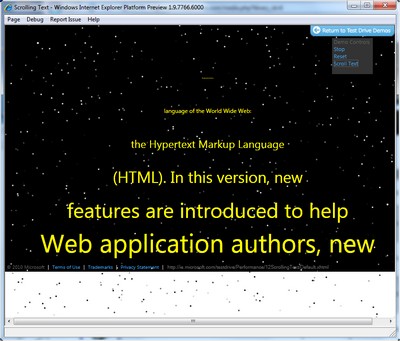 This week, Microsoft continued its public demonstration that it's working hard to improve the underlying Internet Explorer platform, with a release on Wednesday of the second preview of just the platform of the next IE9 -- not a fully functional Web browser, but a demonstration of where the rendering engine is going. Again, it's just a minimal front end on top of a rendering engine, and its main purpose is to show off the HTML 5, SVG, and JavaScript functionality pointed to on Microsoft's IE9 test site.
This week, Microsoft continued its public demonstration that it's working hard to improve the underlying Internet Explorer platform, with a release on Wednesday of the second preview of just the platform of the next IE9 -- not a fully functional Web browser, but a demonstration of where the rendering engine is going. Again, it's just a minimal front end on top of a rendering engine, and its main purpose is to show off the HTML 5, SVG, and JavaScript functionality pointed to on Microsoft's IE9 test site.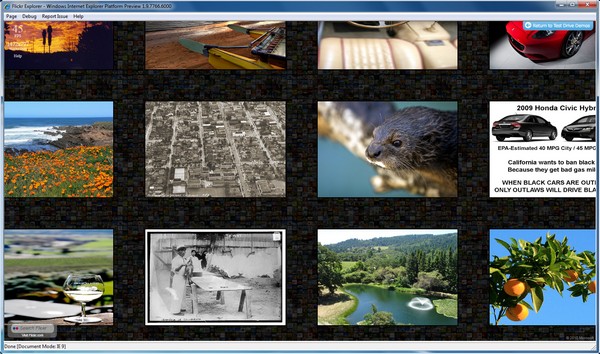
 Since 1996, the Federal Communications Commission accepted, and has positively argued even up until two months ago, that broadband Internet service is an information service under US law -- an enhancement to telecommunications service that is regulated under Title I of the Communications Act. But when the FCC made its strongest effort to censure a carrier for net neutrality violations -- its fine of Comcast for throttling BitTorrent -- the DC Circuit Court said that wouldn't fly under Title I.
Since 1996, the Federal Communications Commission accepted, and has positively argued even up until two months ago, that broadband Internet service is an information service under US law -- an enhancement to telecommunications service that is regulated under Title I of the Communications Act. But when the FCC made its strongest effort to censure a carrier for net neutrality violations -- its fine of Comcast for throttling BitTorrent -- the DC Circuit Court said that wouldn't fly under Title I. "A covered entity may not sell, share, or otherwise disclose covered information to an unaffiliated party without first obtaining the express affirmative consent of the individual to whom the covered information relates," the draft reads. "A covered entity that has obtained express affirmative consent from an individual must provide the individual with the opportunity, without charge, to withdraw such consent at any time thereafter."
"A covered entity may not sell, share, or otherwise disclose covered information to an unaffiliated party without first obtaining the express affirmative consent of the individual to whom the covered information relates," the draft reads. "A covered entity that has obtained express affirmative consent from an individual must provide the individual with the opportunity, without charge, to withdraw such consent at any time thereafter." Technically, comedians and comedy writers cannot be held liable for certain copyright violations, especially if their parodies are presented in the context of a comedy show. But that doesn't mean major sponsors can't pull strings other than legal ones; and Tuesday morning, comedienne Ellen DeGeneres found herself apologizing -- in her own self-deprecating way, of course -- for a parody of an iPhone commercial that appeared on Monday's show.
Technically, comedians and comedy writers cannot be held liable for certain copyright violations, especially if their parodies are presented in the context of a comedy show. But that doesn't mean major sponsors can't pull strings other than legal ones; and Tuesday morning, comedienne Ellen DeGeneres found herself apologizing -- in her own self-deprecating way, of course -- for a parody of an iPhone commercial that appeared on Monday's show. Case in point: AJAX, which might never have happened, Hammond believes, had Microsoft not implemented the object identifier XMLHTTPRequest in Internet Explorer 5 in 1999. "That opened up the whole door for this rich Internet application movement with AJAX and JavaScript," Hammond reminded Betanews in a recent interview. "Over time, basically, every other browser adopted that, even though it was never really part of any kind of standards-setting process or specification, and it created a lot of value."
Case in point: AJAX, which might never have happened, Hammond believes, had Microsoft not implemented the object identifier XMLHTTPRequest in Internet Explorer 5 in 1999. "That opened up the whole door for this rich Internet application movement with AJAX and JavaScript," Hammond reminded Betanews in a recent interview. "Over time, basically, every other browser adopted that, even though it was never really part of any kind of standards-setting process or specification, and it created a lot of value."

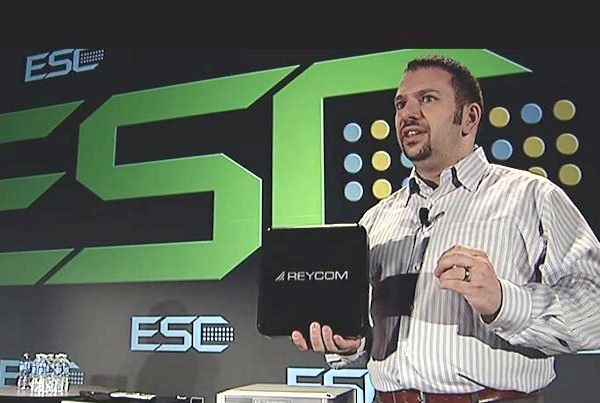
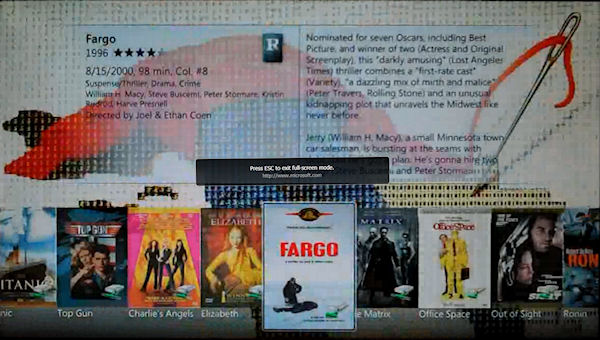
 There are a handful of issues of contention that broadcasters (who transmit content over the public airwaves) have with the Federal Communications Commission's Broadband Plan. One such outstanding dispute concerns the FCC's proposed reallocation of unused digital spectrum from broadcast to broadband purposes -- a way to get at least some of the estimated 180 MHz of spectrum wireless operators say they need, without another complete re-auction.
There are a handful of issues of contention that broadcasters (who transmit content over the public airwaves) have with the Federal Communications Commission's Broadband Plan. One such outstanding dispute concerns the FCC's proposed reallocation of unused digital spectrum from broadcast to broadband purposes -- a way to get at least some of the estimated 180 MHz of spectrum wireless operators say they need, without another complete re-auction. But waving in front of HP's obvious red flags were several more obvious white ones:
But waving in front of HP's obvious red flags were several more obvious white ones:
 Indeed, last week, Rubin was talking with us about the synergies that could
Indeed, last week, Rubin was talking with us about the synergies that could 

 Perhaps the headline here should be, "HTC doesn't acquire Palm." In any event, our question from last week, "What if nobody wants Palm?" has just been rendered moot: Hewlett-Packard has just announced it has agreed to acquire the assets of Palm Inc. for $5.70 per share, or approximately $1.2 billion.
Perhaps the headline here should be, "HTC doesn't acquire Palm." In any event, our question from last week, "What if nobody wants Palm?" has just been rendered moot: Hewlett-Packard has just announced it has agreed to acquire the assets of Palm Inc. for $5.70 per share, or approximately $1.2 billion.

 Amid news yesterday of a discovery by an independent programmer of what appeared to be another door left open for Web apps to access Facebook users' personal data, Sen. Chuck Schumer (D - N.Y.) called upon the Federal Trade Commission to take the next step in forming the equivalent of a US "privacy commissioner."
Amid news yesterday of a discovery by an independent programmer of what appeared to be another door left open for Web apps to access Facebook users' personal data, Sen. Chuck Schumer (D - N.Y.) called upon the Federal Trade Commission to take the next step in forming the equivalent of a US "privacy commissioner."


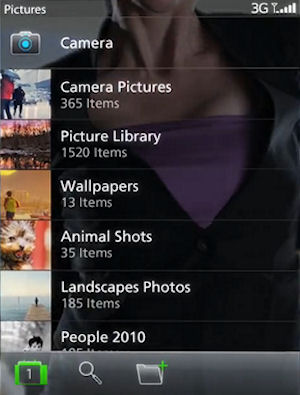

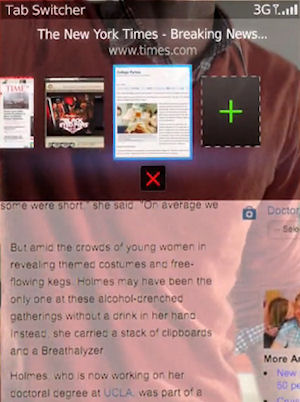
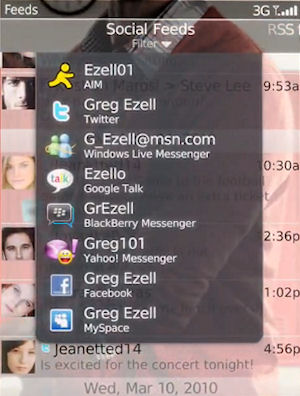

 One of Silverlight video's biggest advantages to date has been the server's ability to tweak the bitrate of video playback as it's being played back, and as the bandwidth of the connection varies. It's the
One of Silverlight video's biggest advantages to date has been the server's ability to tweak the bitrate of video playback as it's being played back, and as the bandwidth of the connection varies. It's the 
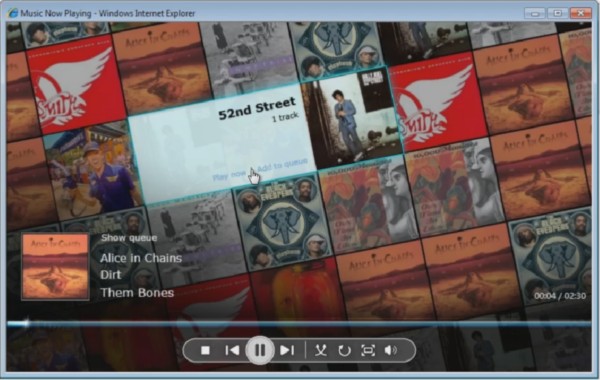
 The Pearl's appeal to date has been its form factor -- not wide like a sandwich loaf slice, but thinner than a bar of soap. The tradeoff has been the keyboard: There's not enough room for the traditional BlackBerry QWERTY, so the new Pearl 9100 features a 20-key layout that, for some, takes some getting used to. An optional Pearl 9105 model includes a more traditional 14-key layout.
The Pearl's appeal to date has been its form factor -- not wide like a sandwich loaf slice, but thinner than a bar of soap. The tradeoff has been the keyboard: There's not enough room for the traditional BlackBerry QWERTY, so the new Pearl 9100 features a 20-key layout that, for some, takes some getting used to. An optional Pearl 9105 model includes a more traditional 14-key layout. Yet the 9650 isn't decked out like the 9700, or even like the new Pearl -- it's not really a 3G phone. When RIM says it "supports" 3G, it's referring to EV-DO, which is a bit more like "2.5G." It's a CDMA phone, and will premiere in the US on Sprint.
Yet the 9650 isn't decked out like the 9700, or even like the new Pearl -- it's not really a 3G phone. When RIM says it "supports" 3G, it's referring to EV-DO, which is a bit more like "2.5G." It's a CDMA phone, and will premiere in the US on Sprint.
 While bitterness continues over the implications of Sections 3.3.1 through 3.3.3 of Apple's recently modified Developers' Agreement (
While bitterness continues over the implications of Sections 3.3.1 through 3.3.3 of Apple's recently modified Developers' Agreement ( Many instances of malware on Windows-based systems masquerade themselves as system services -- the various independent processes that respond to requests from both the operating system and applications with functions that users typically need. Network connectivity and printing are among the more common Windows services; and if you've ever perused the processes list of Task Manager (or, better yet,
Many instances of malware on Windows-based systems masquerade themselves as system services -- the various independent processes that respond to requests from both the operating system and applications with functions that users typically need. Network connectivity and printing are among the more common Windows services; and if you've ever perused the processes list of Task Manager (or, better yet,  "Today, the Web exists mostly as a series of unstructured links between pages. And this has been a powerful model, but it's really just the start," said Zuckerberg. "The Open Graph puts people at the center of the Web. It means that the Web can become a set of personally and semantically meaningful connections between people and things. I am friends with you. I am attending this event. I like this band. These connections aren't just happening on Facebook, they're happening all over the Web. And today, with the Open Graph, we're going to bring all of these together."
"Today, the Web exists mostly as a series of unstructured links between pages. And this has been a powerful model, but it's really just the start," said Zuckerberg. "The Open Graph puts people at the center of the Web. It means that the Web can become a set of personally and semantically meaningful connections between people and things. I am friends with you. I am attending this event. I like this band. These connections aren't just happening on Facebook, they're happening all over the Web. And today, with the Open Graph, we're going to bring all of these together."




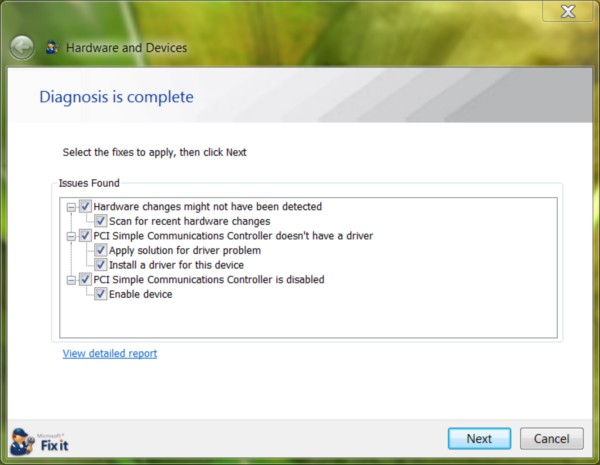

 The first volume licensing arrangements for Microsoft Office 2010 will be made through company partners on May 1, almost two weeks earlier than expected. This news today from the company's Office Engineering team, which released the final build of all versions of the company's principal applications suite today.
The first volume licensing arrangements for Microsoft Office 2010 will be made through company partners on May 1, almost two weeks earlier than expected. This news today from the company's Office Engineering team, which released the final build of all versions of the company's principal applications suite today. MARKHAM ERICKSON, OIC: I think George is right with point #1, that the DC Circuit didn't obliterate the concept of ancillary authority; that legal theory still exists. The court just further described what they think ancillary authority means. It means that anything you're doing under Title I has to be tied to a specific statutory mandate under Titles II, III, or VI of the Communications Act; and that what the FCC was doing in the Comcast decision -- relying primarily on Section 706 and 230 of the Communications Act -- neither of those sections provided a statutory mandate, and they were mere policy statements rather than statutory mandates.
MARKHAM ERICKSON, OIC: I think George is right with point #1, that the DC Circuit didn't obliterate the concept of ancillary authority; that legal theory still exists. The court just further described what they think ancillary authority means. It means that anything you're doing under Title I has to be tied to a specific statutory mandate under Titles II, III, or VI of the Communications Act; and that what the FCC was doing in the Comcast decision -- relying primarily on Section 706 and 230 of the Communications Act -- neither of those sections provided a statutory mandate, and they were mere policy statements rather than statutory mandates.
![Adobe Flash Catalyst converts a multi-layered graphic from Photoshop into a workable Web app front panel. [Screenshot courtesy Adobe]](http://images.betanews.com/media/4833.jpg)
![A sophisticated order management system appears within a Web browser framework (IE8) using Silverlight 4 and WCF RIA Services. [Screenshot courtesy Microsoft.]](http://images.betanews.com/media/4834.jpg)
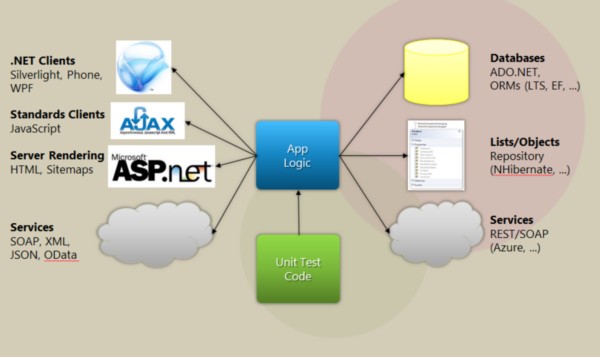
 A long-planned hearing on Capitol Hill to discuss the Federal Communications Commission's Broadband Plan took on new meaning yesterday, a week after
A long-planned hearing on Capitol Hill to discuss the Federal Communications Commission's Broadband Plan took on new meaning yesterday, a week after  What saved Intel's neck during the worst part of the last economic downturn was the Atom processor, the heart of netbooks that started selling well as consumers' budgets tightened. Now that the 2008-09 dip is over, and even businesses' budget belts are loosening, the company's attention returns to the server side of the equation.
What saved Intel's neck during the worst part of the last economic downturn was the Atom processor, the heart of netbooks that started selling well as consumers' budgets tightened. Now that the 2008-09 dip is over, and even businesses' budget belts are loosening, the company's attention returns to the server side of the equation. In the history of anything whatsoever, timing is rarely, if ever, coincidental. More often these days, however, the strategy behind it looks confusing. Just days before it's scheduled to hold its developers conference in San Francisco (tomorrow and Thursday), Twitter revealed that it is in the process of either acquiring or building applications that will compete directly with the Twitter clients these developers will be taught how to build.
In the history of anything whatsoever, timing is rarely, if ever, coincidental. More often these days, however, the strategy behind it looks confusing. Just days before it's scheduled to hold its developers conference in San Francisco (tomorrow and Thursday), Twitter revealed that it is in the process of either acquiring or building applications that will compete directly with the Twitter clients these developers will be taught how to build.
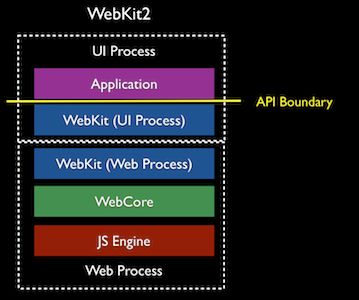 "Notice that there is now a process boundary, and it sits below the API boundary," reads
"Notice that there is now a process boundary, and it sits below the API boundary," reads  In a pair of blog posts since
In a pair of blog posts since  It was perhaps one of the most drawn-out, painful launches in Intel's long history: the introduction last February of Tukwila, the latest generation of its Itanium 64-bit processor architecture. Not everyone in the Itanium Solutions Alliance hung on for the five-year ride, with Unisys having been its most prominent drop-out last year, citing competitor HP's dominance in the field. Microsoft held on for the entire stretch; but last week, the company announced it would not lend its support to whatever the generation after Tukwila might become.
It was perhaps one of the most drawn-out, painful launches in Intel's long history: the introduction last February of Tukwila, the latest generation of its Itanium 64-bit processor architecture. Not everyone in the Itanium Solutions Alliance hung on for the five-year ride, with Unisys having been its most prominent drop-out last year, citing competitor HP's dominance in the field. Microsoft held on for the entire stretch; but last week, the company announced it would not lend its support to whatever the generation after Tukwila might become. "At the national level, establishing a public performance right in sound recordings and eliminating the exemption for terrestrial broadcasters follows principles of US copyright law," wrote Kerry, the brother of the Senate Foreign Relations Committee Chairman and former presidential candidate. "In the words of the Supreme Court, 'The encouragement of individual effort by personal gain is the best way to advance public welfare through the talents of authors and inventors...' Consistent with this historic rationale for copyright, providing fair compensation to America's performers and record companies through a broad public performance right in sound recordings is a matter of fundamental fairness to performers. It would also provide a level playing field for all broadcasters to compete in the current environment of rapid technological change, including the Internet, satellite, and terrestrial broadcasters. In today's digital music marketplace, where US performers and record labels are facing both unprecedented challenges and opportunities, the Department believes that providing such incentives for America's performing artists and recording companies is more important than ever."
"At the national level, establishing a public performance right in sound recordings and eliminating the exemption for terrestrial broadcasters follows principles of US copyright law," wrote Kerry, the brother of the Senate Foreign Relations Committee Chairman and former presidential candidate. "In the words of the Supreme Court, 'The encouragement of individual effort by personal gain is the best way to advance public welfare through the talents of authors and inventors...' Consistent with this historic rationale for copyright, providing fair compensation to America's performers and record companies through a broad public performance right in sound recordings is a matter of fundamental fairness to performers. It would also provide a level playing field for all broadcasters to compete in the current environment of rapid technological change, including the Internet, satellite, and terrestrial broadcasters. In today's digital music marketplace, where US performers and record labels are facing both unprecedented challenges and opportunities, the Department believes that providing such incentives for America's performing artists and recording companies is more important than ever."






 In the latest check of progress in the development of the major Web browsers for Windows, the brand that helped Betanews launch its regular browser performance tests appears to be making a comeback effort: With each new daily build, the WebKit browser engine -- running in Apple's Safari 4.0.5 chassis -- gains computational speed that it was sorely lacking.
In the latest check of progress in the development of the major Web browsers for Windows, the brand that helped Betanews launch its regular browser performance tests appears to be making a comeback effort: With each new daily build, the WebKit browser engine -- running in Apple's Safari 4.0.5 chassis -- gains computational speed that it was sorely lacking.








 Although
Although  By mid-morning, however, it appeared the gig was up, as every request for a proxy connection ended up being blocked. ChinaChannel rotates its proxy requests through a list of services (including aiya.com.cn, chinanetcenter.com, and a few services whose names are now blanked out in their "Access Denied" messages) that, at one time, were open. Requests to Aiya were met with this message: "Access control configuration prevents your request from being allowed at this time. Please contact your service provider if you feel this is incorrect."
By mid-morning, however, it appeared the gig was up, as every request for a proxy connection ended up being blocked. ChinaChannel rotates its proxy requests through a list of services (including aiya.com.cn, chinanetcenter.com, and a few services whose names are now blanked out in their "Access Denied" messages) that, at one time, were open. Requests to Aiya were met with this message: "Access control configuration prevents your request from being allowed at this time. Please contact your service provider if you feel this is incorrect."

 Microsoft's choice not to provide a migration path for mobile apps developers to move their native code from Windows Mobile 6.5 to Windows Phone 7 (with one notable exception), has claimed its biggest casualty to date: Mozilla, whose Firefox Mobile project, codenamed "Fennec," appeared to be the most promising alternative browser to IE Mobile, will discontinue development for all Microsoft handset platforms including Windows Mobile 6.5. This announcement was made yesterday by Mozilla mobile project leader Stuart Parmenter.
Microsoft's choice not to provide a migration path for mobile apps developers to move their native code from Windows Mobile 6.5 to Windows Phone 7 (with one notable exception), has claimed its biggest casualty to date: Mozilla, whose Firefox Mobile project, codenamed "Fennec," appeared to be the most promising alternative browser to IE Mobile, will discontinue development for all Microsoft handset platforms including Windows Mobile 6.5. This announcement was made yesterday by Mozilla mobile project leader Stuart Parmenter.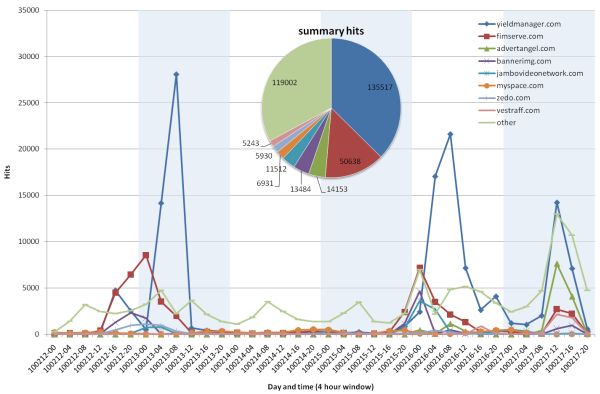
 Version 196.75 of Nvidia's GeForce/Ion drivers were indeed responsible for fan overheating problems reported by users. That's the verdict from Nvidia, which in a second round of responses to customer concerns has released version 197.73, which it assures users doesn't have the problem.
Version 196.75 of Nvidia's GeForce/Ion drivers were indeed responsible for fan overheating problems reported by users. That's the verdict from Nvidia, which in a second round of responses to customer concerns has released version 197.73, which it assures users doesn't have the problem.

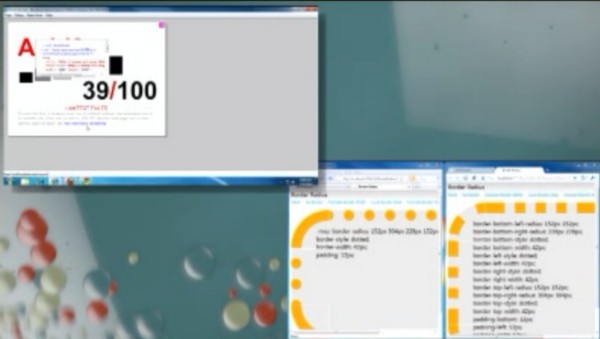
 Meanwhile, the IE9 preview posts a 55% score on
Meanwhile, the IE9 preview posts a 55% score on  HTML 5 in large print, SVG in small print
HTML 5 in large print, SVG in small print

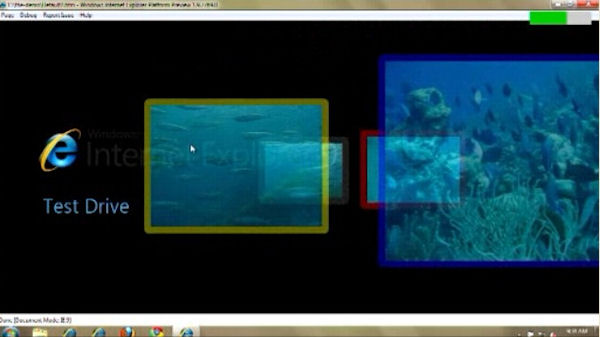
 This afternoon, Microsoft lifted the curtain on the first Internet Explorer 9 technology preview for developers. Initial demos at MIX 10 in Las Vegas by IE9 team leader Dean Hachamovitch reveal a minimum of end user features at this point -- the preview is described as a lightweight frame on top of a highly improved chassis.
This afternoon, Microsoft lifted the curtain on the first Internet Explorer 9 technology preview for developers. Initial demos at MIX 10 in Las Vegas by IE9 team leader Dean Hachamovitch reveal a minimum of end user features at this point -- the preview is described as a lightweight frame on top of a highly improved chassis.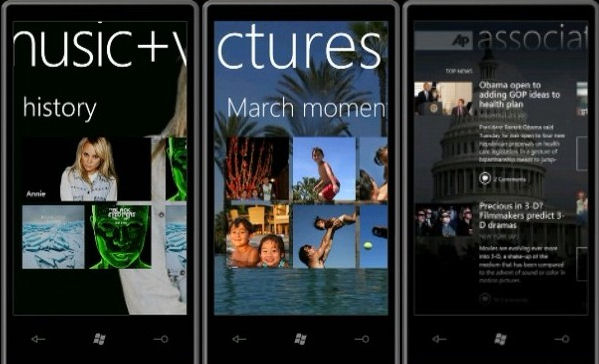


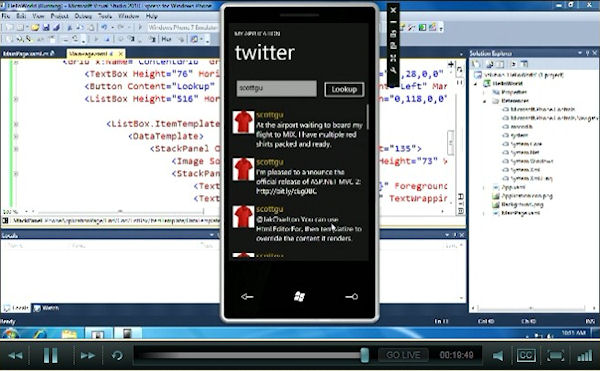


 The apps demonstrations were rapid-fire this morning, which is actually a bit unusual for a Microsoft conference that typically demos tools and PC applications in a casual fashion. Helping WP7S to lay some claim to coolness, Microsoft's Jeff Sandquist successfully demonstrated a good-looking, easy-to-use version of an app/service made popular on the iPhone: Shazam. And surprise, wouldn't you know it, it just happened to successfully identify the song "I'm a Bee" by The Black-Eyed Peas (good thing it was censored a bit; this is, after all, a family-friendly conference). I wonder whether Shazam would have recognized the Neil Innes version?
The apps demonstrations were rapid-fire this morning, which is actually a bit unusual for a Microsoft conference that typically demos tools and PC applications in a casual fashion. Helping WP7S to lay some claim to coolness, Microsoft's Jeff Sandquist successfully demonstrated a good-looking, easy-to-use version of an app/service made popular on the iPhone: Shazam. And surprise, wouldn't you know it, it just happened to successfully identify the song "I'm a Bee" by The Black-Eyed Peas (good thing it was censored a bit; this is, after all, a family-friendly conference). I wonder whether Shazam would have recognized the Neil Innes version?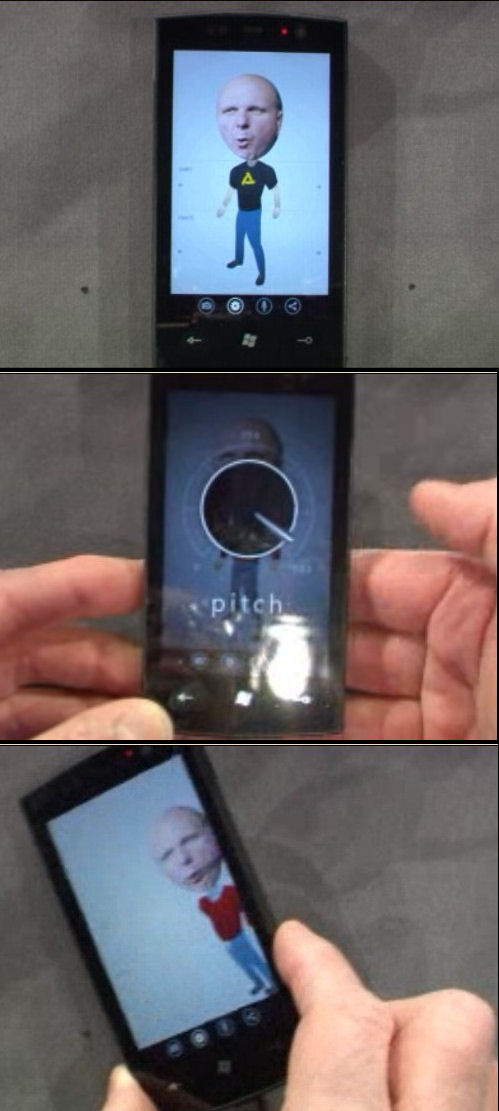 And while we're on the subject of family friendliness, what's a Microsoft conference without a little torture? Taking after the Nintendo Wii's implementation of "Mii's" -- the little people you create to look like you, or like someone, to play your games for you inside the Wii environment -- Scott Guthrie showed off a little Windows Phone "tool" called "Mannequin." It's a little doll you can dress up and manipulate using the phone's multitouch, whom you can carry around with you (be careful not to shake the phone too hard), and whom you can torture at your leisure.
And while we're on the subject of family friendliness, what's a Microsoft conference without a little torture? Taking after the Nintendo Wii's implementation of "Mii's" -- the little people you create to look like you, or like someone, to play your games for you inside the Wii environment -- Scott Guthrie showed off a little Windows Phone "tool" called "Mannequin." It's a little doll you can dress up and manipulate using the phone's multitouch, whom you can carry around with you (be careful not to shake the phone too hard), and whom you can torture at your leisure.
 Screenshot of an early build of the Icarus Scene Engine, an OpenGL-based 3D scene editor that is itself rendered in 3D, using the
Screenshot of an early build of the Icarus Scene Engine, an OpenGL-based 3D scene editor that is itself rendered in 3D, using the 
 The nice thing about the Internet, or so I've been told, is that it has all this information. Perhaps you've noticed this lately, but the big problem has been that there's no one way to get at this information with any kind of consistency.
The nice thing about the Internet, or so I've been told, is that it has all this information. Perhaps you've noticed this lately, but the big problem has been that there's no one way to get at this information with any kind of consistency. Here's what I mean: This screenshot shows the suggested route from one of my favorite neighborhood pizza joints to Conseco downtown. Now, Google knows that Allisonville Road recently added a bike lane (not a good one, it's in dotted green), that it leads to a nicely protected sidewalk down Fall Creek Parkway, and that would be the most direct route downtown. Indeed, if I were a pedestrian, that's the route it would suggest. But as a cyclist, I know that's not the route I want -- crossing onto Fall Creek over Binford Blvd. means running across ten lanes of traffic without a crosswalk, where motorists are speeding through on a shortcut to I-69.
Here's what I mean: This screenshot shows the suggested route from one of my favorite neighborhood pizza joints to Conseco downtown. Now, Google knows that Allisonville Road recently added a bike lane (not a good one, it's in dotted green), that it leads to a nicely protected sidewalk down Fall Creek Parkway, and that would be the most direct route downtown. Indeed, if I were a pedestrian, that's the route it would suggest. But as a cyclist, I know that's not the route I want -- crossing onto Fall Creek over Binford Blvd. means running across ten lanes of traffic without a crosswalk, where motorists are speeding through on a shortcut to I-69.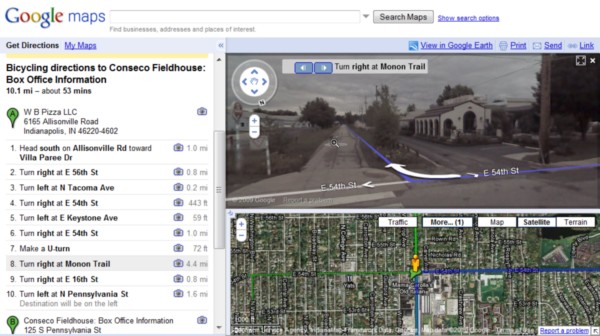
 But it can only do this if it gets its front end right first. The slightly incorrect portion of its suggested route for my trip downtown was a 72-foot diversion that actually does show up when you zoom in the map. But partly because the granularity of the line-dragging routine does not appear to be as fine as the map's own zoom capability, and partly because the U-turn is a three-step process which Google Maps presumes must lead from point to point to point in every circumstance, my attempt to simply shave off the U-turn in the directions was mistaken as a way for me to take a lap around the strip mall parking lot, shown here.
But it can only do this if it gets its front end right first. The slightly incorrect portion of its suggested route for my trip downtown was a 72-foot diversion that actually does show up when you zoom in the map. But partly because the granularity of the line-dragging routine does not appear to be as fine as the map's own zoom capability, and partly because the U-turn is a three-step process which Google Maps presumes must lead from point to point to point in every circumstance, my attempt to simply shave off the U-turn in the directions was mistaken as a way for me to take a lap around the strip mall parking lot, shown here.

 11:10 pm EST March 9, 2010 · "The Google Apps Marketplace...[is] a great way to discover, to find, and install applications into your business. But not just any applications -- applications that are deeply integrated with Google Apps...that enable a single sign-on, that enable different kinds of cloud-based software to share data," explained Vice President of Engineering Vic Gondotra to the Campfire One attendees. "Applications that integrate with the navigation, integrate with the user interface of the tools that your employees already know and love and use every day."
11:10 pm EST March 9, 2010 · "The Google Apps Marketplace...[is] a great way to discover, to find, and install applications into your business. But not just any applications -- applications that are deeply integrated with Google Apps...that enable a single sign-on, that enable different kinds of cloud-based software to share data," explained Vice President of Engineering Vic Gondotra to the Campfire One attendees. "Applications that integrate with the navigation, integrate with the user interface of the tools that your employees already know and love and use every day."
 Glaser outlined another point of connection: "If you've ever used Google Apps, you've noticed at the top left of the screen, right above your mail or your calendar, there's a nav bar. That means you're a click or two away from getting at any of the other apps in the Google Apps suite...Well, if you have an application, you probably want it to be a part of the same navigation model, part of the same nav bar, so your users are a click or two away from not only the built-in Google Apps, but also from your app. How do you do that? You put an entry in the manifest -- a few lines of XML, you tell us, 'Here's the string that I want to have show up in the menu, and here's the link that it should go to when somebody clicks on it.'"
Glaser outlined another point of connection: "If you've ever used Google Apps, you've noticed at the top left of the screen, right above your mail or your calendar, there's a nav bar. That means you're a click or two away from getting at any of the other apps in the Google Apps suite...Well, if you have an application, you probably want it to be a part of the same navigation model, part of the same nav bar, so your users are a click or two away from not only the built-in Google Apps, but also from your app. How do you do that? You put an entry in the manifest -- a few lines of XML, you tell us, 'Here's the string that I want to have show up in the menu, and here's the link that it should go to when somebody clicks on it.'"

 With the economic sinkhole of 2008-09 now a figment of many technology companies' past, most PC manufacturers are back on their regularly scheduled growth curve. Last month, Dell had indicated to investors that it was returning to that curve as well, reporting "product shipments...up at double-digit rates year-over-year" during its end-of-fiscal year 2010 earnings report.
With the economic sinkhole of 2008-09 now a figment of many technology companies' past, most PC manufacturers are back on their regularly scheduled growth curve. Last month, Dell had indicated to investors that it was returning to that curve as well, reporting "product shipments...up at double-digit rates year-over-year" during its end-of-fiscal year 2010 earnings report.
 Should the next version of HTML, the Web standard that embodies how pages are laid out and constructed, include explicit specifications for inline, 2D dynamic graphics? There's valid arguments on both sides. One side believes that the ability to plot charts and animations would have been part of the original HTML standard anyway, had the technology existed on the back end in the beginning; giving HTML 2D graphics now, they say, plugs a hole left open for too long. Another believes the HTML5 standard should simply specify an API for plug-ins, to let separate groups of engineers evolve a methodology for plotting graphics at their own pace, and on their own track.
Should the next version of HTML, the Web standard that embodies how pages are laid out and constructed, include explicit specifications for inline, 2D dynamic graphics? There's valid arguments on both sides. One side believes that the ability to plot charts and animations would have been part of the original HTML standard anyway, had the technology existed on the back end in the beginning; giving HTML 2D graphics now, they say, plugs a hole left open for too long. Another believes the HTML5 standard should simply specify an API for plug-ins, to let separate groups of engineers evolve a methodology for plotting graphics at their own pace, and on their own track.
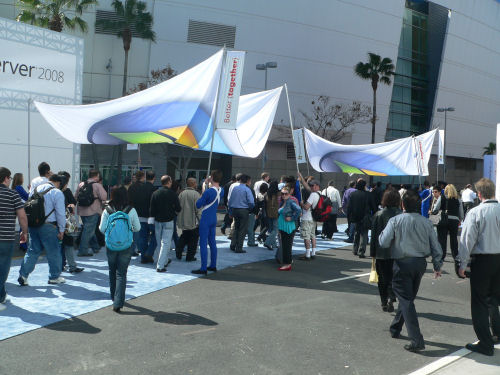 Two years ago, during a private premiere event entitled "Heroes Happen Here" held at the same Nokia Theater in Los Angeles where the Emmy Awards are now staged, and introduced by none other than Tom Brokaw, Microsoft rolled out a truckload of new server software product lines to help cement the company's new prominence in businesses and enterprises. One of the "heroes" that day, as Microsoft phrased it, was
Two years ago, during a private premiere event entitled "Heroes Happen Here" held at the same Nokia Theater in Los Angeles where the Emmy Awards are now staged, and introduced by none other than Tom Brokaw, Microsoft rolled out a truckload of new server software product lines to help cement the company's new prominence in businesses and enterprises. One of the "heroes" that day, as Microsoft phrased it, was  "And then there's a question of who would pay for that," he said. "Well, maybe markets will make it work, but if not, there are other models: use taxes for those who use the Internet. We pay a fee to put phone service in rural areas, we pay a tax on our airline ticket for security. You could say it's a public safety issue and do it with general taxation."
"And then there's a question of who would pay for that," he said. "Well, maybe markets will make it work, but if not, there are other models: use taxes for those who use the Internet. We pay a fee to put phone service in rural areas, we pay a tax on our airline ticket for security. You could say it's a public safety issue and do it with general taxation."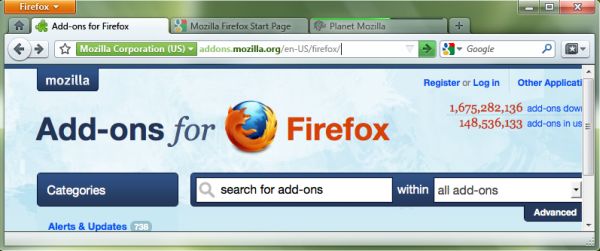


 In a precedent-setting win for the company perceived as the originator of "time-shift" video recording, the Federal Circuit Court of Appeals has fully affirmed a lower court's judgment that satellite service provider EchoStar's software continued to infringe upon TiVo's patents even after making significant changes to address its complaints. This despite what EchoStar (whose DVR boxes are also used by former sister company Dish Network) had called "Herculean" efforts to steer clear of TiVo's intellectual property, and a
In a precedent-setting win for the company perceived as the originator of "time-shift" video recording, the Federal Circuit Court of Appeals has fully affirmed a lower court's judgment that satellite service provider EchoStar's software continued to infringe upon TiVo's patents even after making significant changes to address its complaints. This despite what EchoStar (whose DVR boxes are also used by former sister company Dish Network) had called "Herculean" efforts to steer clear of TiVo's intellectual property, and a 





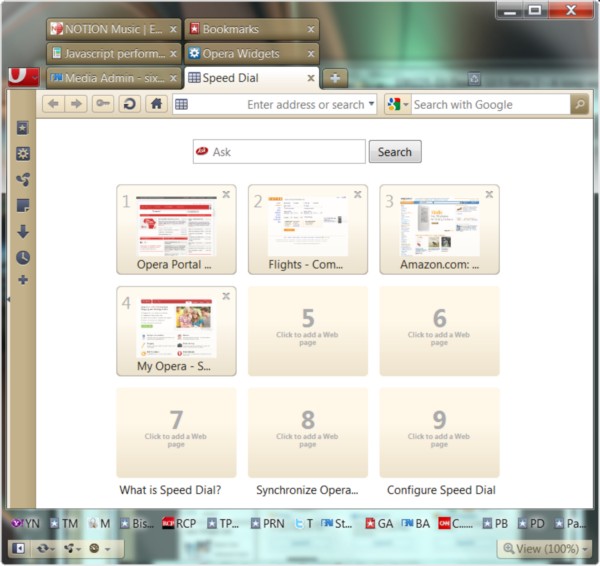
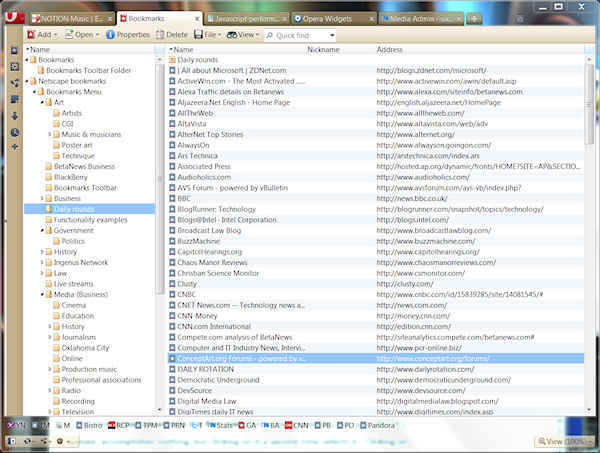
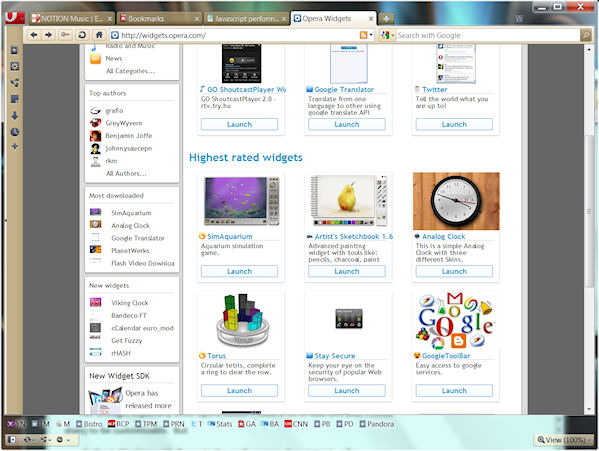


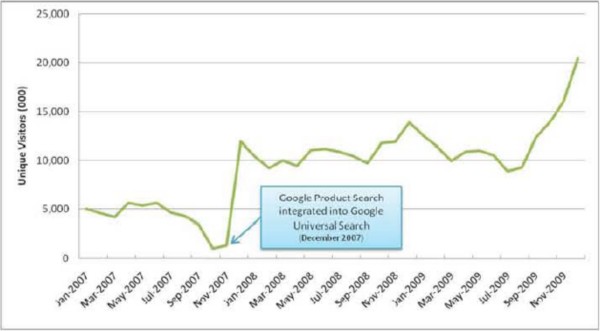
 Italian Prime Minister Silvio Berlusconi continues to own some of that country's largest publishing and broadcasting institutions, including Mediaset. That corporation filed a half-billion euro lawsuit against YouTube in July 2008, ordering it to remove all instances of copyrighted content that allegedly infringe upon Mediaset's portfolio -- including clips from soccer games and the reality show "Big Brother." Each hour someone watches Il Grande Fratello on YouTube is one less hour of watching it on Canale 5. Last December, a Rome court ruled in Mediaset's favor.
Italian Prime Minister Silvio Berlusconi continues to own some of that country's largest publishing and broadcasting institutions, including Mediaset. That corporation filed a half-billion euro lawsuit against YouTube in July 2008, ordering it to remove all instances of copyrighted content that allegedly infringe upon Mediaset's portfolio -- including clips from soccer games and the reality show "Big Brother." Each hour someone watches Il Grande Fratello on YouTube is one less hour of watching it on Canale 5. Last December, a Rome court ruled in Mediaset's favor. For any other company besides Google, a week like this would be interpreted by some in the press as the beginning of the end, and it's only Wednesday. However, an individual breakdown of every bad story, element by element, reveals the company may not be deluged so much by a hailstorm of controversy as a cavalcade of unfortunately simultaneous snowballs, none of which may end up leaving any lasting damage.
For any other company besides Google, a week like this would be interpreted by some in the press as the beginning of the end, and it's only Wednesday. However, an individual breakdown of every bad story, element by element, reveals the company may not be deluged so much by a hailstorm of controversy as a cavalcade of unfortunately simultaneous snowballs, none of which may end up leaving any lasting damage.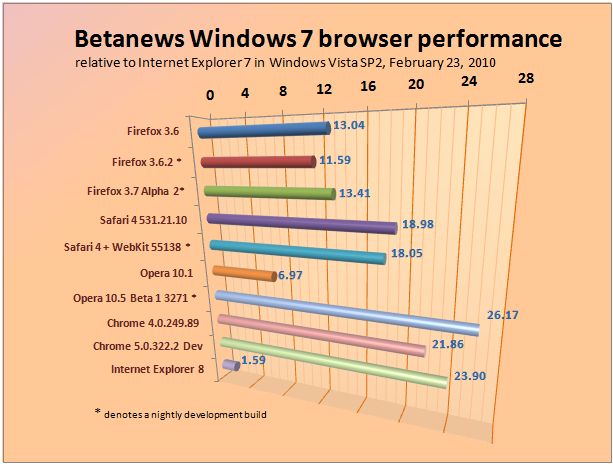

 One of the more obvious, but little mentioned, facts about the upcoming Windows Web browser "choice screen," to be
One of the more obvious, but little mentioned, facts about the upcoming Windows Web browser "choice screen," to be 
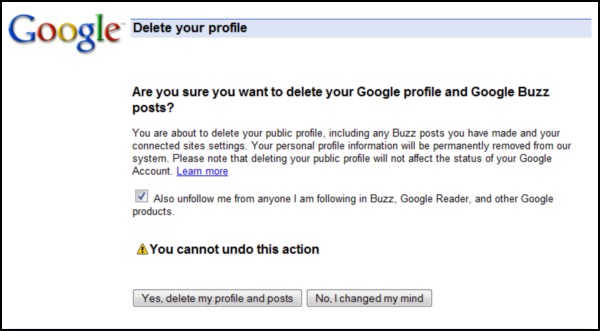






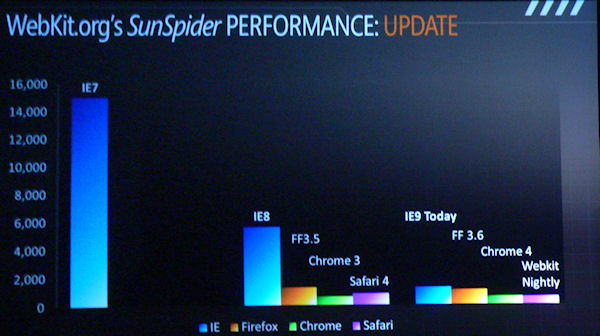

 "Building world-class broadband that connects all Americans is our generation's great infrastructure challenge," the Chairman told the audience of state public utility commission members. "Some compare high-speed Internet to building the interstate highway system in the 1950s. It's a tempting comparison, but imperfect. In terms of transformative power, broadband is more akin to the advent of electricity. Both broadband and electricity are what some call 'general purpose technologies' -- technologies that are a means to a great many ends, enabling innovations in a wide array of human endeavors. Electricity reshaped the world -- extending day into night, kicking the Industrial Revolution into overdrive, and enabling the invention of a countless number of devices and equipment that today we can't imagine being without. Now in the 21st century, it is high-speed Internet that is reshaping our economy and our lives more profoundly than any technology since electricity, and with at least as much potential for advancing prosperity and opportunity, creating jobs, and improving our lives."
"Building world-class broadband that connects all Americans is our generation's great infrastructure challenge," the Chairman told the audience of state public utility commission members. "Some compare high-speed Internet to building the interstate highway system in the 1950s. It's a tempting comparison, but imperfect. In terms of transformative power, broadband is more akin to the advent of electricity. Both broadband and electricity are what some call 'general purpose technologies' -- technologies that are a means to a great many ends, enabling innovations in a wide array of human endeavors. Electricity reshaped the world -- extending day into night, kicking the Industrial Revolution into overdrive, and enabling the invention of a countless number of devices and equipment that today we can't imagine being without. Now in the 21st century, it is high-speed Internet that is reshaping our economy and our lives more profoundly than any technology since electricity, and with at least as much potential for advancing prosperity and opportunity, creating jobs, and improving our lives."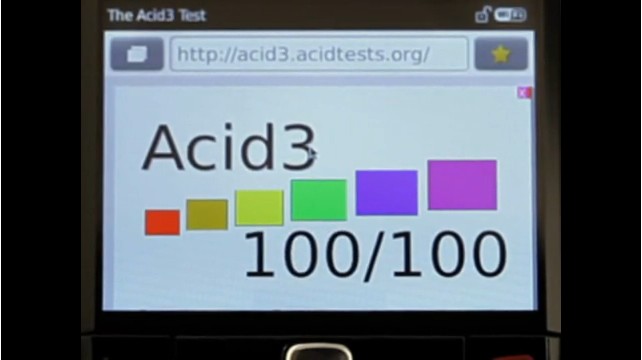

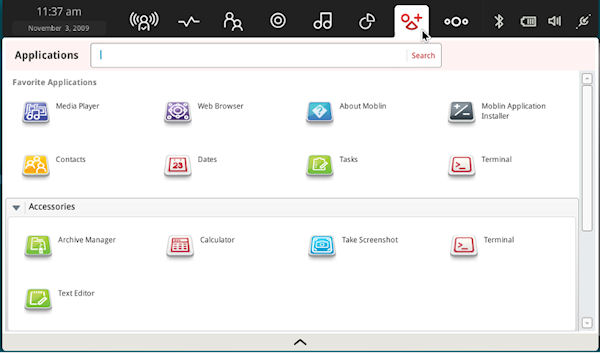

![A snippet from the activities list that appears beside a contact or a contact's e-mail message, in Outlook 2010 with Social Connector attached. [Courtesy Microsoft]](http://images.betanews.com/media/4525.jpg)
![Microsoft's screenshot of an early build of Office 2011 for Mac, now featuring the ribbon. [Courtesy Microsoft.]](http://images.betanews.com/media/4522.jpg)

 The idea of making the ribbon subdivisions into tabs came after the initial design was shown off to the public. In this 2005 screenshot from Excel above, as well as in this blow-up from Word at left, you see how the frame categories (at one time, folks experimented with calling them "drawers," but thankfully that never caught on) were printed on top of the frame. The user clicked the little plus sign that pointed up, to pull up a dialog box with expanded options below -- which didn't make sense.
Granted, on the Mac, the system clipboard is a sacrosanct Apple property. Still, it is the tool with which one cuts, copies, and pastes, even if she's accustomed to typing Command-X, Command-C, or Command-V to do it. Ever since the beginning of the ribbon project in Office 12 for Windows, designers had the objective of making cut, copy, and paste more obvious.
The idea of making the ribbon subdivisions into tabs came after the initial design was shown off to the public. In this 2005 screenshot from Excel above, as well as in this blow-up from Word at left, you see how the frame categories (at one time, folks experimented with calling them "drawers," but thankfully that never caught on) were printed on top of the frame. The user clicked the little plus sign that pointed up, to pull up a dialog box with expanded options below -- which didn't make sense.
Granted, on the Mac, the system clipboard is a sacrosanct Apple property. Still, it is the tool with which one cuts, copies, and pastes, even if she's accustomed to typing Command-X, Command-C, or Command-V to do it. Ever since the beginning of the ribbon project in Office 12 for Windows, designers had the objective of making cut, copy, and paste more obvious.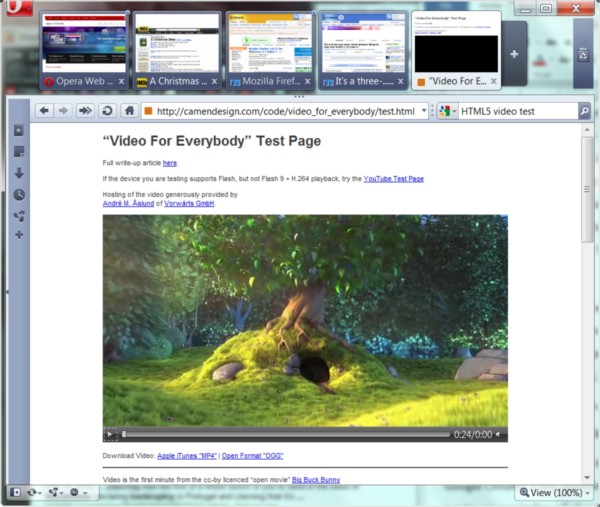
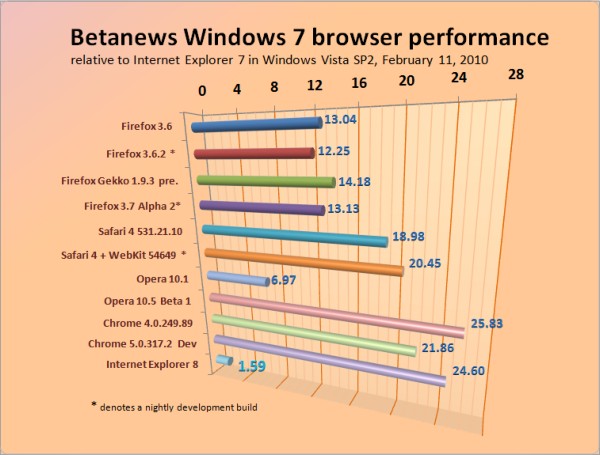

 The ability for users to not only see those contacts but prevent them from being broadcast to other users, or to the world, does exist -- perhaps not obvious, but it's there. It's the Edit link at the top of the dialog box. When you click that, the dialog box expands to let you add and remove Buzz contacts manually (we found a fellow who appears to be enjoying a cool beverage), as well as disable the broadcasting of the contacts list, in a check box marked Show the lists of people I'm following and people following me on my profile. Twitter users will be familiar with the ability to see one's followers and whom one is following; that's a feature, not an option, with that service.
The ability for users to not only see those contacts but prevent them from being broadcast to other users, or to the world, does exist -- perhaps not obvious, but it's there. It's the Edit link at the top of the dialog box. When you click that, the dialog box expands to let you add and remove Buzz contacts manually (we found a fellow who appears to be enjoying a cool beverage), as well as disable the broadcasting of the contacts list, in a check box marked Show the lists of people I'm following and people following me on my profile. Twitter users will be familiar with the ability to see one's followers and whom one is following; that's a feature, not an option, with that service. Apparently, the answer there is yes to all counts: "Buzz is designed to work with some other Google services, like Picasa, as well as some third-party sites like Flickr," Betanews was told. "Our goal is to make Buzz a fully open, distributed conversation system, and that includes connecting with a variety of services that are popular among our users. Right now, comments write back to Google Reader: The comment streams are totally merged, so if you comment on someone's shared item in Reader, that same comment will appear in Buzz, and vice versa. That is not the case for other services connected to Buzz. In the future, we'd like to enable this for other connected sites as well."
Apparently, the answer there is yes to all counts: "Buzz is designed to work with some other Google services, like Picasa, as well as some third-party sites like Flickr," Betanews was told. "Our goal is to make Buzz a fully open, distributed conversation system, and that includes connecting with a variety of services that are popular among our users. Right now, comments write back to Google Reader: The comment streams are totally merged, so if you comment on someone's shared item in Reader, that same comment will appear in Buzz, and vice versa. That is not the case for other services connected to Buzz. In the future, we'd like to enable this for other connected sites as well." A defect in the protocol that secures monetary exchanges and other private transactions throughout the Web,
A defect in the protocol that secures monetary exchanges and other private transactions throughout the Web, 
 Last September,
Last September,  During the few comments he was asked to make during his testimony before the House Telecommunications and Internet Subcommittee earlier today, NBC Universal President and CEO Jeff Zucker was
During the few comments he was asked to make during his testimony before the House Telecommunications and Internet Subcommittee earlier today, NBC Universal President and CEO Jeff Zucker was  In the end, it was one lone congressman who raised the subject of net neutrality, with respect to access to content over the Internet, as more than a passing reference, or by way of suggesting that certain topics be ignored altogether: Rep. Ed Markey (D - Mass., who also chairs the Energy and Environment Subcommittee), author of the Internet Freedom Preservation Act still being deliberated in Congress, voiced his skepticism over the viability of the proposed acquisition of NBC Universal by a new unit of Comcast, saying he didn't see any guarantees that the current class of over-the-air programming offered by NBC would not be transferred to Comcast pay-TV services such as TV Everywhere.
In the end, it was one lone congressman who raised the subject of net neutrality, with respect to access to content over the Internet, as more than a passing reference, or by way of suggesting that certain topics be ignored altogether: Rep. Ed Markey (D - Mass., who also chairs the Energy and Environment Subcommittee), author of the Internet Freedom Preservation Act still being deliberated in Congress, voiced his skepticism over the viability of the proposed acquisition of NBC Universal by a new unit of Comcast, saying he didn't see any guarantees that the current class of over-the-air programming offered by NBC would not be transferred to Comcast pay-TV services such as TV Everywhere. "I would first want to point out that, whatever you do, if you're really trying to make that protection or achieve that goal, it's going to have to apply across the board," responded Comcast's Roberts to Rep. Markey, "whether that's to all providers, what levels of the Internet, what about wireless? The world is changing and converging and evolving very, very quickly. So again, I believe that this particular transaction doesn't really have the potential, in my opinion, to change that kid in the garage or that 'AvatarTV.com,' or whatever example one wants to pick. Let's just say, Google today is over 50% of all the video views, of the 30 billion views that took place last month."
"I would first want to point out that, whatever you do, if you're really trying to make that protection or achieve that goal, it's going to have to apply across the board," responded Comcast's Roberts to Rep. Markey, "whether that's to all providers, what levels of the Internet, what about wireless? The world is changing and converging and evolving very, very quickly. So again, I believe that this particular transaction doesn't really have the potential, in my opinion, to change that kid in the garage or that 'AvatarTV.com,' or whatever example one wants to pick. Let's just say, Google today is over 50% of all the video views, of the 30 billion views that took place last month." Committee Chairman Rep. Rick Boucher (D - Va.) turned up at least a few ticks more heat than Rep. Markey, by bringing up the subject of Boxee, the media center software that last spring
Committee Chairman Rep. Rick Boucher (D - Va.) turned up at least a few ticks more heat than Rep. Markey, by bringing up the subject of Boxee, the media center software that last spring  One of Rep. Henry Waxman's (D - Calif.) perennially key issues has been content protection, and the need to craft digital content to prevent theft and piracy. With NBCU's content being added to the production catalog of Comcast, Rep. Waxman asked Roberts, would Comcast be more compelled to provide more of a leadership role in taking steps to reduce online content theft?
One of Rep. Henry Waxman's (D - Calif.) perennially key issues has been content protection, and the need to craft digital content to prevent theft and piracy. With NBCU's content being added to the production catalog of Comcast, Rep. Waxman asked Roberts, would Comcast be more compelled to provide more of a leadership role in taking steps to reduce online content theft? "Frankly, we see it as an effort to extend the market division agreement that has existed between cable operators in the physical space, into cyberspace," Cooper told Rep. Dingell. That is the explicit intention of TV Everywhere. The statement that they will not use NBC properties to reinforce that does not answer our concerns, because NBC will stop developing altogether --." At that point, Dingell cut him off.
"Frankly, we see it as an effort to extend the market division agreement that has existed between cable operators in the physical space, into cyberspace," Cooper told Rep. Dingell. That is the explicit intention of TV Everywhere. The statement that they will not use NBC properties to reinforce that does not answer our concerns, because NBC will stop developing altogether --." At that point, Dingell cut him off.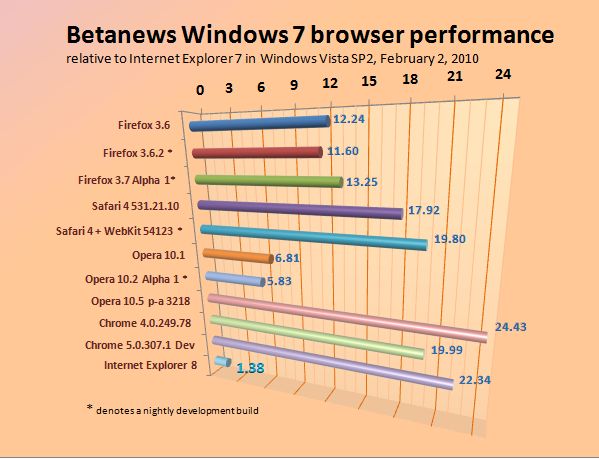
 Late yesterday afternoon, right on schedule, Microsoft announced the "general availability" of Windows Azure, its cloud-based hosting service for .NET applications. With a release like this, "GA" is somewhat peculiar, especially since the service has actually been in operation for several months. But it does mean that a ribbon has been cut, and from now on, new accounts are being signed up as commercial licenses. Old accounts are being given the warning to either convert or jump ship.
Late yesterday afternoon, right on schedule, Microsoft announced the "general availability" of Windows Azure, its cloud-based hosting service for .NET applications. With a release like this, "GA" is somewhat peculiar, especially since the service has actually been in operation for several months. But it does mean that a ribbon has been cut, and from now on, new accounts are being signed up as commercial licenses. Old accounts are being given the warning to either convert or jump ship.
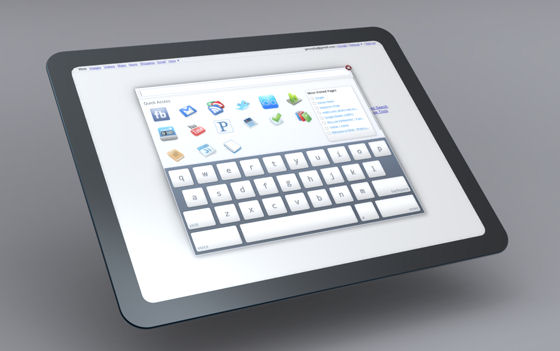
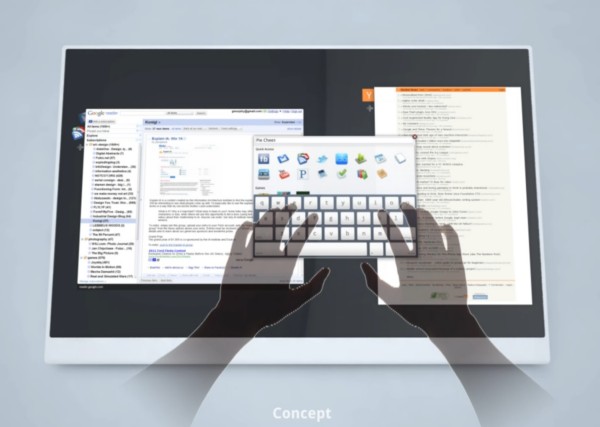
 One of the principal factors behind Facebook's revision of its privacy policies has been said to be a formal complaint filed by the office of Canada's Privacy Commissioner last July. That complaint alleged that the leading social network failed to properly disclose to its users the extent to which it could use personally identifiable information, including sharing that information with partners and advertisers. The following month, Facebook agreed to implement changes.
One of the principal factors behind Facebook's revision of its privacy policies has been said to be a formal complaint filed by the office of Canada's Privacy Commissioner last July. That complaint alleged that the leading social network failed to properly disclose to its users the extent to which it could use personally identifiable information, including sharing that information with partners and advertisers. The following month, Facebook agreed to implement changes. What I can say from tinkering with Outlook 2010 is that somebody at Microsoft gets it. Regardless of where we work, how we get to work, how much work we do when we work, or whom with work with, all of our workplaces are becoming more like virtual offices than physical ones. We're supported by the structure of our business connections with one another, as much as by steel beams and concrete. Geography is not the barricade to production that it used to be.
What I can say from tinkering with Outlook 2010 is that somebody at Microsoft gets it. Regardless of where we work, how we get to work, how much work we do when we work, or whom with work with, all of our workplaces are becoming more like virtual offices than physical ones. We're supported by the structure of our business connections with one another, as much as by steel beams and concrete. Geography is not the barricade to production that it used to be.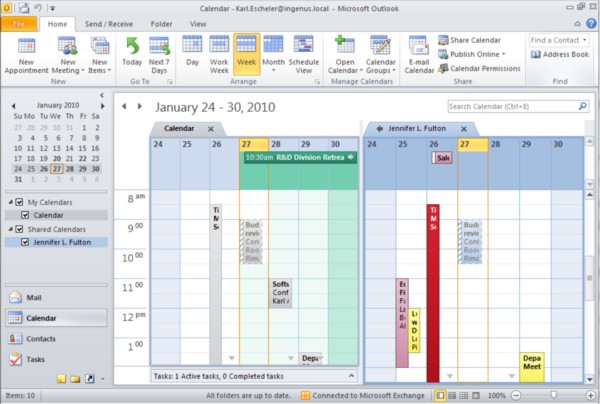
 As time steadily runs out for the US Federal Communications Commission to present to Congress its proposal for federal investment in broadband Internet communications -- a proposal that's expected to be heavily focused on wireless, which falls under the FCC's purview -- major players in the debate keep dropping show-stopper bombs into the debate. One such bomb, which
As time steadily runs out for the US Federal Communications Commission to present to Congress its proposal for federal investment in broadband Internet communications -- a proposal that's expected to be heavily focused on wireless, which falls under the FCC's purview -- major players in the debate keep dropping show-stopper bombs into the debate. One such bomb, which 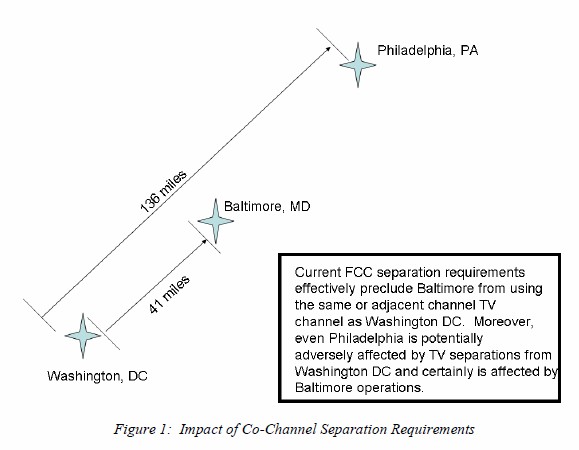
 Scott Fulton, Managing Editor, Betanews: We fully anticipate that you'll be following this morning's Apple premiere news from any one of the many gadget blogs with reporters on the scenes, working hard even as we speak to tweak the geek connections on their 3G iPhones. (Or, if they're lucky, on their Droids.) But at some point, you'll want to be able to step back out of the wilderness, as it were, to catch a breath of reality before going back in.
Scott Fulton, Managing Editor, Betanews: We fully anticipate that you'll be following this morning's Apple premiere news from any one of the many gadget blogs with reporters on the scenes, working hard even as we speak to tweak the geek connections on their 3G iPhones. (Or, if they're lucky, on their Droids.) But at some point, you'll want to be able to step back out of the wilderness, as it were, to catch a breath of reality before going back in.
 So the first add-on I began searching for from
So the first add-on I began searching for from 
 Also, if you highlight any text on any page anywhere, FastestFox will pop up a little "speaking bubble" that lets you search for more information on the highlighted text, from any of the search engines inside the bubble represented with icons.
Also, if you highlight any text on any page anywhere, FastestFox will pop up a little "speaking bubble" that lets you search for more information on the highlighted text, from any of the search engines inside the bubble represented with icons. Already, there are three approaches to this solution for Chrome that address the overcrowded horizontal tabs in a vertical way. Presented in order from minimalist to stylized:
Already, there are three approaches to this solution for Chrome that address the overcrowded horizontal tabs in a vertical way. Presented in order from minimalist to stylized: 
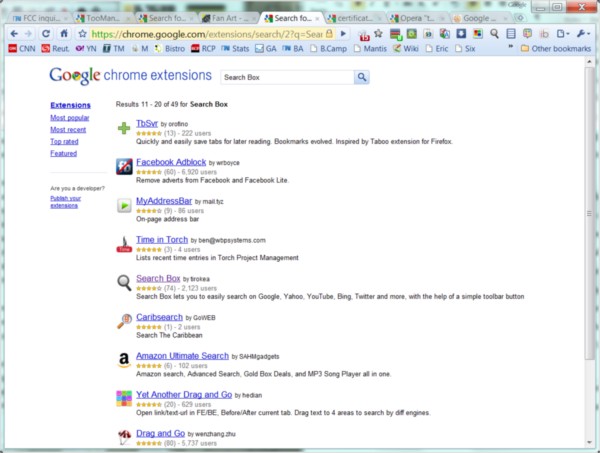
 One really big problem we face -- certainly a subject for a separate article -- is that publishers of media of all types do not believe they can capture the public's attention for any longer than a minute without promising you a slice of Armageddon.
One really big problem we face -- certainly a subject for a separate article -- is that publishers of media of all types do not believe they can capture the public's attention for any longer than a minute without promising you a slice of Armageddon. Technology platforms evolve extremely rapidly. The methods institutions choose to implement those platforms in their business, do not. Sometimes, those methods don't evolve at all.
Technology platforms evolve extremely rapidly. The methods institutions choose to implement those platforms in their business, do not. Sometimes, those methods don't evolve at all. In green-lighting
In green-lighting  Over the past few days, security engineers have warned that variations of the publicly-released Hydraq exploit are being engineered for later versions of Internet Explorer than the one targeted in the recently discovered wave of attacks against Google and others, IE6. One security researcher on the "good side," Dino Dai Zovi, claimed on Twitter earlier today he has a functional derivative of Hydraq for IE7 and IE8...kind of. To make them work, two of Windows 7's more celebrated security features -- Address Space Load Randomization and Data Execution Prevention -- have to be manually turned off first.
Over the past few days, security engineers have warned that variations of the publicly-released Hydraq exploit are being engineered for later versions of Internet Explorer than the one targeted in the recently discovered wave of attacks against Google and others, IE6. One security researcher on the "good side," Dino Dai Zovi, claimed on Twitter earlier today he has a functional derivative of Hydraq for IE7 and IE8...kind of. To make them work, two of Windows 7's more celebrated security features -- Address Space Load Randomization and Data Execution Prevention -- have to be manually turned off first. It's been said that improvements to Web browsers aren't truly improvements unless the user can both see and feel them. Mozilla's latest efforts in that area have just been finalized: a new stable version of Firefox that not only provides more control features to the new Windows 7 taskbar, but lets you paste posters on its wall.
It's been said that improvements to Web browsers aren't truly improvements unless the user can both see and feel them. Mozilla's latest efforts in that area have just been finalized: a new stable version of Firefox that not only provides more control features to the new Windows 7 taskbar, but lets you paste posters on its wall.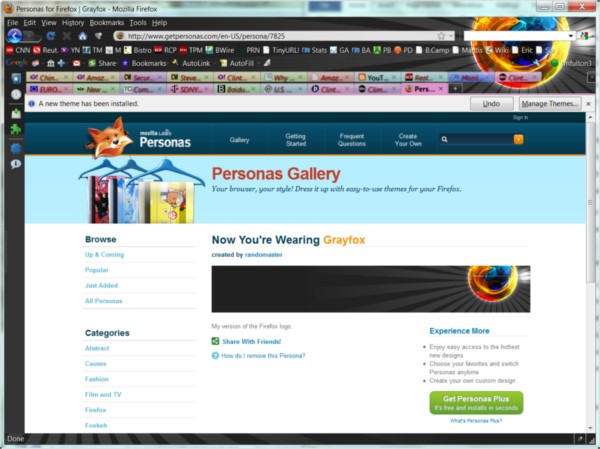
 Leading China search engine Baidu's lawsuit against US domain registrar and ISP Register.com, filed yesterday, was not at all what analysts, especially in the British press, expected it to be: There's no evidence, including in the context of its many redacted paragraphs, of any sort of "retaliation" whatsoever against Google's new public stance against China in the wake of attacks against it that it claims emanated from China. Although diplomats from both countries may continue to play the Baidu case as another volley in a brewing trade dispute, from Baidu's perspective, that's not what it is at all.
Leading China search engine Baidu's lawsuit against US domain registrar and ISP Register.com, filed yesterday, was not at all what analysts, especially in the British press, expected it to be: There's no evidence, including in the context of its many redacted paragraphs, of any sort of "retaliation" whatsoever against Google's new public stance against China in the wake of attacks against it that it claims emanated from China. Although diplomats from both countries may continue to play the Baidu case as another volley in a brewing trade dispute, from Baidu's perspective, that's not what it is at all. This afternoon, just hours following
This afternoon, just hours following  In an announcement early this morning, Microsoft stated it is altering the policy of its search engine Bing with regard to retaining personal data collected from its users. Under a new policy that may take as long as 18 months to implement, the company says, it will anonymize its data logs after only six months of retention rather than the previous 18, in compliance with a European Union directive -- perhaps the first major US-based search engine to comply.
In an announcement early this morning, Microsoft stated it is altering the policy of its search engine Bing with regard to retaining personal data collected from its users. Under a new policy that may take as long as 18 months to implement, the company says, it will anonymize its data logs after only six months of retention rather than the previous 18, in compliance with a European Union directive -- perhaps the first major US-based search engine to comply.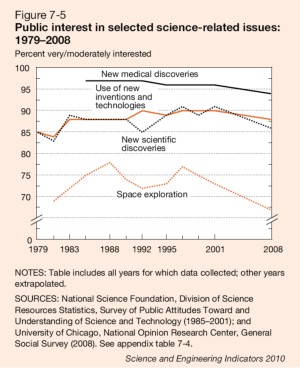 "Relative to interest in other topics, however, interest in S&T in the GSS was not particularly high," states the NSF report. "Interest in 'new scientific discoveries' and 'use of new inventions and technologies' ranked in the middle among the 10 areas most frequently listed in the surveys: above space exploration, agriculture and farming, and international and foreign policy; below new medical discoveries, environmental pollution, economic issues and business conditions, and about the same as military and defense policy and local schools. Of course, a more inclusive concept of S&T might treat several of the topics in this list, such as space exploration and new medical discoveries, as part of the S&T category; furthermore, other topics often include substantial S&T content."
"Relative to interest in other topics, however, interest in S&T in the GSS was not particularly high," states the NSF report. "Interest in 'new scientific discoveries' and 'use of new inventions and technologies' ranked in the middle among the 10 areas most frequently listed in the surveys: above space exploration, agriculture and farming, and international and foreign policy; below new medical discoveries, environmental pollution, economic issues and business conditions, and about the same as military and defense policy and local schools. Of course, a more inclusive concept of S&T might treat several of the topics in this list, such as space exploration and new medical discoveries, as part of the S&T category; furthermore, other topics often include substantial S&T content."


 Without a doubt, Android has emerged from CES 2010 as the software platform story of the year. In a strange way, the sudden surge of activity for the platform prior to CES, and even prior to Google's Nexus One announcement the day before CES, is what substantiated the presence of Android in the public discussion this year. Up until now, Linux on the smartphone has been perceived as an "alternative" to the branded systems -- last year, Android seemed to be the culmination of something going on in the "open" space, out there somewhere, categorized under "Other."
Android is not "other" any more. It is here, and very much at the center of things.
Without a doubt, Android has emerged from CES 2010 as the software platform story of the year. In a strange way, the sudden surge of activity for the platform prior to CES, and even prior to Google's Nexus One announcement the day before CES, is what substantiated the presence of Android in the public discussion this year. Up until now, Linux on the smartphone has been perceived as an "alternative" to the branded systems -- last year, Android seemed to be the culmination of something going on in the "open" space, out there somewhere, categorized under "Other."
Android is not "other" any more. It is here, and very much at the center of things.




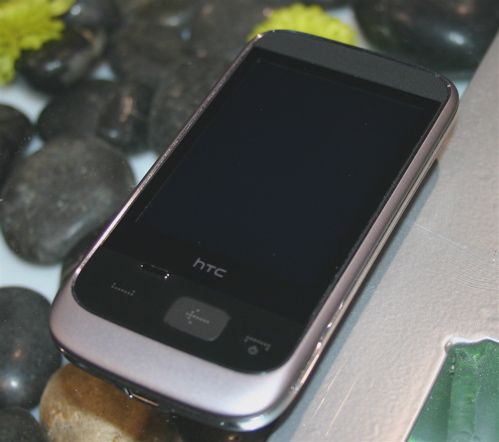
 The biggest winner overall was Qualcomm, now not only an "inside" player in platform technology but a brand that people will discuss alongside Intel and LG. Not only did Snapdragon steal folks' attention, but Qualcomm's
The biggest winner overall was Qualcomm, now not only an "inside" player in platform technology but a brand that people will discuss alongside Intel and LG. Not only did Snapdragon steal folks' attention, but Qualcomm's 
 According to multiple eyewitness reports Friday, including from
According to multiple eyewitness reports Friday, including from  In his company's first-ever keynote address to the Consumer Electronics Show Friday morning, Qualcomm CEO Dr. Paul Jacobs made a kind of prediction that appears, given his position, to inevitably become a self-fulfilling prophecy: As consumer electronics devices throughout the home, mobile space, and workplace become endowed with systems-on-a-chip that are based on wireless phone reference designs, almost everything with an on-switch will inevitably become, at its core -- whether it's used for that purpose or not -- a telephone.
In his company's first-ever keynote address to the Consumer Electronics Show Friday morning, Qualcomm CEO Dr. Paul Jacobs made a kind of prediction that appears, given his position, to inevitably become a self-fulfilling prophecy: As consumer electronics devices throughout the home, mobile space, and workplace become endowed with systems-on-a-chip that are based on wireless phone reference designs, almost everything with an on-switch will inevitably become, at its core -- whether it's used for that purpose or not -- a telephone. Among the Snapdragon-based netbooks that could take full advantage of this deal is an Android netbook whose design looks not at all unlike the "slate" PC demonstrated by Microsoft CEO Steve Ballmer Wednesday evening. Although Android was the flavor of Linux for this device, Qualcomm also lets Lenovo do its own flavor of Linux for its
Among the Snapdragon-based netbooks that could take full advantage of this deal is an Android netbook whose design looks not at all unlike the "slate" PC demonstrated by Microsoft CEO Steve Ballmer Wednesday evening. Although Android was the flavor of Linux for this device, Qualcomm also lets Lenovo do its own flavor of Linux for its 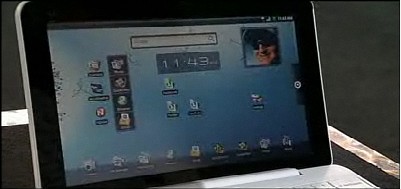


 Today, Intel CEO Paul Otellini is absolutely not expected to come to the keynote stage at CES 2010 empty-handed. Already this morning, the company launched its
Today, Intel CEO Paul Otellini is absolutely not expected to come to the keynote stage at CES 2010 empty-handed. Already this morning, the company launched its 
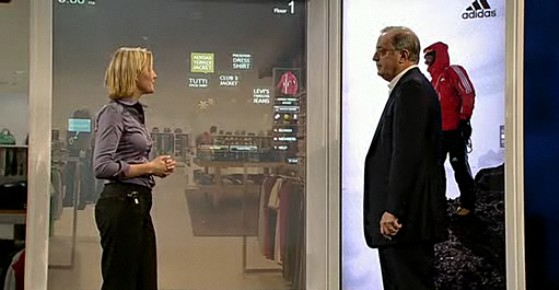

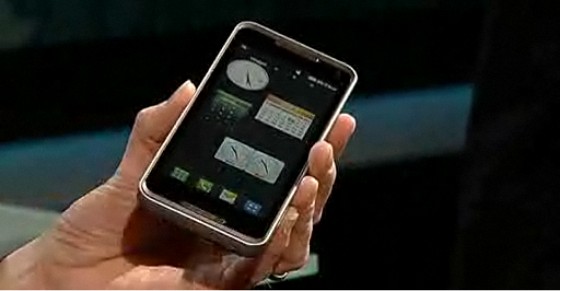
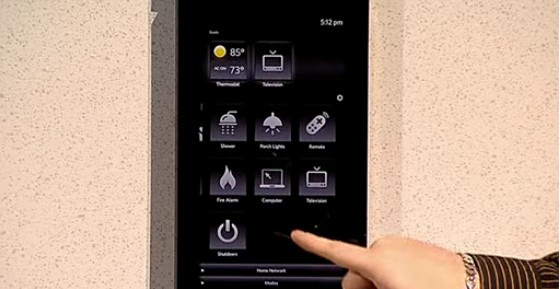
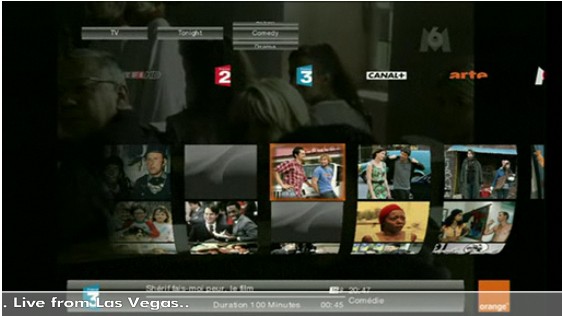



 We've seen integrated graphics from Intel for several years, integrated into the chipsets of value-priced desktop and notebook PCs. Intel's 3D rendering capability has never been superior to that of discrete GPUs such as Nvidia's or ATI's but it's never had to be. But today, adhering to a plan set out by Intel in September 2008, that integration moves one step further, moving the company's 45 nm iGFX graphics processor onto the same die along with the 32 nm Core processor.
We've seen integrated graphics from Intel for several years, integrated into the chipsets of value-priced desktop and notebook PCs. Intel's 3D rendering capability has never been superior to that of discrete GPUs such as Nvidia's or ATI's but it's never had to be. But today, adhering to a plan set out by Intel in September 2008, that integration moves one step further, moving the company's 45 nm iGFX graphics processor onto the same die along with the 32 nm Core processor.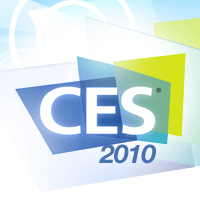 Microsoft's big theme coming out of 2009 was "Three Screens and a Cloud." Thanks to a few power outages punctuating
Microsoft's big theme coming out of 2009 was "Three Screens and a Cloud." Thanks to a few power outages punctuating ![One of the few official photos of HP's 'Slate' PC, as yet unnamed. [Courtesy HP]](http://images.betanews.com/media/4326.jpg)



 The new Google Nexus One shows 'Live Wallpaper,' with its own interactive water puddle.
The new Google Nexus One shows 'Live Wallpaper,' with its own interactive water puddle. And that was literally the end of that bullet point, as Queiroz closed his prepared remarks right there and began diverting to give credit to HTC. Although at first, Queiroz said the phone was designed in "very close partnership" with HTC, much later in the presentation, Google Vice President for engineering Andy Rubin would shift even more of the credit to HTC, telling a PC World reporter it would be "inaccurate" to describe Google as the designer of Nexus One.
And that was literally the end of that bullet point, as Queiroz closed his prepared remarks right there and began diverting to give credit to HTC. Although at first, Queiroz said the phone was designed in "very close partnership" with HTC, much later in the presentation, Google Vice President for engineering Andy Rubin would shift even more of the credit to HTC, telling a PC World reporter it would be "inaccurate" to describe Google as the designer of Nexus One. "It's pretty great that I can actually enable a search box with voice," stated senior product manager Eric Tseng, "but what if I could enable every single text field in the phone with voice as well? What if I could speak my tweets? What if I could speak my Facebook posts? What if I could actually compose a whole e-mail just by speaking it?"
"It's pretty great that I can actually enable a search box with voice," stated senior product manager Eric Tseng, "but what if I could enable every single text field in the phone with voice as well? What if I could speak my tweets? What if I could speak my Facebook posts? What if I could actually compose a whole e-mail just by speaking it?" The first and only view of the on-screen keyboard for Nexus One, which popped up during a demonstration of voice typing.
The first and only view of the on-screen keyboard for Nexus One, which popped up during a demonstration of voice typing. Motorola's mobile device CEO Sanjay Jha was on hand today to acknowledge that the Nexus One, a device built by rival manufacturer HTC, was in some ways slightly superior to the Droid phone that Motorola currently sells -- a model that is believed to have been a holiday blessing for Motorola. Not that Jha would stand being edged out for very long, perhaps not even for a few weeks, he implied.
Motorola's mobile device CEO Sanjay Jha was on hand today to acknowledge that the Nexus One, a device built by rival manufacturer HTC, was in some ways slightly superior to the Droid phone that Motorola currently sells -- a model that is believed to have been a holiday blessing for Motorola. Not that Jha would stand being edged out for very long, perhaps not even for a few weeks, he implied.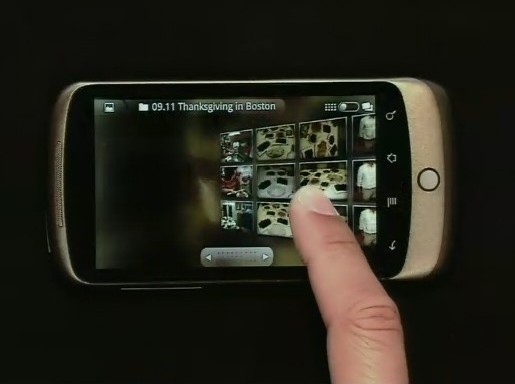 An example of the 3D graphics library put to use on Nexus One to tip the gallery wall of snapshots to one side.
An example of the 3D graphics library put to use on Nexus One to tip the gallery wall of snapshots to one side. If there had been any distinctiveness in the Nexus One platform established by such granular factors as, for example, how customers are billed for monthly service (literally a platform feature, according to Queiroz), Jha made a wish and blew it away. "I think Nexus One is a good phone," Jha told Preimesberger. "I think the Droid is a good phone. I think that we will upgrade Droid to the software that's available on Nexus One, and clearly both Peter [Chao of HTC, pictured left] and I compete in the marketplace to deliver the best product we can. And we will deliver some good products subsequent to Nexus One."
If there had been any distinctiveness in the Nexus One platform established by such granular factors as, for example, how customers are billed for monthly service (literally a platform feature, according to Queiroz), Jha made a wish and blew it away. "I think Nexus One is a good phone," Jha told Preimesberger. "I think the Droid is a good phone. I think that we will upgrade Droid to the software that's available on Nexus One, and clearly both Peter [Chao of HTC, pictured left] and I compete in the marketplace to deliver the best product we can. And we will deliver some good products subsequent to Nexus One." Google's Eric Tseng demonstrates the touchable weather app on Nexus One, which he described as 'Google-y.'
Google's Eric Tseng demonstrates the touchable weather app on Nexus One, which he described as 'Google-y.' It was the type of tea party demonstration you'd never see at an Apple event. Rubin responded by saying he thought the pricing structure was actually "exciting." Then he attempted to quell the revolt by saying, "The first thing, before you can revolutionize the world and have all sorts of new options and new services and new features that are primarily -- what you're describing -- business models, not technology features, you have to have a mechanism by which you're selling product. So the first baby step here is, let's get an online store going, let's put the best-in-class products through that store, and let's figure out what the best way to enhance it is, in the future."
It was the type of tea party demonstration you'd never see at an Apple event. Rubin responded by saying he thought the pricing structure was actually "exciting." Then he attempted to quell the revolt by saying, "The first thing, before you can revolutionize the world and have all sorts of new options and new services and new features that are primarily -- what you're describing -- business models, not technology features, you have to have a mechanism by which you're selling product. So the first baby step here is, let's get an online store going, let's put the best-in-class products through that store, and let's figure out what the best way to enhance it is, in the future."
 Responding to Apple's
Responding to Apple's  The key to a huge plurality, if not a majority, of exploits that have plagued Microsoft Windows over the past two decades has been tricking the system into executing data as though it were code. A malicious process can place data into its own heap -- the pile of memory reserved for its use -- that bears the pattern of executable instructions. Then once that process intentionally crashes, it can leave behind a state where the data in that heap is pointed to and then executed, usually without privilege attached.
The key to a huge plurality, if not a majority, of exploits that have plagued Microsoft Windows over the past two decades has been tricking the system into executing data as though it were code. A malicious process can place data into its own heap -- the pile of memory reserved for its use -- that bears the pattern of executable instructions. Then once that process intentionally crashes, it can leave behind a state where the data in that heap is pointed to and then executed, usually without privilege attached.

![A slide from a 2000 Microsoft presentation from technical evangelist James Plamondon. [Courtesy Groklaw]](http://images.betanews.com/media/4233.jpg)
![A mid-December timeframe estimate for Firefox releases in 2010. [Courtesy Mozilla]](http://images.betanews.com/media/4232.png)




 At some time during the middle of last week -- quite possibly, on the very day that Microsoft announced its
At some time during the middle of last week -- quite possibly, on the very day that Microsoft announced its 
 We exit 2009 with what appears to be the first sign of a plate-tectonic shift in both consumer and business technology -- specifically, a shift in interest and focus. It's a broader world out there, full of new and old companies with different names and real technology agendas that suddenly seem very realistic. Could we really be emerging into that competitive playing field that so many technologists had been seeking for so long?
We exit 2009 with what appears to be the first sign of a plate-tectonic shift in both consumer and business technology -- specifically, a shift in interest and focus. It's a broader world out there, full of new and old companies with different names and real technology agendas that suddenly seem very realistic. Could we really be emerging into that competitive playing field that so many technologists had been seeking for so long?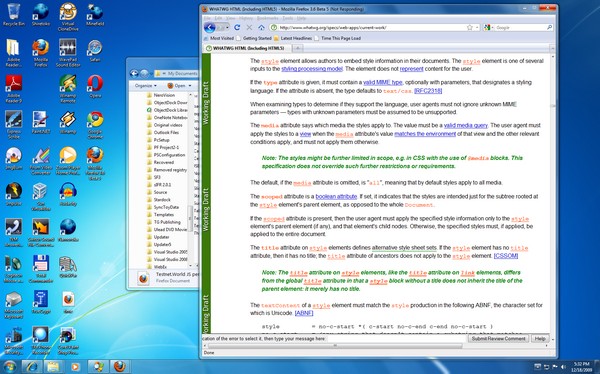

 "In 1999 after AMD released its Athlon CPU and again in 2003 after AMD released its Opteron CPU, Intel lost its technological edge in various segments of the CPU markets. Original equipment manufacturers ('OEMs') recognized that AMD's new products had surpassed Intel in terms of performance and quality of the CPU," reads this morning's complaint from the FTC. "Its monopoly threatened, Intel engaged in a number of unfair methods of competition and unfair practices to block or slow the adoption of competitive products and maintain its monopoly to the detriment of consumers. Among those practices were those that punished Intel's own customers -- computer manufacturers -- for using AMD or Via products. Intel also used its market presence and reputation to limit acceptance of AMD or Via products, and used deceptive practices to leave the impression that AMD or Via products did not perform as well as they actually did."
"In 1999 after AMD released its Athlon CPU and again in 2003 after AMD released its Opteron CPU, Intel lost its technological edge in various segments of the CPU markets. Original equipment manufacturers ('OEMs') recognized that AMD's new products had surpassed Intel in terms of performance and quality of the CPU," reads this morning's complaint from the FTC. "Its monopoly threatened, Intel engaged in a number of unfair methods of competition and unfair practices to block or slow the adoption of competitive products and maintain its monopoly to the detriment of consumers. Among those practices were those that punished Intel's own customers -- computer manufacturers -- for using AMD or Via products. Intel also used its market presence and reputation to limit acceptance of AMD or Via products, and used deceptive practices to leave the impression that AMD or Via products did not perform as well as they actually did." Is there something about set-top boxes that make consumers not want to subscribe to cable? In a sparsely covered request for public comments two weeks ago, the US Federal Communications Commission asked the general public for comments on several questions related to whether there's something wrong with the design or functionality of the set-top boxes to which customers subscribe, that make them reluctant to embrace cable and satellite TV.
Is there something about set-top boxes that make consumers not want to subscribe to cable? In a sparsely covered request for public comments two weeks ago, the US Federal Communications Commission asked the general public for comments on several questions related to whether there's something wrong with the design or functionality of the set-top boxes to which customers subscribe, that make them reluctant to embrace cable and satellite TV.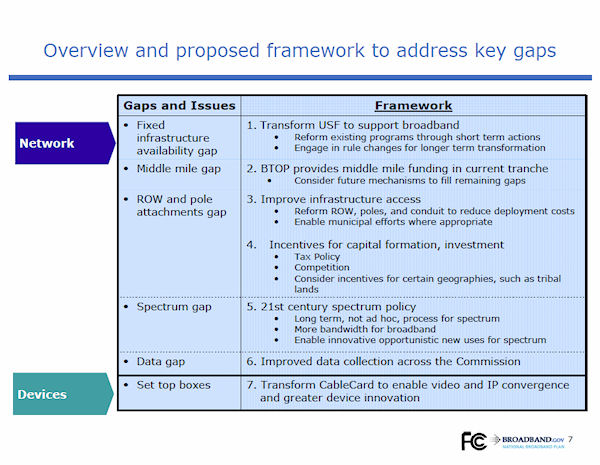


 This morning, the European Commission has welcomed a set of commitments made by Oracle to maintain, and even enhance, the viability of the MySQL division of Sun Microsystems, after Oracle's acquisition of Sun is complete. This even though neither Oracle nor Sun are European companies, though they both do business in Europe, and MySQL maintains one headquarters branch in its native Sweden.
This morning, the European Commission has welcomed a set of commitments made by Oracle to maintain, and even enhance, the viability of the MySQL division of Sun Microsystems, after Oracle's acquisition of Sun is complete. This even though neither Oracle nor Sun are European companies, though they both do business in Europe, and MySQL maintains one headquarters branch in its native Sweden.


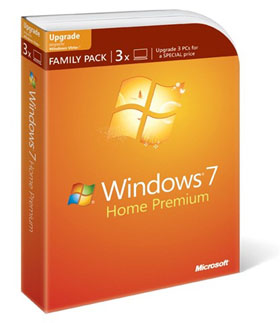 In response to
In response to 

 At the rate at which Acer (which now also includes Gateway, Packard Bell, and e-Machines) was catching up with Dell, analysts predicted at this time last year that it could conceivably top Dell in units shipped worldwide by the third quarter of 2009. For once in this wacky economy, the analysts' predictions turned out to be correct: Acer is now the world's #2 PC producer in terms of units shipped, according to iSuppli.
At the rate at which Acer (which now also includes Gateway, Packard Bell, and e-Machines) was catching up with Dell, analysts predicted at this time last year that it could conceivably top Dell in units shipped worldwide by the third quarter of 2009. For once in this wacky economy, the analysts' predictions turned out to be correct: Acer is now the world's #2 PC producer in terms of units shipped, according to iSuppli.
 Since the first public news of Windows 7's development back on October 2007, we've heard about a component of the operating system called MinWin -- a tantalizingly titled element that sounds like some kind of portable Windows kernel. Now Windows 7 is actually residing on paying consumers' desktops, and inside of it -- and inside of Windows Server 2008 R2 -- is the MinWin kernel architecture...and yet few have been made clear as to what it actually is.
Since the first public news of Windows 7's development back on October 2007, we've heard about a component of the operating system called MinWin -- a tantalizingly titled element that sounds like some kind of portable Windows kernel. Now Windows 7 is actually residing on paying consumers' desktops, and inside of it -- and inside of Windows Server 2008 R2 -- is the MinWin kernel architecture...and yet few have been made clear as to what it actually is.
 "We want to get away from that, and really make the definition of the logical DLLs, these files on disk, separate from the API sets that they implement, so that we can compose them dynamically," said Russinovich. "In other words, we want people to call virtual DLLs that implement APIs, and then what happens on the system is that those virtual DLLs are mapped to logical DLLs that actually implement this functionality. So it doesn't matter from a programmer's perspective if a virtual DLL's implementation is in this logical DLL or that one, it's up to us behind the scenes to figure out how to best combine virtual DLL implementations into logical DLLs."
"We want to get away from that, and really make the definition of the logical DLLs, these files on disk, separate from the API sets that they implement, so that we can compose them dynamically," said Russinovich. "In other words, we want people to call virtual DLLs that implement APIs, and then what happens on the system is that those virtual DLLs are mapped to logical DLLs that actually implement this functionality. So it doesn't matter from a programmer's perspective if a virtual DLL's implementation is in this logical DLL or that one, it's up to us behind the scenes to figure out how to best combine virtual DLL implementations into logical DLLs."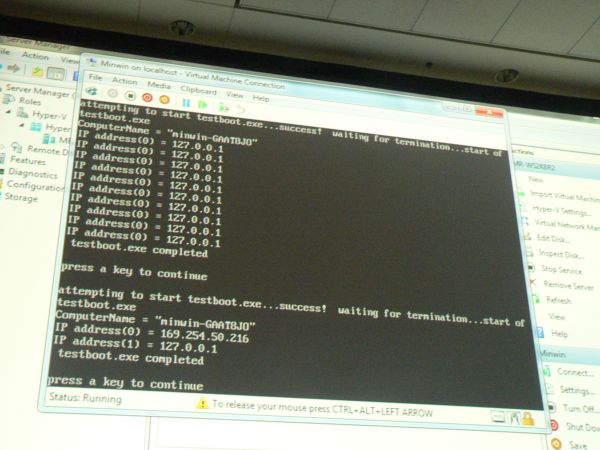
 With a group of blog posts this morning, one of which literally said paid content was probably not a good idea anyway, Google announced it was making an adjustment to its First Click Free aggregation scheme for news publishers. The adjustment to the service, first rolled out in 2007, will now enable readers to sample more content before subscribing through the publisher's own portal.
With a group of blog posts this morning, one of which literally said paid content was probably not a good idea anyway, Google announced it was making an adjustment to its First Click Free aggregation scheme for news publishers. The adjustment to the service, first rolled out in 2007, will now enable readers to sample more content before subscribing through the publisher's own portal. A spokesperson for Microsoft told Betanews early this afternoon that it has officially investigated claims that its latest security updates are the cause of an alleged "crop" of "Black Screen of Death" incidents, for which British security firm Prevx hurriedly released something billed as a possible fix. The claims, the company says, are unfounded.
A spokesperson for Microsoft told Betanews early this afternoon that it has officially investigated claims that its latest security updates are the cause of an alleged "crop" of "Black Screen of Death" incidents, for which British security firm Prevx hurriedly released something billed as a possible fix. The claims, the company says, are unfounded. "There will be people who are not using Office who are out on the Web, who are able to embrace the Web applications through Windows Live and get the true Office experience, compared to whatever ad hoc [product] they may be using right now," Kapner explained, avoiding use of the "G" word. "That is true, but we also have built this so that people can expand their Office experience to the browser-based environment...People who use Word for rich writing aren't going to do it in a browser. They want the footnoting and they want the table of contents and the autoformatting, they want that rich functionality. If I'm doing a 50-some-odd-page document or a term paper, not only do I not want somebody editing my document, but I want full functionality, and my ability to work deeply. However, if I'm writing a quick letter and I want my husband to check it out before I send it to the insurance company, I can use it in a Web app and I can leave it up there and have him go take a look at it.
"There will be people who are not using Office who are out on the Web, who are able to embrace the Web applications through Windows Live and get the true Office experience, compared to whatever ad hoc [product] they may be using right now," Kapner explained, avoiding use of the "G" word. "That is true, but we also have built this so that people can expand their Office experience to the browser-based environment...People who use Word for rich writing aren't going to do it in a browser. They want the footnoting and they want the table of contents and the autoformatting, they want that rich functionality. If I'm doing a 50-some-odd-page document or a term paper, not only do I not want somebody editing my document, but I want full functionality, and my ability to work deeply. However, if I'm writing a quick letter and I want my husband to check it out before I send it to the insurance company, I can use it in a Web app and I can leave it up there and have him go take a look at it. While Almunia could carry out existing penalties imposed against Microsoft and Intel, it's conceivable he could leave future penalty guidelines to the Court of First Instance to determine, or at least to the Commission itself to legislate in advance. Almunia is literally a blank slate on this subject; but as was the case when former US Treasury Secretary James Baker was elevated to Secretary of State under Pres. George H.W. Bush, that may not mean his slate stays blank for very long at all.
While Almunia could carry out existing penalties imposed against Microsoft and Intel, it's conceivable he could leave future penalty guidelines to the Court of First Instance to determine, or at least to the Commission itself to legislate in advance. Almunia is literally a blank slate on this subject; but as was the case when former US Treasury Secretary James Baker was elevated to Secretary of State under Pres. George H.W. Bush, that may not mean his slate stays blank for very long at all. One of the reasons Apple Inc. has been the most venerable opponent a courtroom defendant may face, is because of a significant trump card the US Supreme Court handed it in 1983. In a landmark case that rendered "Apple II clones" effectively illegal, the high court established a unique precedent for determining liability and damages in software copyright cases. It assumed that since any legitimate US company is capable of performing legitimate business, the possible damage a defendant might suffer from an injunction against possibly infringing software is outweighed by the simple declaration that such business is illegitimate.
One of the reasons Apple Inc. has been the most venerable opponent a courtroom defendant may face, is because of a significant trump card the US Supreme Court handed it in 1983. In a landmark case that rendered "Apple II clones" effectively illegal, the high court established a unique precedent for determining liability and damages in software copyright cases. It assumed that since any legitimate US company is capable of performing legitimate business, the possible damage a defendant might suffer from an injunction against possibly infringing software is outweighed by the simple declaration that such business is illegitimate. It was an impressive demonstration, once they got it working: H.264 video streaming wirelessly (and slowly, at least during the caching sequence) using Microsoft's Silverlight video streaming, to an Apple iPhone. It's all the more impressive when you realize that Flash video still has not made its way (permanently) to the iPhone, not for any technical reasons we know of...simply because Apple wants to control the video channel for streaming media to its devices.
It was an impressive demonstration, once they got it working: H.264 video streaming wirelessly (and slowly, at least during the caching sequence) using Microsoft's Silverlight video streaming, to an Apple iPhone. It's all the more impressive when you realize that Flash video still has not made its way (permanently) to the iPhone, not for any technical reasons we know of...simply because Apple wants to control the video channel for streaming media to its devices. "So we've worked with Apple to create a server-side based solution with IIS Media Services," Goldfarb continued, "and what we're doing is taking content that's encoded for smooth streaming and enabling the content owner to say, 'I want to enable the iPhone.' The server will dynamically make the content work -- same content, same point of origin -- on the iPhone. We do this with the HTML 5 <VIDEO> tag, in many ways."
"So we've worked with Apple to create a server-side based solution with IIS Media Services," Goldfarb continued, "and what we're doing is taking content that's encoded for smooth streaming and enabling the content owner to say, 'I want to enable the iPhone.' The server will dynamically make the content work -- same content, same point of origin -- on the iPhone. We do this with the HTML 5 <VIDEO> tag, in many ways."
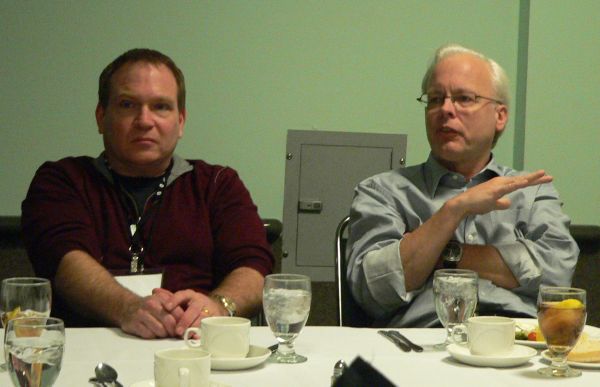






 It was a principal element of the Day 2 keynote at Microsoft's PDC 2009 conference last week in Los Angeles: an early demonstration of code being worked into Internet Explorer 9 that replaces the browser's outdated reliance upon the (very) old GDI rendering library, with new code utilizing Direct2D -- a library that borrows processing power from the GPU. But with the project only having begun last October, it could still be several months before Microsoft creates still more features to make IE9 worthy of a point-release.
It was a principal element of the Day 2 keynote at Microsoft's PDC 2009 conference last week in Los Angeles: an early demonstration of code being worked into Internet Explorer 9 that replaces the browser's outdated reliance upon the (very) old GDI rendering library, with new code utilizing Direct2D -- a library that borrows processing power from the GPU. But with the project only having begun last October, it could still be several months before Microsoft creates still more features to make IE9 worthy of a point-release.



![Mattel's Aquarius computer, circa 1983. [Photo credit: OldComputers.net]](http://images.betanews.com/media/4112.jpg)

 Mark Russinovich leads the way in this department, and the fact that he's appreciated leads others to follow suit. During his annual talk on "Kernel Improvements" -- which he expanded this year to a two-parter -- Russinovich spoke about the way that the timing of Windows' response to user interactions was adjusted to give the user more reassurance that something was happening, rather than the sinking suspicion that nothing was happening.
Mark Russinovich leads the way in this department, and the fact that he's appreciated leads others to follow suit. During his annual talk on "Kernel Improvements" -- which he expanded this year to a two-parter -- Russinovich spoke about the way that the timing of Windows' response to user interactions was adjusted to give the user more reassurance that something was happening, rather than the sinking suspicion that nothing was happening.

 There was a little buzz devoted to something called the Outlook Social Connector plug-in, a new tool for integrating individuals' social media contacts within Office's communications app. Deals with social network hosts such as LinkedIn were announced. In one respect, that does address consumer concerns; in another, it's a little ironic. Here we have a situation where people take the time to broadcast their identities over multiple social services on purposes as a way to spread out...only to discover the need for a kind of "identity vacuum" to pull them back in again to one cohesive chord.
There was a little buzz devoted to something called the Outlook Social Connector plug-in, a new tool for integrating individuals' social media contacts within Office's communications app. Deals with social network hosts such as LinkedIn were announced. In one respect, that does address consumer concerns; in another, it's a little ironic. Here we have a situation where people take the time to broadcast their identities over multiple social services on purposes as a way to spread out...only to discover the need for a kind of "identity vacuum" to pull them back in again to one cohesive chord.

 Oh thank you, Scott, much obliged. Silverlight 4. This one should have been on our radar for certain. Silverlight stole the show on Wednesday, and was much of the talk among developers on Thursday. The new version will provide 1080p video, which everyone wanted. And it will provide authenticated access to system services outside the sandbox, which everyone wants.
Oh thank you, Scott, much obliged. Silverlight 4. This one should have been on our radar for certain. Silverlight stole the show on Wednesday, and was much of the talk among developers on Thursday. The new version will provide 1080p video, which everyone wanted. And it will provide authenticated access to system services outside the sandbox, which everyone wants. Which reminds me, there was that one Guthrie demo Wednesday that bit the bottom of the bit bucket, with that cool looking phone. Did anyone ever make that work...Brian Goldfarb to the rescue once again. Yes, it is indeed possible to perform adaptive streaming of movies to the iPhone using Silverlight. We talked at length with Goldfarb (more on that too in coming days), and here's a preview of coming attractions:
Which reminds me, there was that one Guthrie demo Wednesday that bit the bottom of the bit bucket, with that cool looking phone. Did anyone ever make that work...Brian Goldfarb to the rescue once again. Yes, it is indeed possible to perform adaptive streaming of movies to the iPhone using Silverlight. We talked at length with Goldfarb (more on that too in coming days), and here's a preview of coming attractions:
 It was certainly more of an evolutionary than a revolutionary tone at this year's PDC, but attendees seemed comfortable with that this time around. Here was one strange phenomenon we've never noticed before: Attendance increased with later days. Wednesday attendance was noticeably higher for sessions and the keynote than for the previous day, and that was despite news of the big laptop giveaway being kept under lock and key. And Thursday -- which has often been a day for "leftovers" -- ended up being packed as well, including with attendees who brought those shiny new Acer multitouch laptops with them.
It was certainly more of an evolutionary than a revolutionary tone at this year's PDC, but attendees seemed comfortable with that this time around. Here was one strange phenomenon we've never noticed before: Attendance increased with later days. Wednesday attendance was noticeably higher for sessions and the keynote than for the previous day, and that was despite news of the big laptop giveaway being kept under lock and key. And Thursday -- which has often been a day for "leftovers" -- ended up being packed as well, including with attendees who brought those shiny new Acer multitouch laptops with them.






 9:22am PT: The test distributions of "Microsoft PDC laptops" will likely come with promises that the users will be communicating telemetry with the company.
9:22am PT: The test distributions of "Microsoft PDC laptops" will likely come with promises that the users will be communicating telemetry with the company.


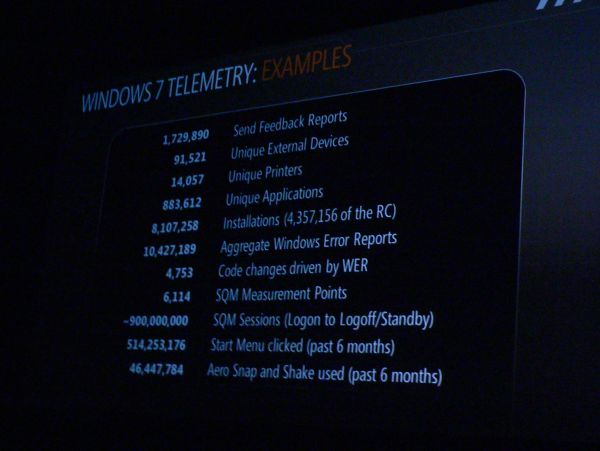
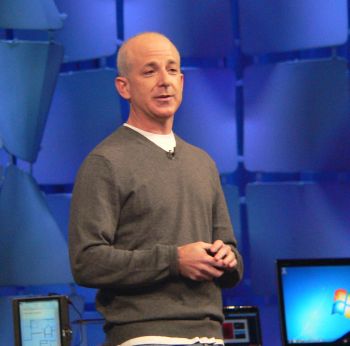 8:35am PT: At the moment, Sinofsky is going through a history of the Windows 7 launch, and lessons learned at Microsoft about being responsible about how to disclose information about the product. "You should expect us to have learned that lesson about responsible disclosure, and to continue as we move forward."
8:35am PT: At the moment, Sinofsky is going through a history of the Windows 7 launch, and lessons learned at Microsoft about being responsible about how to disclose information about the product. "You should expect us to have learned that lesson about responsible disclosure, and to continue as we move forward." "If you write your code for Windows Server AppFabric, it should run on Windows Azure," said Ottaway, referring to the
"If you write your code for Windows Server AppFabric, it should run on Windows Azure," said Ottaway, referring to the  "What we're announcing is that we will have what we're calling Windows Server Virtual Machine Roles on Windows Azure," Windows Server senior product manager Scott Ottaway told a press gathering Tuesday afternoon at PDC 2009. "What these will be, are pre-configured images of Windows Server -- one might have .NET [Framework] 3.5 on it, the next one might have .NET 4.0 when that's available. And you can bring your existing app, that you're running on-premises now on Windows Server, to Windows Azure, deploy it in this virtual machine image, and there you have existing applications support or migration -- you don't have to necessarily write new apps to take advantage of the Windows Azure service."
"What we're announcing is that we will have what we're calling Windows Server Virtual Machine Roles on Windows Azure," Windows Server senior product manager Scott Ottaway told a press gathering Tuesday afternoon at PDC 2009. "What these will be, are pre-configured images of Windows Server -- one might have .NET [Framework] 3.5 on it, the next one might have .NET 4.0 when that's available. And you can bring your existing app, that you're running on-premises now on Windows Server, to Windows Azure, deploy it in this virtual machine image, and there you have existing applications support or migration -- you don't have to necessarily write new apps to take advantage of the Windows Azure service."

 The job of giving identity to the cloud concept has been left to Bob Muglia, whose annual funny video this morning wasn't too far off the mark from reality: In the video, he acts as a kind of personal, spiritual counselor for "the cloud," who in this case was an idea borrowed from a recent ad campaign for Bob Evans Restaurants. Here "The Cloud" is trying to find a purpose for itself, and Muglia's advice is that the cloud can be anything and everything it wants to be...whatever that is.
The job of giving identity to the cloud concept has been left to Bob Muglia, whose annual funny video this morning wasn't too far off the mark from reality: In the video, he acts as a kind of personal, spiritual counselor for "the cloud," who in this case was an idea borrowed from a recent ad campaign for Bob Evans Restaurants. Here "The Cloud" is trying to find a purpose for itself, and Muglia's advice is that the cloud can be anything and everything it wants to be...whatever that is.



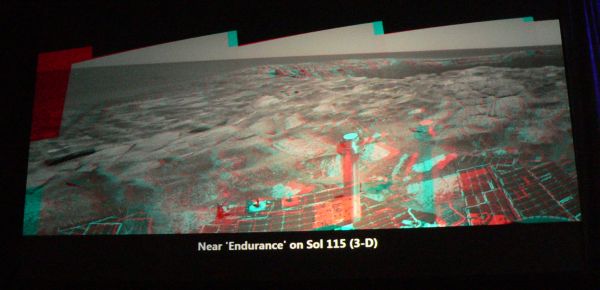

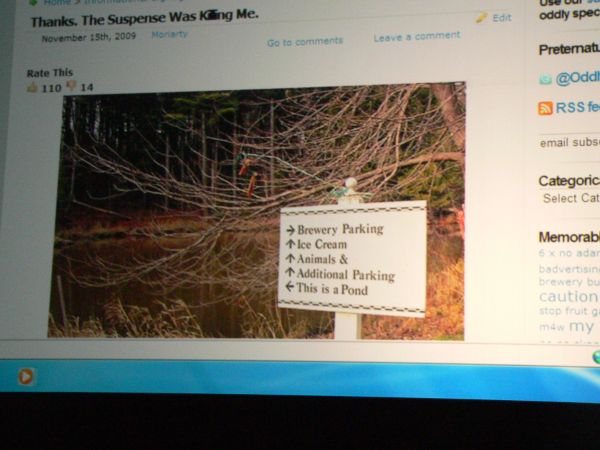
 Ray acknowledged here that last year, he spoke of the cloud in very "cloudy" terms. Reminder about launch of Windows Azure at PDC 2008. "We committed to spending the year engaged with you, listening with you...before we took it live."
Ray acknowledged here that last year, he spoke of the cloud in very "cloudy" terms. Reminder about launch of Windows Azure at PDC 2008. "We committed to spending the year engaged with you, listening with you...before we took it live." "Over time, we moved some paths out of the dispatcher lock by introducing additional locks, such as thread locks, timer table locks, processor control block locks, etc.," Kishan continued. "But still, the key thing that the dispatcher lock was used for was to synchronize thread state transitions. So if a thread's running, and it waits on a set of objects and goes into a wait state, that transition was synchronized by the dispatcher lock. The reason that needed a global lock was because the OS provides pretty rich semantics on what applications can do, and an application can wait on a single object, it can wait on a single object with a timeout, it can wait on multiple objects and say, 'I just want to wait on any of these,' or it can say, 'I just want to wait on all of these. It can mix and match types of objects that it's using in any given wait call. So in order to provide this kind of flexibility, the back end had to employ this global dispatcher lock to manage the complexity. But the downside of that, of course, was that it ended up being the most contended lock in most of our workloads, by an order of magnitude or more as you went to these high-end systems."
"Over time, we moved some paths out of the dispatcher lock by introducing additional locks, such as thread locks, timer table locks, processor control block locks, etc.," Kishan continued. "But still, the key thing that the dispatcher lock was used for was to synchronize thread state transitions. So if a thread's running, and it waits on a set of objects and goes into a wait state, that transition was synchronized by the dispatcher lock. The reason that needed a global lock was because the OS provides pretty rich semantics on what applications can do, and an application can wait on a single object, it can wait on a single object with a timeout, it can wait on multiple objects and say, 'I just want to wait on any of these,' or it can say, 'I just want to wait on all of these. It can mix and match types of objects that it's using in any given wait call. So in order to provide this kind of flexibility, the back end had to employ this global dispatcher lock to manage the complexity. But the downside of that, of course, was that it ended up being the most contended lock in most of our workloads, by an order of magnitude or more as you went to these high-end systems." "A lot of people might think, 'Wow, 97 megabytes doesn't seem like a lot of free memory on a machine of that size,' said Wang. "And we like to see this row actually be very small, 97 MB, because we figure that free and zero pages won't generally have a lot of use in this system. What we would rather do, if we have free and zero pages, is populate them with speculated disk or network reads, such that if you need the data later, you won't have to wait for a very slow disk or a very slow network to respond. So we will typically take these free and zero pages as we come across them, and pre-populate them with any files you might have read before, or executables we think you might run in the future -- we will get that in advance, so you don't have to wait when you click on something. It's already in memory, but you shouldn't take this low counter as implying that we're using a lot of memory."
"A lot of people might think, 'Wow, 97 megabytes doesn't seem like a lot of free memory on a machine of that size,' said Wang. "And we like to see this row actually be very small, 97 MB, because we figure that free and zero pages won't generally have a lot of use in this system. What we would rather do, if we have free and zero pages, is populate them with speculated disk or network reads, such that if you need the data later, you won't have to wait for a very slow disk or a very slow network to respond. So we will typically take these free and zero pages as we come across them, and pre-populate them with any files you might have read before, or executables we think you might run in the future -- we will get that in advance, so you don't have to wait when you click on something. It's already in memory, but you shouldn't take this low counter as implying that we're using a lot of memory."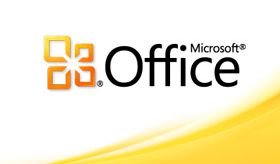 Participants in the first Technical Preview for Microsoft Office 2010 received invitations this morning to join the Office 2010 technical beta build 4536.1000. Not long afterward, the link to the technical beta went live on MSDN and TechNet.
Participants in the first Technical Preview for Microsoft Office 2010 received invitations this morning to join the Office 2010 technical beta build 4536.1000. Not long afterward, the link to the technical beta went live on MSDN and TechNet.

 If there were a psychiatrist seated across the room from us, and we were to present to her our feelings about information technology as a force in our lives, her diagnosis would be simple and immediate: We have an obsession. Maybe having nothing to do with technology itself at all, we're obsessed with the notion of a nemesis with an unfair advantage influencing the decisions we make.
If there were a psychiatrist seated across the room from us, and we were to present to her our feelings about information technology as a force in our lives, her diagnosis would be simple and immediate: We have an obsession. Maybe having nothing to do with technology itself at all, we're obsessed with the notion of a nemesis with an unfair advantage influencing the decisions we make. It's not like this sort of thing has
It's not like this sort of thing has 

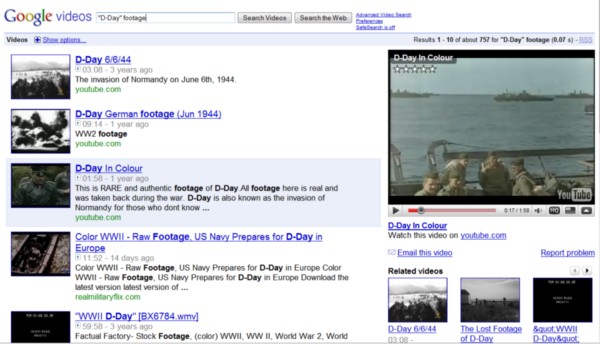


 The question before the European Council -- made up of heads of state and key ministers from the EU's 27 member nations -- was whether Internet access should be interpreted as a fundamental human right, and whether obstructing access could be construed as a rights violation. The answer came this morning, and it is apparently no.
The question before the European Council -- made up of heads of state and key ministers from the EU's 27 member nations -- was whether Internet access should be interpreted as a fundamental human right, and whether obstructing access could be construed as a rights violation. The answer came this morning, and it is apparently no.![Microsoft Outlook Web App previews the textual contents of a voice mail. [Courtesy Microsoft Corp.]](http://images.betanews.com/media/4044.jpg)
 The US Supreme Court is hearing oral arguments this afternoon in the case of a pair of inventors who produced a formula for enabling energy commodity companies to manage the costs of energy that is often both bought and sold at fixed prices as "hedges" against future fluctuations. If you're thinking, what in the world has that to do with information technology, the outcome of this case -- whatever it is -- will have a tremendous impact on the IT industry, particularly with respect to companies that hold intellectual property portfolios.
The US Supreme Court is hearing oral arguments this afternoon in the case of a pair of inventors who produced a formula for enabling energy commodity companies to manage the costs of energy that is often both bought and sold at fixed prices as "hedges" against future fluctuations. If you're thinking, what in the world has that to do with information technology, the outcome of this case -- whatever it is -- will have a tremendous impact on the IT industry, particularly with respect to companies that hold intellectual property portfolios. One of the more important features of Microsoft Exchange Server 2010 (or Exchange 2010, depending upon whom you're talking to), officially launched for sale this morning during a TechEd conference in Berlin, is a system for mail administrators to implement policy-driven rights management that's ensured not just for Outlook 2010 (Office) users, but also users of the Outlook Web App running through Web browsers, including Mozilla Firefox and Apple Safari.
One of the more important features of Microsoft Exchange Server 2010 (or Exchange 2010, depending upon whom you're talking to), officially launched for sale this morning during a TechEd conference in Berlin, is a system for mail administrators to implement policy-driven rights management that's ensured not just for Outlook 2010 (Office) users, but also users of the Outlook Web App running through Web browsers, including Mozilla Firefox and Apple Safari.
 If, as Google says, a Web browser is not so much an application but a platform upon which a new class of applications may be built, then that platform must provide support. It needs to give its users the ability to accomplish tasks, and to devise new and better ways to accomplish them better. For as we all know now, "browser" is an inappropriate word for the thing we use to communicate with the Web using HTTP, because the Web is becoming a space for everyday applications deployment. Especially in the content industry, active work takes place within the browser, much more so than passive amusement.
If, as Google says, a Web browser is not so much an application but a platform upon which a new class of applications may be built, then that platform must provide support. It needs to give its users the ability to accomplish tasks, and to devise new and better ways to accomplish them better. For as we all know now, "browser" is an inappropriate word for the thing we use to communicate with the Web using HTTP, because the Web is becoming a space for everyday applications deployment. Especially in the content industry, active work takes place within the browser, much more so than passive amusement.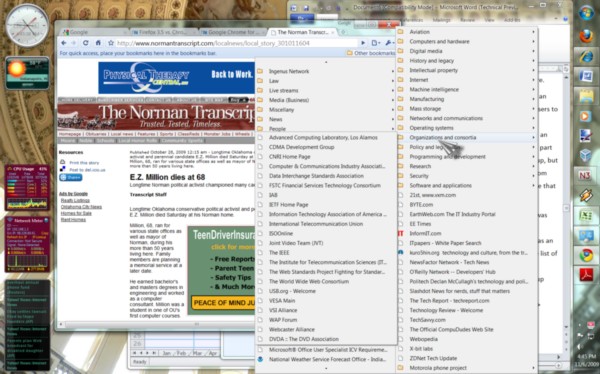
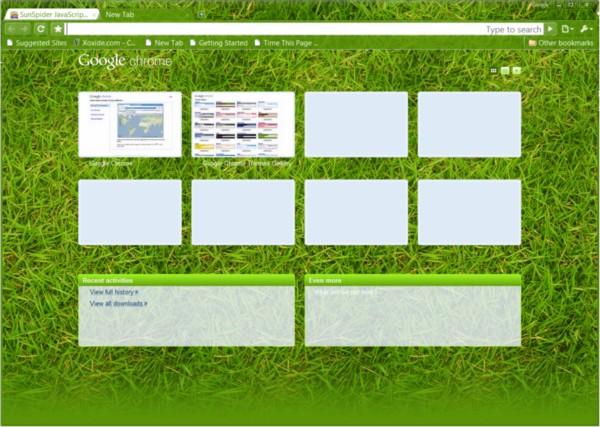

![Apple's 're-invented' Lisa, model 1 (1983) [Photo credit: ComputerHistory.org]](http://images.betanews.com/media/2642.jpg) A High Tech associate eventually found it back at the store and drove it downtown, but in the meantime, we sat pondering what this new thing was going to do. "Lisa," we'd concluded, must be a code-name and not the final brand. Somebody thought it would eventually be the Apple IV anyway, but the High Tech manager had heard from Cupertino that the Roman numerals had been declared history after "III."
A High Tech associate eventually found it back at the store and drove it downtown, but in the meantime, we sat pondering what this new thing was going to do. "Lisa," we'd concluded, must be a code-name and not the final brand. Somebody thought it would eventually be the Apple IV anyway, but the High Tech manager had heard from Cupertino that the Roman numerals had been declared history after "III."

 During one of the more noteworthy weeks in Europe's modern history, as the 27 member nations of the European Union prepare for a newer and more centralized executive authority, the EU will also be making way for a powerful regulatory authority for telecommunications: the Body of European Regulators for Electronic Communications (BEREC). This is the name for the new European Telecoms Authority; and whereas in the US, there remains considerable debate over whether the Federal Communications Commission can and should have regulatory authority over Internet transactions, in Europe, the debate has officially been settled: BEREC will have authority to propose regulations for telecommunications in all forms, including the Internet.
During one of the more noteworthy weeks in Europe's modern history, as the 27 member nations of the European Union prepare for a newer and more centralized executive authority, the EU will also be making way for a powerful regulatory authority for telecommunications: the Body of European Regulators for Electronic Communications (BEREC). This is the name for the new European Telecoms Authority; and whereas in the US, there remains considerable debate over whether the Federal Communications Commission can and should have regulatory authority over Internet transactions, in Europe, the debate has officially been settled: BEREC will have authority to propose regulations for telecommunications in all forms, including the Internet.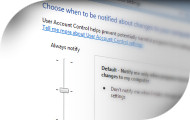

 Now, the latest name to become linked to the alleged scheme has submitted his resignation, effective next January, and will take a leave of absence in the interim. Dr. Hector Ruiz was chairman of GlobalFoundries, the manufacturing entity spun off from AMD, which Ruiz led as its chairman and CEO during the dawn of the multicore era.
Now, the latest name to become linked to the alleged scheme has submitted his resignation, effective next January, and will take a leave of absence in the interim. Dr. Hector Ruiz was chairman of GlobalFoundries, the manufacturing entity spun off from AMD, which Ruiz led as its chairman and CEO during the dawn of the multicore era.




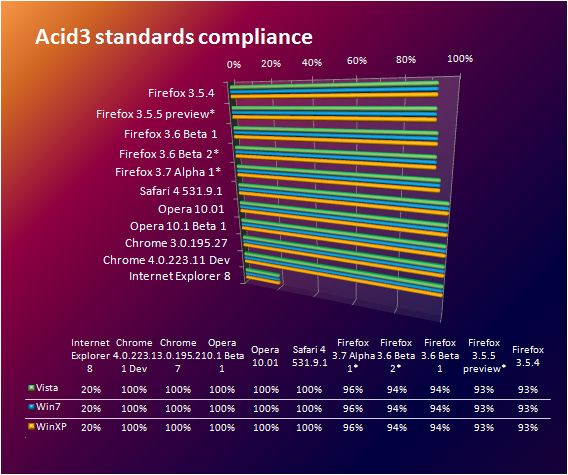







 But any kind of Google search starts with text, even when you're using Similar Images. So your hope is to be able to find at least the first item contextually (conventionally), and then use it as a sample upon which to base the target of your search. For our first test, we pictured in our minds a particular mirrored-glass skyscraper of the 20th century, and pretended to forget that it was designed by architect I. M. Pei, that it's called Fountain Place, and stands tall on the east side of the skyline of Dallas' CBD. If you're a Texan, you know which one I mean: It's like a big shard of blue glass rocketing upward from the ground as though it had grown there.
But any kind of Google search starts with text, even when you're using Similar Images. So your hope is to be able to find at least the first item contextually (conventionally), and then use it as a sample upon which to base the target of your search. For our first test, we pictured in our minds a particular mirrored-glass skyscraper of the 20th century, and pretended to forget that it was designed by architect I. M. Pei, that it's called Fountain Place, and stands tall on the east side of the skyline of Dallas' CBD. If you're a Texan, you know which one I mean: It's like a big shard of blue glass rocketing upward from the ground as though it had grown there.





 Come November 1, Amazon's Web Services division will be lowering the per-hour prices for all of its current five instance types (AMIs), while adding two new AMI types on the high-end, according to a multitude of announcements from Amazon today. At the new high end of the scale will be a "quadruple extra-large" AMI with 68.4 GB of dedicated RAM, and the virtual computing power of a 1 GHz, 26-core Intel Xeon processor (albeit a 2007 model).
Come November 1, Amazon's Web Services division will be lowering the per-hour prices for all of its current five instance types (AMIs), while adding two new AMI types on the high-end, according to a multitude of announcements from Amazon today. At the new high end of the scale will be a "quadruple extra-large" AMI with 68.4 GB of dedicated RAM, and the virtual computing power of a 1 GHz, 26-core Intel Xeon processor (albeit a 2007 model).![Two Web sites side-by-side: [Left] The real US Chamber of Commerce; [Right] the Yes Men rip-off](http://images.betanews.com/media/3982.jpg)
 The day after the US Federal Communications Commission voted unanimously to begin debate on the possible introduction of new federal regulations governing how Internet service providers may delineate and manage services for their customers, Sen. John McCain (R - Ariz.) announced he will be proposing simple and swift legislation that would forever separate the Internet from the FCC's purview.
The day after the US Federal Communications Commission voted unanimously to begin debate on the possible introduction of new federal regulations governing how Internet service providers may delineate and manage services for their customers, Sen. John McCain (R - Ariz.) announced he will be proposing simple and swift legislation that would forever separate the Internet from the FCC's purview. Microsoft's response at this point appears to be not to dignify Apple by looking as though it's responding to Apple's challenge. However, I seriously doubt that if Ballmer were to have taken the stage today with one of these devices in his hand, however crude it may have been with respect to what multitouch could eventually become, the first words out of consumers' mouths, or even the second, would have been, "I bet this is all because Apple came out with that cool mouse the other day!"
Microsoft's response at this point appears to be not to dignify Apple by looking as though it's responding to Apple's challenge. However, I seriously doubt that if Ballmer were to have taken the stage today with one of these devices in his hand, however crude it may have been with respect to what multitouch could eventually become, the first words out of consumers' mouths, or even the second, would have been, "I bet this is all because Apple came out with that cool mouse the other day!" What WOFF could also enable -- as part of a future wave of developments that could be ready for Firefox 3.7 next year -- is for Web designers to use the variations that are present in font files, but which HTML and even CSS have never directly covered: Many fonts include hints for how renderers should typeset small caps, and how it handles ligatures -- like connecting capital "T" with small "h," or small "f" with small "t." Without a mechanism in place for addressing the special capabilities of many fonts, CSS can't get a handle on them.
What WOFF could also enable -- as part of a future wave of developments that could be ready for Firefox 3.7 next year -- is for Web designers to use the variations that are present in font files, but which HTML and even CSS have never directly covered: Many fonts include hints for how renderers should typeset small caps, and how it handles ligatures -- like connecting capital "T" with small "h," or small "f" with small "t." Without a mechanism in place for addressing the special capabilities of many fonts, CSS can't get a handle on them. On average, I spend 54 hours per week as an online journalist, and maybe another six hours using the computer for entertainment. By my calculations, over the months I was running Vista on one of my production machines, at least four minutes per hour on average was spent unproductively waiting for Vista to do something -- to regain its Wi-Fi connection, to clear me as an administrator for some critical process, to refresh a directory listing, to reboot a crashed Internet Explorer, to cancel a search that became lost in a forest of meaninglessness, or to decide again that the monitor on my laptop was the only monitor on that laptop. Assume for the sake of argument that I didn't use any other computers in this office, that my Vista-based laptop was my main production system. I would reclaim four hours per week in lost latency time alone, just by moving to Windows 7.
On average, I spend 54 hours per week as an online journalist, and maybe another six hours using the computer for entertainment. By my calculations, over the months I was running Vista on one of my production machines, at least four minutes per hour on average was spent unproductively waiting for Vista to do something -- to regain its Wi-Fi connection, to clear me as an administrator for some critical process, to refresh a directory listing, to reboot a crashed Internet Explorer, to cancel a search that became lost in a forest of meaninglessness, or to decide again that the monitor on my laptop was the only monitor on that laptop. Assume for the sake of argument that I didn't use any other computers in this office, that my Vista-based laptop was my main production system. I would reclaim four hours per week in lost latency time alone, just by moving to Windows 7.



 As reads a statement this morning from Comms. Reding and McCreevy, "The recent information hearings held by the Commission on the Google Books Settlement Agreement highlighted the anomalous situation that would arise were the settlement to be approved, namely that the vast number of European works in U.S. libraries that have been digitized by Google would only be available to consumers and researchers in the US but not in Europe itself. Ensuring that Europeans are given access to their own cultural heritage, while European authors are fairly remunerated, is therefore of immediate concern and will require European responses."
As reads a statement this morning from Comms. Reding and McCreevy, "The recent information hearings held by the Commission on the Google Books Settlement Agreement highlighted the anomalous situation that would arise were the settlement to be approved, namely that the vast number of European works in U.S. libraries that have been digitized by Google would only be available to consumers and researchers in the US but not in Europe itself. Ensuring that Europeans are given access to their own cultural heritage, while European authors are fairly remunerated, is therefore of immediate concern and will require European responses."
 In what is now indisputably
In what is now indisputably  Yet that creates an entirely new problem, as Betanews discovered this morning: For the same reasons folks had trouble trying to uninstall these extensions before, they'll have trouble now re-installing them -- though .NET Framework Assistant appears in Firefox's Extensions list, the "Enable" button is greyed out, and the same goes for "Windows Presentation Foundation" in Firefox's Plug-ins list.
Yet that creates an entirely new problem, as Betanews discovered this morning: For the same reasons folks had trouble trying to uninstall these extensions before, they'll have trouble now re-installing them -- though .NET Framework Assistant appears in Firefox's Extensions list, the "Enable" button is greyed out, and the same goes for "Windows Presentation Foundation" in Firefox's Plug-ins list. The key backers of radio royalties legislation in Congress, who happen to be chairmen and ranking members of their respective judiciary committees: left to right, Sen. Orrin Hatch (R - Utah), Rep. John Conyers (D - Mich.), Sen. Patrick Leahy (D - Vt.), and Rep. Lamar Smith (R - Tex.), in a press conference last March.
The key backers of radio royalties legislation in Congress, who happen to be chairmen and ranking members of their respective judiciary committees: left to right, Sen. Orrin Hatch (R - Utah), Rep. John Conyers (D - Mich.), Sen. Patrick Leahy (D - Vt.), and Rep. Lamar Smith (R - Tex.), in a press conference last March.
 Using the strongest language to date in firing a shot across the bow against unchallenged regulation of the broadband access market, a group of 18 Senate Republicans led by Sam Brownback (R - Kan.) sent Federal Communications Commission Chairman Julius Genachowski a letter yesterday, signaling their intention to oppose any efforts by the FCC to create new restrictions on broadband Internet access suppliers, without clear case studies proving such restrictions are necessary.
Using the strongest language to date in firing a shot across the bow against unchallenged regulation of the broadband access market, a group of 18 Senate Republicans led by Sam Brownback (R - Kan.) sent Federal Communications Commission Chairman Julius Genachowski a letter yesterday, signaling their intention to oppose any efforts by the FCC to create new restrictions on broadband Internet access suppliers, without clear case studies proving such restrictions are necessary. With the on-again/off-again relationship between the US Federal Trade Commission and antitrust enforcement clearly coming on again with the rise of the Obama Administration -- and the appointment of
With the on-again/off-again relationship between the US Federal Trade Commission and antitrust enforcement clearly coming on again with the rise of the Obama Administration -- and the appointment of 

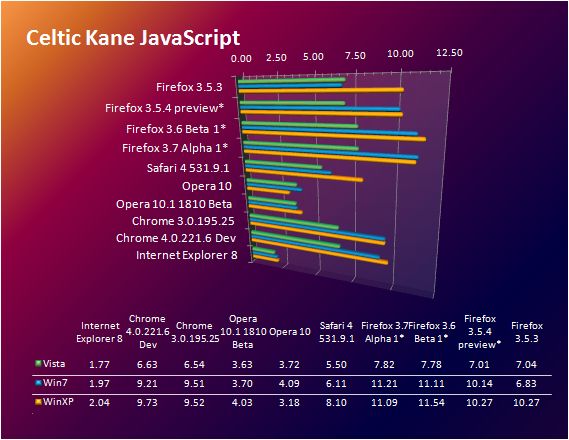






 In a bold new experiment for distributing Office that, quite surprisingly, does not involve Office Web Apps, Microsoft announced this afternoon its plans to let OEMs pre-install the full Office 2010 on new PCs, but enable it to run in a limited format until users purchase their licenses. That format, for the first time, will be ad-supported.
In a bold new experiment for distributing Office that, quite surprisingly, does not involve Office Web Apps, Microsoft announced this afternoon its plans to let OEMs pre-install the full Office 2010 on new PCs, but enable it to run in a limited format until users purchase their licenses. That format, for the first time, will be ad-supported.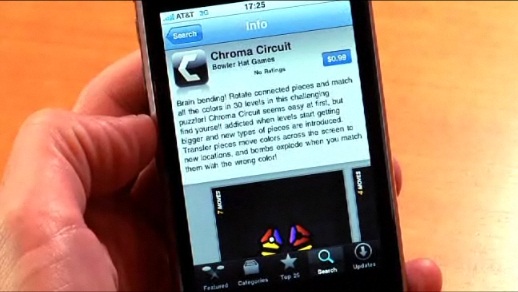

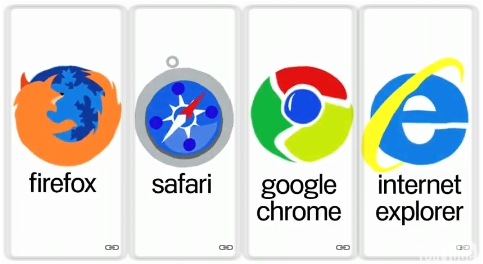



 Well over seven years since work began on the standard, and four years since the first draft of the proposed standard was published to vendors -- and
Well over seven years since work began on the standard, and four years since the first draft of the proposed standard was published to vendors -- and 
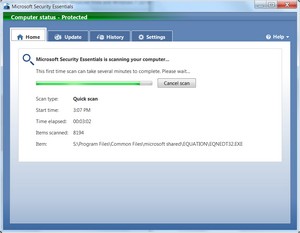 "Not noticeable" appears to be Microsoft's goal with Security Essentials; while other free packages are designed to be in-your-face to some extent (case in point, using system tray icons to report from time to time, "Your system is being protected!") it seems Microsoft would be happy if SE's users actually forget it's there. In paragraph 2 of the company's statement on SE this morning, consumer security general manager Amy Barzdukas summed up SE's key virtue with the following few words: "It won't get in their way."
"Not noticeable" appears to be Microsoft's goal with Security Essentials; while other free packages are designed to be in-your-face to some extent (case in point, using system tray icons to report from time to time, "Your system is being protected!") it seems Microsoft would be happy if SE's users actually forget it's there. In paragraph 2 of the company's statement on SE this morning, consumer security general manager Amy Barzdukas summed up SE's key virtue with the following few words: "It won't get in their way." If the Federal Communications Commission is serious about wanting to be
If the Federal Communications Commission is serious about wanting to be 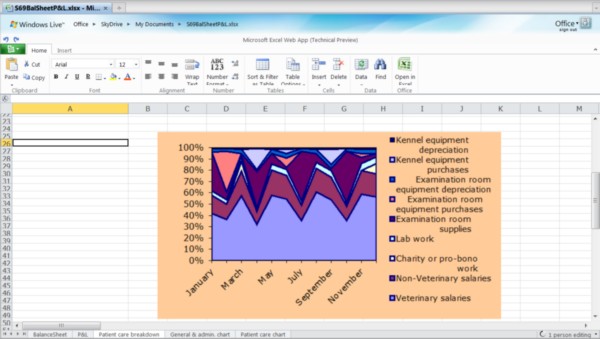
 As of yet, 3D chart styles are not supported, at least by this early Technical Preview. But when you do upload to SkyDrive a workbook that contains a 3D chart, the substitute chart that the Web App renders instead uses the same design choices as when you change a 3D chart to a 2D one in Excel 2007, which result in a fair and legible chart, if not particularly elegant. Gradient fill patterns and embedded tile patterns are replaced with solid colors. And we did notice that other embedded elements such as titles and text boxes disappeared.
As of yet, 3D chart styles are not supported, at least by this early Technical Preview. But when you do upload to SkyDrive a workbook that contains a 3D chart, the substitute chart that the Web App renders instead uses the same design choices as when you change a 3D chart to a 2D one in Excel 2007, which result in a fair and legible chart, if not particularly elegant. Gradient fill patterns and embedded tile patterns are replaced with solid colors. And we did notice that other embedded elements such as titles and text boxes disappeared.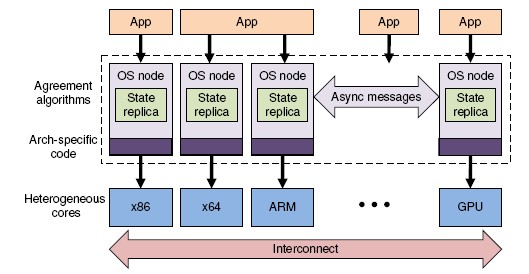

 When you think of kids on the playground playing Star Trek make-believe, you see the guy who plays Scotty inevitably being shouted at to increase or decrease the power, and then the guy putting on his best (or worst) Scottish accent and complaining back to the captain about how it canna be done, she can't take this abuse much longer or we're all genna bloe! Powering up and powering down is the most common task that amateurs think of when they consider the role of an engineer running a big machine.
When you think of kids on the playground playing Star Trek make-believe, you see the guy who plays Scotty inevitably being shouted at to increase or decrease the power, and then the guy putting on his best (or worst) Scottish accent and complaining back to the captain about how it canna be done, she can't take this abuse much longer or we're all genna bloe! Powering up and powering down is the most common task that amateurs think of when they consider the role of an engineer running a big machine. As an obscure, but obtainable, new piece of Microsoft documentation explains it, "The PPM engine chooses a minimum number of cores on which threads will be scheduled. Cores that are chosen to be 'parked' do not have any threads scheduled on them and they can drop into a lower power state. The remaining set of 'unparked' cores are responsible for the entirety of the workload (with the exception of affinitized work or directed interrupts). Core parking can increase power efficiency during lower usage periods on the server because parked cores can drop into a low-power state."
As an obscure, but obtainable, new piece of Microsoft documentation explains it, "The PPM engine chooses a minimum number of cores on which threads will be scheduled. Cores that are chosen to be 'parked' do not have any threads scheduled on them and they can drop into a lower power state. The remaining set of 'unparked' cores are responsible for the entirety of the workload (with the exception of affinitized work or directed interrupts). Core parking can increase power efficiency during lower usage periods on the server because parked cores can drop into a low-power state." "One of the things we're looking at doing with the WebsiteSpark program...is developing a true ecosystem around the development environment for the Web," stated Laura Cooney, group product manager for the Microsoft Web Platform, in an interview with Betanews. "With the Windows Web Application Gallery specifically, we really are working to encourage developers that have their own applications out there already to put them in the gallery. We are actually driving visitors to the site, and today we've actually had over 700,000 applications downloaded to date."
"One of the things we're looking at doing with the WebsiteSpark program...is developing a true ecosystem around the development environment for the Web," stated Laura Cooney, group product manager for the Microsoft Web Platform, in an interview with Betanews. "With the Windows Web Application Gallery specifically, we really are working to encourage developers that have their own applications out there already to put them in the gallery. We are actually driving visitors to the site, and today we've actually had over 700,000 applications downloaded to date." As
As 


 The typical PC hardware introduction is targeted first at the high end of the product's respective market, often referred to as the "enthusiast" or "early adopter." This is the person expected to have more disposable income, willing to pay a premium to be first on the block, and the person I'm most often told by company representatives fits the description "Betanews reader."
The typical PC hardware introduction is targeted first at the high end of the product's respective market, often referred to as the "enthusiast" or "early adopter." This is the person expected to have more disposable income, willing to pay a premium to be first on the block, and the person I'm most often told by company representatives fits the description "Betanews reader."






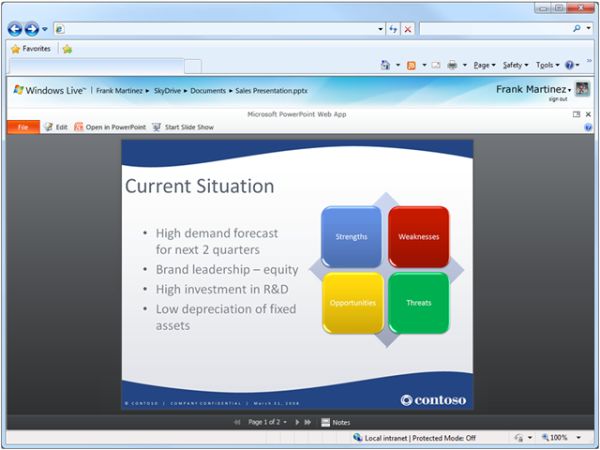
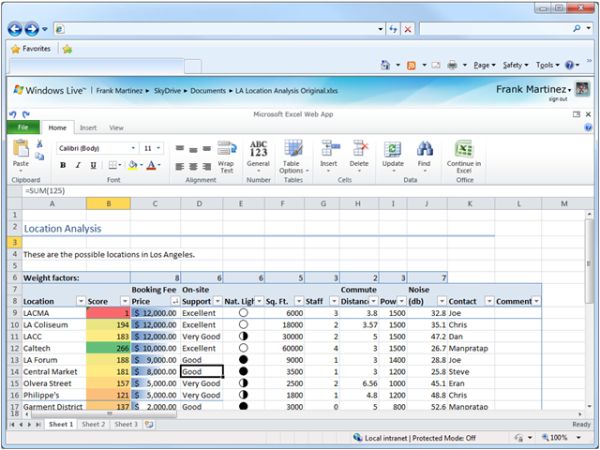

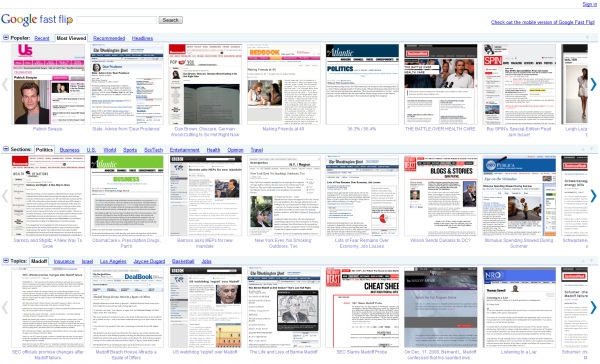


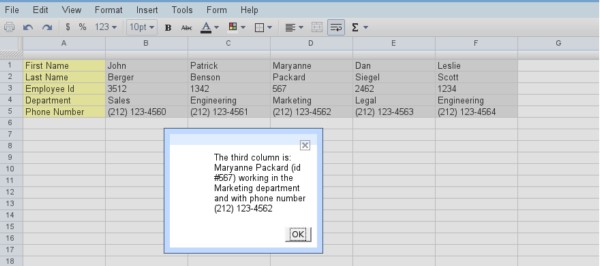


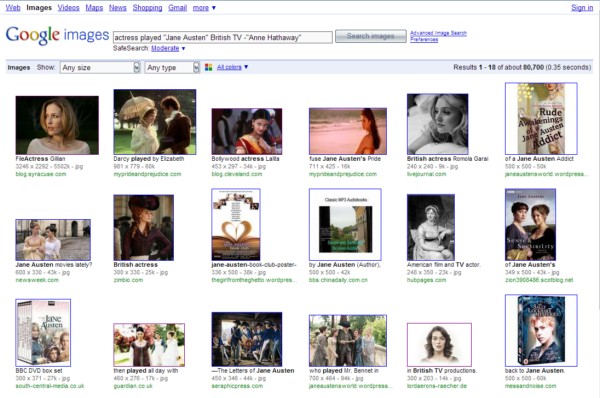


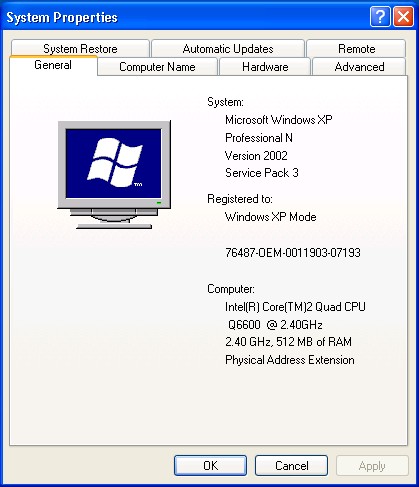 Microsoft released its initial release candidate for XP Mode last week, one day before the commencement of availability of the RTM code for Windows 7 on MSDN and TechNet. In Betanews initial tests that day, we discovered the XP Mode RC had significant trouble with installation and with establishing a working VM on the Windows 7 Release Candidate -- trouble that completely disappeared with the Windows 7 RTM code. Therefore, we recommend that you wait until receiving or purchasing the final Win7 before trying XP Mode RC or XP Mode (N) RC.
Microsoft released its initial release candidate for XP Mode last week, one day before the commencement of availability of the RTM code for Windows 7 on MSDN and TechNet. In Betanews initial tests that day, we discovered the XP Mode RC had significant trouble with installation and with establishing a working VM on the Windows 7 Release Candidate -- trouble that completely disappeared with the Windows 7 RTM code. Therefore, we recommend that you wait until receiving or purchasing the final Win7 before trying XP Mode RC or XP Mode (N) RC.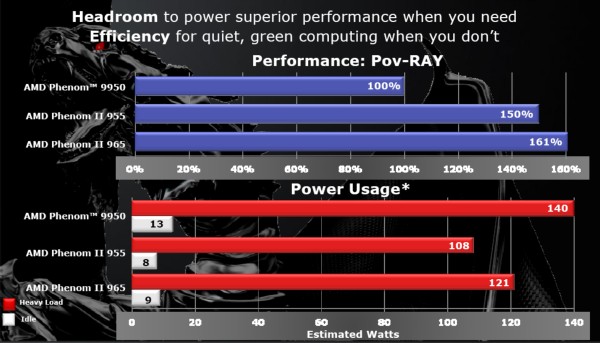


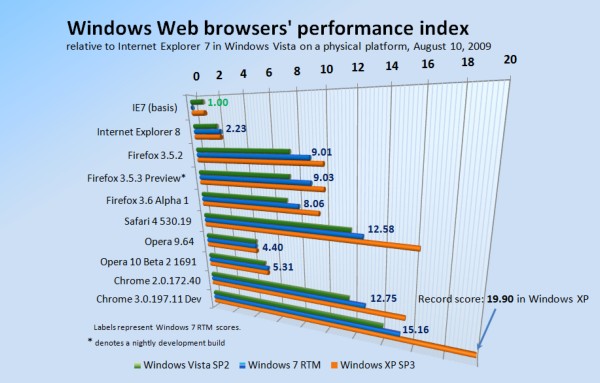

 A mere three days after
A mere three days after 
 It's worth noting here that Chrome doesn't display converted Web apps in a "Chrome window" -- in other words, it's not sensitive to the new "snap-to" events that premiered in Chrome 3, and that are part of the basis for Google's claim to a wholly new windowing environment. So you can't bump a Web app window alongside a Chrome window, for instance, and have it hug the side of it, as you can with two Chrome windows. This is to Chrome's credit; in fact, Web app developers would probably prefer their hosting platform to be as neutral as possible.
It's worth noting here that Chrome doesn't display converted Web apps in a "Chrome window" -- in other words, it's not sensitive to the new "snap-to" events that premiered in Chrome 3, and that are part of the basis for Google's claim to a wholly new windowing environment. So you can't bump a Web app window alongside a Chrome window, for instance, and have it hug the side of it, as you can with two Chrome windows. This is to Chrome's credit; in fact, Web app developers would probably prefer their hosting platform to be as neutral as possible. Chrome's method of making a Web application into a stand-alone app is, like much of Google, characteristically understated -- so much so that finding out the proper metaphor Google chose to use is a lot of needless guesswork. Chrome portrays the job as an "application shortcut to the desktop," which many users won't immediately recognize as any different from making a Web page shortcut to the desktop. If an app runs via shortcut, then one might conclude that dragging the app's URL to the desktop -- which does create a shortcut -- would make the right kind of shortcut. No, this creates a URL that launches the browser, just as with any Web page in the past.
Chrome's method of making a Web application into a stand-alone app is, like much of Google, characteristically understated -- so much so that finding out the proper metaphor Google chose to use is a lot of needless guesswork. Chrome portrays the job as an "application shortcut to the desktop," which many users won't immediately recognize as any different from making a Web page shortcut to the desktop. If an app runs via shortcut, then one might conclude that dragging the app's URL to the desktop -- which does create a shortcut -- would make the right kind of shortcut. No, this creates a URL that launches the browser, just as with any Web page in the past.
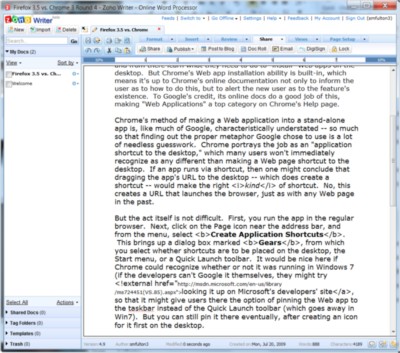




 4. Restrict Editing command in Word 2010. Many publishing organizations use Word as their principal tool for editing textual content, which means collaborators shuttle multiple documents between authors, editors, and proofreaders. Microsoft's collaboration tools are supposed to enable only certain parties to make changes. But in the publishing business, formatting codes are the keys to the final formatting of a production document, and if someone who has access rights can change those paragraph formats, even accidentally (which is easier to accomplish than you might imagine, thanks to customizable document templates belonging to each user), the entire production process can be held up, sometimes for days, while formatters work out the kinks.
4. Restrict Editing command in Word 2010. Many publishing organizations use Word as their principal tool for editing textual content, which means collaborators shuttle multiple documents between authors, editors, and proofreaders. Microsoft's collaboration tools are supposed to enable only certain parties to make changes. But in the publishing business, formatting codes are the keys to the final formatting of a production document, and if someone who has access rights can change those paragraph formats, even accidentally (which is easier to accomplish than you might imagine, thanks to customizable document templates belonging to each user), the entire production process can be held up, sometimes for days, while formatters work out the kinks.
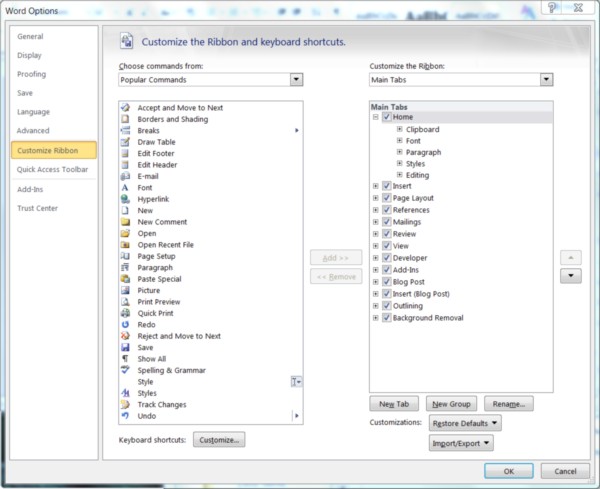
 In the final scenes of
In the final scenes of  What's his objective? Google's business model is centered around online advertising, and every business it has organically grown or successfully grafted onto itself, extends that business model outward. It's based on the (unproven) theory that advertising alone can float an enterprise -- a theory which doesn't seem to be working for print media concerns that were too slow to adopt new media. As long as Google's model continues to expand, its existence threatens Microsoft, whose business model is based around more conventional sales and subscriptions. Google's expansion absorbs portions of Microsoft's base.
What's his objective? Google's business model is centered around online advertising, and every business it has organically grown or successfully grafted onto itself, extends that business model outward. It's based on the (unproven) theory that advertising alone can float an enterprise -- a theory which doesn't seem to be working for print media concerns that were too slow to adopt new media. As long as Google's model continues to expand, its existence threatens Microsoft, whose business model is based around more conventional sales and subscriptions. Google's expansion absorbs portions of Microsoft's base.
 Finally with Word 2010, there appears to be some genuine effort to make Document Map useful in a real-world setting. Yes, only now can you use a search line (instead of Find-and-Replace) to locate an area in a document that may be worth mapping. Here, the search process is instantaneous, even more so than the 2007 version's old fashioned Home > Editing > Find feature, and hopefully it's also now indicative of the way search and replace will also work in Word.
Finally with Word 2010, there appears to be some genuine effort to make Document Map useful in a real-world setting. Yes, only now can you use a search line (instead of Find-and-Replace) to locate an area in a document that may be worth mapping. Here, the search process is instantaneous, even more so than the 2007 version's old fashioned Home > Editing > Find feature, and hopefully it's also now indicative of the way search and replace will also work in Word.
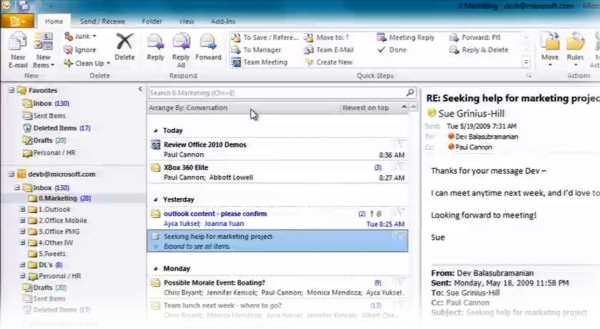
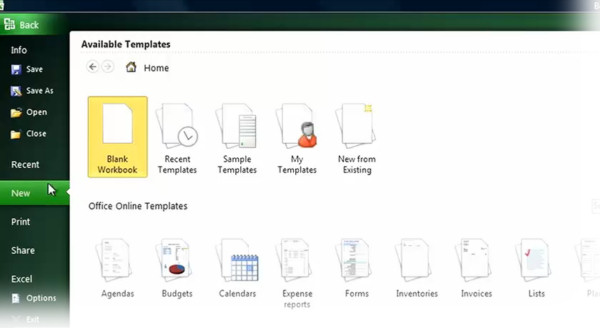
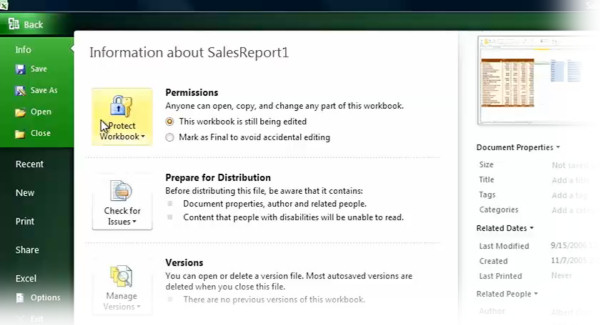

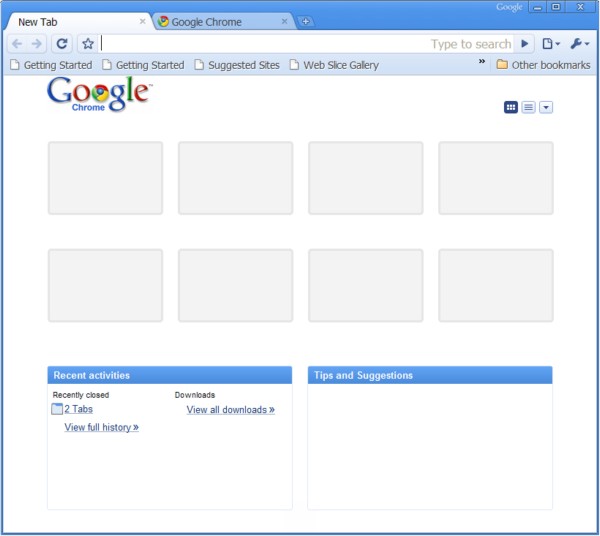
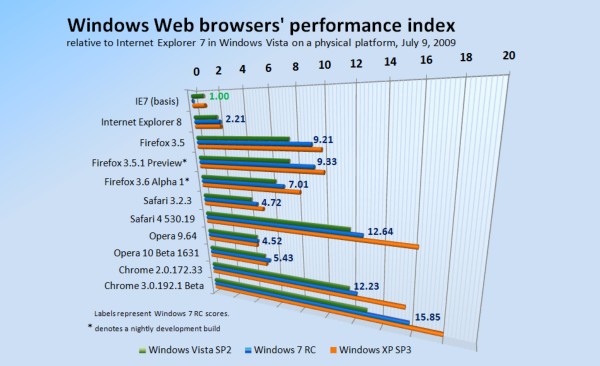
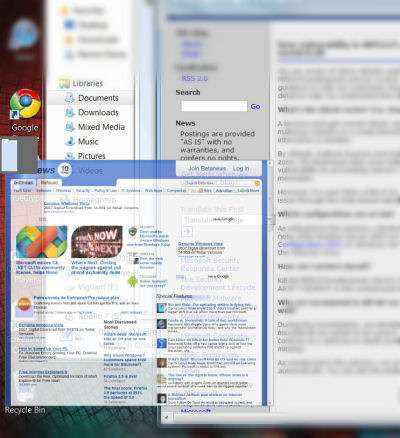 • When you drag a Chrome tab (as opposed to a window) toward the center of the edge of the desktop, an animated symbol pops up representing the projected placement of the tab's new window on the desktop if you were to release the mouse button. If you leave this symbol alone and release the button, then the new window will be created at the mouse pointer location. But if you continue dragging on top of this symbol and release there, then the new window will be opened as indicated by the symbol. For example, if you drag to the bottom (just above the taskbar), you'll see a symbol showing a window that hugs the bottom and that's half-height, leaving the top open. If you drag to the left, you'll see a symbol for a window that hugs the left edge, that's full-height and half-width. It's a little different than Microsoft's method, introduced in Windows 7, of "bumping" the edge of the desktop, and it takes an extra step, but it's certainly sensible. I've said before that I really like this feature in Windows 7, and I must admit to really liking Google Chrome's interpretation of it.
• When you drag a Chrome tab (as opposed to a window) toward the center of the edge of the desktop, an animated symbol pops up representing the projected placement of the tab's new window on the desktop if you were to release the mouse button. If you leave this symbol alone and release the button, then the new window will be created at the mouse pointer location. But if you continue dragging on top of this symbol and release there, then the new window will be opened as indicated by the symbol. For example, if you drag to the bottom (just above the taskbar), you'll see a symbol showing a window that hugs the bottom and that's half-height, leaving the top open. If you drag to the left, you'll see a symbol for a window that hugs the left edge, that's full-height and half-width. It's a little different than Microsoft's method, introduced in Windows 7, of "bumping" the edge of the desktop, and it takes an extra step, but it's certainly sensible. I've said before that I really like this feature in Windows 7, and I must admit to really liking Google Chrome's interpretation of it. • When you drag a Chrome tab toward the center of the outside edge of another Chrome window that has room alongside for a new neighbor, another animated symbol pops up depicting the relative location of the new window if you were to release the mouse button. This way, you can create a new window beside an existing one, hugging its edge. For example, if you drag an open tab toward the center of the left edge of an open Chrome window, the symbol will show two windows beside one another. You have to touch this symbol (bringing it from transparency to the forefront) and release the mouse button to snap the new window to the edge of the existing one.
• When you drag a Chrome tab toward the center of the outside edge of another Chrome window that has room alongside for a new neighbor, another animated symbol pops up depicting the relative location of the new window if you were to release the mouse button. This way, you can create a new window beside an existing one, hugging its edge. For example, if you drag an open tab toward the center of the left edge of an open Chrome window, the symbol will show two windows beside one another. You have to touch this symbol (bringing it from transparency to the forefront) and release the mouse button to snap the new window to the edge of the existing one.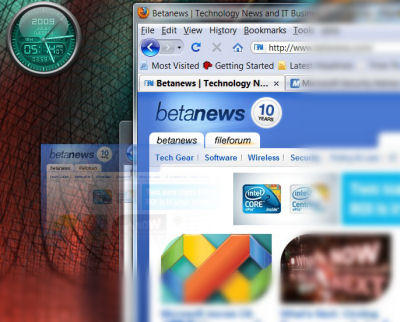 For now, when you drag an open Firefox 3.5 tab outside its window, you can deposit it on the desktop. Firefox will open a new window for it, but its location appears to be designated in the old-fashioned manner determined by Windows itself. Using the window device model Microsoft conceived in the 1980s, when a window produces another window, the child's default location is just below and to the right of the parent's, leaving just enough room for both title bars. So the position of the mouse pointer when you release the button is inconsequential, since Firefox's window device doesn't have the sensitivity to record the location of the pointer at the time of release.
For now, when you drag an open Firefox 3.5 tab outside its window, you can deposit it on the desktop. Firefox will open a new window for it, but its location appears to be designated in the old-fashioned manner determined by Windows itself. Using the window device model Microsoft conceived in the 1980s, when a window produces another window, the child's default location is just below and to the right of the parent's, leaving just enough room for both title bars. So the position of the mouse pointer when you release the button is inconsequential, since Firefox's window device doesn't have the sensitivity to record the location of the pointer at the time of release.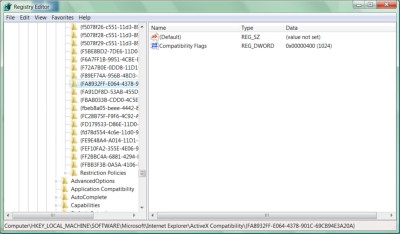 4. Scan the Registry to see if any of the CLSIDs correspond exactly to any of the 45 Registry items flagged by Microsoft. More than one may correspond. If none correspond, you are already safe from this exploit. Betanews was unable, for example, to find any of the 45 Registry entries on our Windows XP or Vista systems, and we don't expect to see it in Windows 7.
4. Scan the Registry to see if any of the CLSIDs correspond exactly to any of the 45 Registry items flagged by Microsoft. More than one may correspond. If none correspond, you are already safe from this exploit. Betanews was unable, for example, to find any of the 45 Registry entries on our Windows XP or Vista systems, and we don't expect to see it in Windows 7. But slide these two sliders around for yourself in Firefox 3.5, and watch how fluidly the browser responds to your motions, producing updates as fast as 12 frames per second on Betanews' quad-core test system. Then try this same page on Firefox 3.0, or something even older.
But slide these two sliders around for yourself in Firefox 3.5, and watch how fluidly the browser responds to your motions, producing updates as fast as 12 frames per second on Betanews' quad-core test system. Then try this same page on Firefox 3.0, or something even older.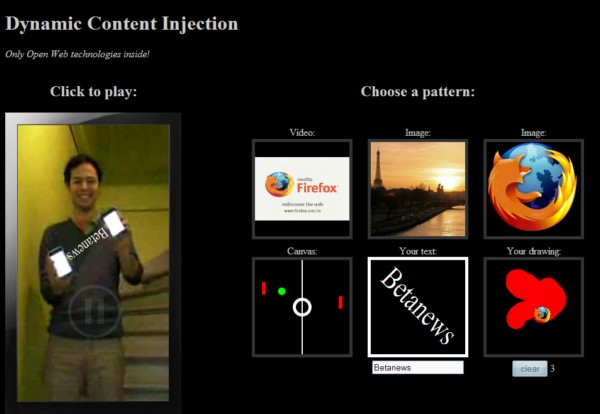
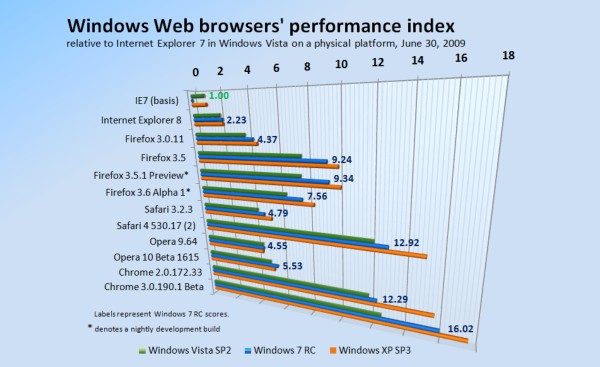
 In a comically blatant display of bravado this morning, George Hotz -- who
In a comically blatant display of bravado this morning, George Hotz -- who  That being the case, Dev-Team may regret having made that announcement, which could conceivably have given Hotz time to respond and ace that latest "hole." However, it's apparent from his front page graphics that Hotz took some time to beautify himself, as the Purple Ra1n page today contains, besides the download link, a self-portrait worthy of a 1980s album cover. Suitable for framing, evidently. Pictured at right in 2008, a somewhat more youthful looking Hotz is seen here gazing unabashedly at CNBC correspondent Erin Burnett.
That being the case, Dev-Team may regret having made that announcement, which could conceivably have given Hotz time to respond and ace that latest "hole." However, it's apparent from his front page graphics that Hotz took some time to beautify himself, as the Purple Ra1n page today contains, besides the download link, a self-portrait worthy of a 1980s album cover. Suitable for framing, evidently. Pictured at right in 2008, a somewhat more youthful looking Hotz is seen here gazing unabashedly at CNBC correspondent Erin Burnett. There actually are several features in Ultimate that are brought over from the Windows 7 Enterprise SKU, that are not to be found in Professional. Their usefulness in a typical consumer-oriented home setting, however, may be extremely limited. For example, AppLocker is designed to provide administrators with a group policy tool for specifying explicit rules for which applications can be run in the OS environment and which cannot. BranchCache enables users of corporate intranets to retrieve files and other data from locally stored caches that are nearer to the client, in networks managed by Windows Server 2008 R2. And DirectAccess is a phenomenal new feature that enables a Windows client to access a company network directly (again using WS2K8 R2), by way of a secure IPsec connection, without having to rely on anyone's VPN scheme, without any tunneling, and without having to sacrifice the client's own local network or homegroup connection.
There actually are several features in Ultimate that are brought over from the Windows 7 Enterprise SKU, that are not to be found in Professional. Their usefulness in a typical consumer-oriented home setting, however, may be extremely limited. For example, AppLocker is designed to provide administrators with a group policy tool for specifying explicit rules for which applications can be run in the OS environment and which cannot. BranchCache enables users of corporate intranets to retrieve files and other data from locally stored caches that are nearer to the client, in networks managed by Windows Server 2008 R2. And DirectAccess is a phenomenal new feature that enables a Windows client to access a company network directly (again using WS2K8 R2), by way of a secure IPsec connection, without having to rely on anyone's VPN scheme, without any tunneling, and without having to sacrifice the client's own local network or homegroup connection. For news of the death of Michael Jackson, the volume of people turning to Google, from the perspective of everyday online users, appeared to "break the Internet." For this, SEOMOZ.org blogger Danny Dover blames...Google, for not being prepared to handle a global emergency of this magnitude. Now, I'm old enough to remember the day when terrorists flew planes into big public buildings. Back then, the Internet didn't break because we had CNN (the TV channel). If the millions who would have watched CNN or any kind of news authority are instead scrambling online over a failing connection for tweets, blips, or beeps to validate their suspicions with more suspicions, then the Internet has no reason to congratulate itself this week.
For news of the death of Michael Jackson, the volume of people turning to Google, from the perspective of everyday online users, appeared to "break the Internet." For this, SEOMOZ.org blogger Danny Dover blames...Google, for not being prepared to handle a global emergency of this magnitude. Now, I'm old enough to remember the day when terrorists flew planes into big public buildings. Back then, the Internet didn't break because we had CNN (the TV channel). If the millions who would have watched CNN or any kind of news authority are instead scrambling online over a failing connection for tweets, blips, or beeps to validate their suspicions with more suspicions, then the Internet has no reason to congratulate itself this week.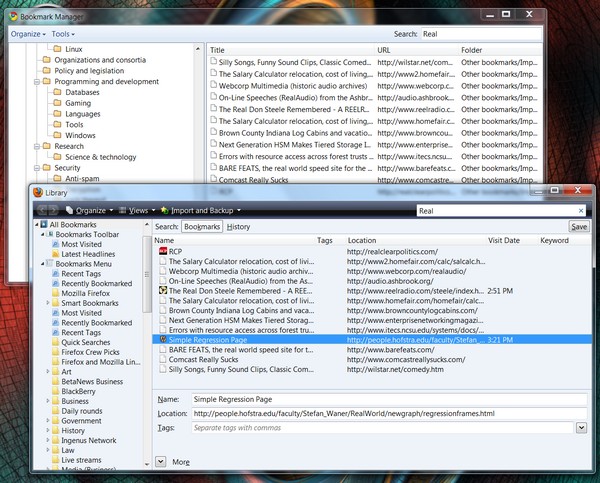






 Greiner's new Web page borrows a New Zealand-based newsletter (which appears to be out of publication since last October) to demonstrate how a non-validated Web page appears when rendered by Outlook. Betanews checked out that newsletter: Abiding by many of the suggestions made by professional Web designers, the CSS for "Soul Purpose" was all embedded in the document -- there were no links to external stylesheets, eliminating one opportunity for cross-site scripting vulnerabilities. E-mail clients that do support full CSS often prefer the code to be embedded in the page rather than linked, so "Soul Purpose" was following the rules.
Greiner's new Web page borrows a New Zealand-based newsletter (which appears to be out of publication since last October) to demonstrate how a non-validated Web page appears when rendered by Outlook. Betanews checked out that newsletter: Abiding by many of the suggestions made by professional Web designers, the CSS for "Soul Purpose" was all embedded in the document -- there were no links to external stylesheets, eliminating one opportunity for cross-site scripting vulnerabilities. E-mail clients that do support full CSS often prefer the code to be embedded in the page rather than linked, so "Soul Purpose" was following the rules.

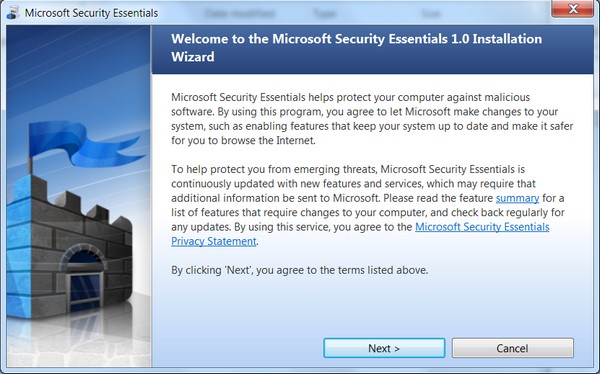
 "Today, when you sit down at a computer and you access a broadband connection, you're not told by your broadband provider that you have to have a Dell or an HP or an Apple in order to access the network," stated Sen. John Kerry (D - Mass.), the former presidential candidate who chaired a portion of Wednesday's hearing. "And when you purchase a wireless phone in Asia or Europe, you typically don't buy it through a wireless carrier. You purchase it separately from the manufacturer or from an outlet."
"Today, when you sit down at a computer and you access a broadband connection, you're not told by your broadband provider that you have to have a Dell or an HP or an Apple in order to access the network," stated Sen. John Kerry (D - Mass.), the former presidential candidate who chaired a portion of Wednesday's hearing. "And when you purchase a wireless phone in Asia or Europe, you typically don't buy it through a wireless carrier. You purchase it separately from the manufacturer or from an outlet." "Exclusive device deals lead to lower prices. Consumers pay well under what AT&T pays Apple for the iPhone. It's a standard US industry practice for the device [to be] sold below its cost, in return for a two-year agreement where the subsidy that made the initial price possible is recovered over the term of the agreement," Roth testified. "In the past two years that the iPhone has been exclusive to AT&T, the price of the iPhone has gone from $399 to $199, and just last week to $99, all while exclusive to AT&T. And with the iPhone at $99, prices of other devices, including other exclusive devices, have dropped and will continue to drop in response to that."
"Exclusive device deals lead to lower prices. Consumers pay well under what AT&T pays Apple for the iPhone. It's a standard US industry practice for the device [to be] sold below its cost, in return for a two-year agreement where the subsidy that made the initial price possible is recovered over the term of the agreement," Roth testified. "In the past two years that the iPhone has been exclusive to AT&T, the price of the iPhone has gone from $399 to $199, and just last week to $99, all while exclusive to AT&T. And with the iPhone at $99, prices of other devices, including other exclusive devices, have dropped and will continue to drop in response to that." "There is harm in urban areas as well. Consumers who desire an iPhone or a BlackBerry Storm smartphone cannot use it on our network, even if they prefer our service," Rooney continued. "We do not understand how the public can possibly be served by such a practice. If you take away nothing else from this meeting, I want you to understand a central goal of policy makers should be to enable consumers to buy the handset they want, and choose the service that best suits their needs."
"There is harm in urban areas as well. Consumers who desire an iPhone or a BlackBerry Storm smartphone cannot use it on our network, even if they prefer our service," Rooney continued. "We do not understand how the public can possibly be served by such a practice. If you take away nothing else from this meeting, I want you to understand a central goal of policy makers should be to enable consumers to buy the handset they want, and choose the service that best suits their needs."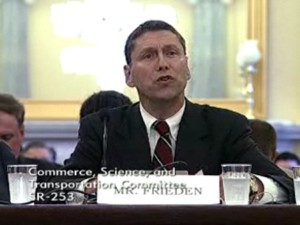 "Near-exclusive reliance by wireless carriers and their agents on a single business model, which combines wireless service and handsets used to access the service, strongly influences what kinds of services the handset can perform, and what kind of software the subscriber can download," said Prof. Frieden. "This combination of handset and service also creates incentive for carriers to secure exclusive distribution rights for choice devices such as the Apple iPhone. It motivates carriers to favor ways to recoup their handset subsidies rather than to concentrate on offering unconditional access to the features within the handset, or services available by downloading software and content to the handset."
"Near-exclusive reliance by wireless carriers and their agents on a single business model, which combines wireless service and handsets used to access the service, strongly influences what kinds of services the handset can perform, and what kind of software the subscriber can download," said Prof. Frieden. "This combination of handset and service also creates incentive for carriers to secure exclusive distribution rights for choice devices such as the Apple iPhone. It motivates carriers to favor ways to recoup their handset subsidies rather than to concentrate on offering unconditional access to the features within the handset, or services available by downloading software and content to the handset." "Consumers will remain protected from demonstrable anti-competitive activity or unfair and deceptive practices in this sector by our antitrust and consumer protection authorities. The FCC has repeatedly found the wireless marketplace to be effectively competitive -- not perfectly competitive, but effectively competitive," Esbin testified. "Carriers are willing to pay for exclusive arrangements because offering subscribers a hot new handset is a way to differentiate their services. The FCC has acknowledged that product differentiation is a natural competitive response by carriers to customer churn. Churn itself is a sign of competition, and the exclusive arrangements are simply a feature in an intensely competitive market. And handset manufacturers benefit from the exclusives by being able to develop the initial version of a device for one type of network, ensuring both speed to market and some control over the user experience. Guaranteed minimum order from the manufacturer, another common feature, can remove some of the risks associated with a new product offering, thus permitting riskier and more innovative designs."
"Consumers will remain protected from demonstrable anti-competitive activity or unfair and deceptive practices in this sector by our antitrust and consumer protection authorities. The FCC has repeatedly found the wireless marketplace to be effectively competitive -- not perfectly competitive, but effectively competitive," Esbin testified. "Carriers are willing to pay for exclusive arrangements because offering subscribers a hot new handset is a way to differentiate their services. The FCC has acknowledged that product differentiation is a natural competitive response by carriers to customer churn. Churn itself is a sign of competition, and the exclusive arrangements are simply a feature in an intensely competitive market. And handset manufacturers benefit from the exclusives by being able to develop the initial version of a device for one type of network, ensuring both speed to market and some control over the user experience. Guaranteed minimum order from the manufacturer, another common feature, can remove some of the risks associated with a new product offering, thus permitting riskier and more innovative designs." "Will Congress sit by and allow the largest carriers to lock the most attractive netbooks into exclusivity agreements before this segment of the market fully emerges?" Meena asked the Sen. Commerce Committee members last Wednesday. "Left unchecked in this segment of the PC market, the largest wireless carriers will gain control and begin to restrict PC innovation and distribution, just as they have wireless handsets. Furthermore, the claim that exclusivity agreements drive innovation is completely unfounded in this segment of the market. Companies like Dell, Acer, and others were advancing the netbook market well before the largest carriers got involved. How, then, can the largest carriers claim a divine right to exclusivity on netbooks?"
"Will Congress sit by and allow the largest carriers to lock the most attractive netbooks into exclusivity agreements before this segment of the market fully emerges?" Meena asked the Sen. Commerce Committee members last Wednesday. "Left unchecked in this segment of the PC market, the largest wireless carriers will gain control and begin to restrict PC innovation and distribution, just as they have wireless handsets. Furthermore, the claim that exclusivity agreements drive innovation is completely unfounded in this segment of the market. Companies like Dell, Acer, and others were advancing the netbook market well before the largest carriers got involved. How, then, can the largest carriers claim a divine right to exclusivity on netbooks?" But why shouldn't a customer of Rooney's US Cellular, for instance, have the right to purchase an iPhone for whatever price US Cellular might make it available, Kerry proceeded. Roth responded that the real reason was because US Cellular -- along with Cellular South, which was also represented -- made the wrong choice of network protocols: CDMA as opposed to GSM, which he described as the global standard and the one that AT&T, and any other network that cares about customers, supports. Comparing CDMA to GSM, Roth argued, was like comparing VHS to Beta, in that order.
But why shouldn't a customer of Rooney's US Cellular, for instance, have the right to purchase an iPhone for whatever price US Cellular might make it available, Kerry proceeded. Roth responded that the real reason was because US Cellular -- along with Cellular South, which was also represented -- made the wrong choice of network protocols: CDMA as opposed to GSM, which he described as the global standard and the one that AT&T, and any other network that cares about customers, supports. Comparing CDMA to GSM, Roth argued, was like comparing VHS to Beta, in that order.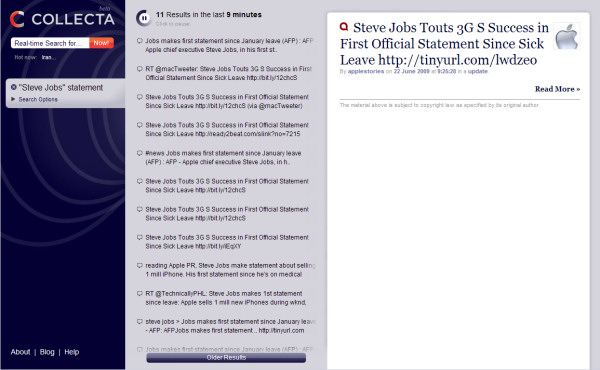
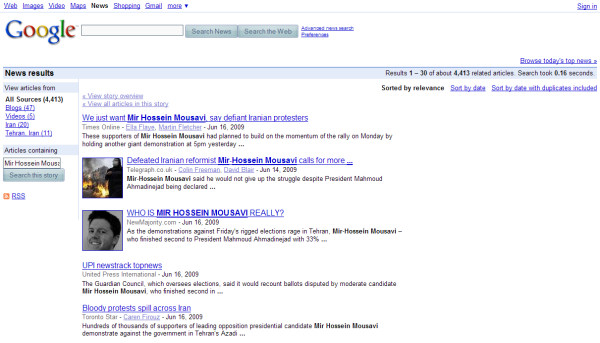
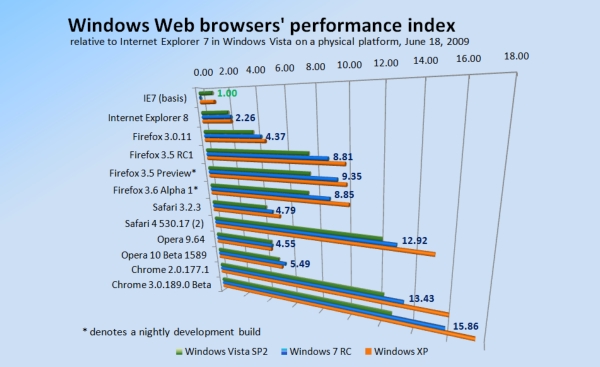

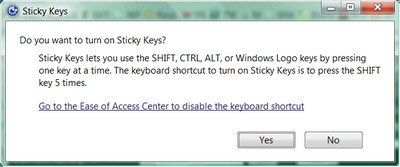 What's more, the fact that you can see a piece of your desktop wallpaper through the transparency of the Sticky Keys dialog's title bar (though this screenshot was taken later) is a clear indicator that Windows is running perfectly, and the Black Screen is just a very effective façade.
What's more, the fact that you can see a piece of your desktop wallpaper through the transparency of the Sticky Keys dialog's title bar (though this screenshot was taken later) is a clear indicator that Windows is running perfectly, and the Black Screen is just a very effective façade.






 You know the guy I'm talking about. What's-his-name. The guy with the big chin, from that movie you like that had the girl in it. Kind of rugged. Looks a little like Scott Bakula. Not William Holden.
You know the guy I'm talking about. What's-his-name. The guy with the big chin, from that movie you like that had the girl in it. Kind of rugged. Looks a little like Scott Bakula. Not William Holden.

 Since the Windows 7 taskbar itself has changed since that initial prototype was presented, the concept has evolved a bit, and in a sense simplified. Now when you plug in a recognized device, an icon for it does appear in the new taskbar, and it can be "pinned" there just like an application. Hovering over it brings up a frame that can serve as a status report for the device -- for instance, registering the battery level for a phone or a camera, or showing how many songs are loaded in an MP3 player and how many minutes or megabytes remain.
Since the Windows 7 taskbar itself has changed since that initial prototype was presented, the concept has evolved a bit, and in a sense simplified. Now when you plug in a recognized device, an icon for it does appear in the new taskbar, and it can be "pinned" there just like an application. Hovering over it brings up a frame that can serve as a status report for the device -- for instance, registering the battery level for a phone or a camera, or showing how many songs are loaded in an MP3 player and how many minutes or megabytes remain. What Microsoft is hoping manufacturers will embrace is a concept called the
What Microsoft is hoping manufacturers will embrace is a concept called the 


 It's not unusual to see something emerging from Google's laboratories that folks in the general press fail to understand, and the company's marketing is partly to blame there. The public introduction during this morning's I/O Developers' conference of a Web programming construct called Google Wave generated headlines ranging in scope from a new competitor for Microsoft SharePoint, to a next generation social network, to a series of browser extensions for Chrome to rival
It's not unusual to see something emerging from Google's laboratories that folks in the general press fail to understand, and the company's marketing is partly to blame there. The public introduction during this morning's I/O Developers' conference of a Web programming construct called Google Wave generated headlines ranging in scope from a new competitor for Microsoft SharePoint, to a next generation social network, to a series of browser extensions for Chrome to rival 

 It isn't Psystar's legal tangle with Apple Inc. that led to its Chapter 11 bankruptcy filing in a Florida federal court last Thursday. Rather, seven of the independent PC maker's top 10 creditors were credit card processing services, making up about 44% of its outstanding debt to those top 10 creditors. The IRS accounted for less than 5% of that debt. This according to court documents obtained by Betanews from the US Bankruptcy Court for Southern Florida.
It isn't Psystar's legal tangle with Apple Inc. that led to its Chapter 11 bankruptcy filing in a Florida federal court last Thursday. Rather, seven of the independent PC maker's top 10 creditors were credit card processing services, making up about 44% of its outstanding debt to those top 10 creditors. The IRS accounted for less than 5% of that debt. This according to court documents obtained by Betanews from the US Bankruptcy Court for Southern Florida.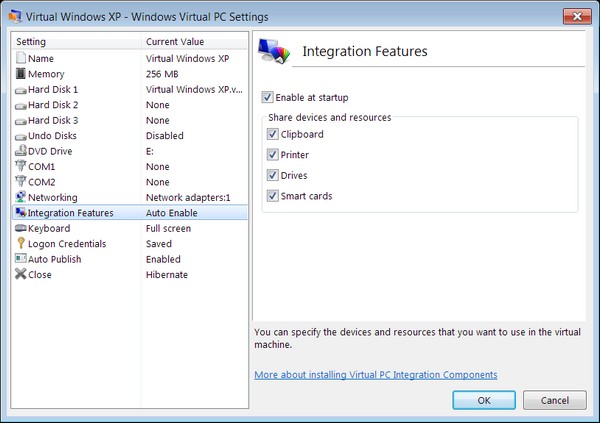
 During that time, Windows Virtual PC processes all those notes it was taking, and creates duplicate entries for newly installed XP apps in a subfolder of the Windows Virtual PC menu entry, called Virtual Windows XP Applications. You can move the entries here elsewhere or pin them to the Start Menu just like any other.
During that time, Windows Virtual PC processes all those notes it was taking, and creates duplicate entries for newly installed XP apps in a subfolder of the Windows Virtual PC menu entry, called Virtual Windows XP Applications. You can move the entries here elsewhere or pin them to the Start Menu just like any other.

 You can't really use the term "Wintel" to refer to computers any more. That fact has never been made clearer than yesterday, when during an Intel conference call with select general press reporters, company officials announced two major moves in the burgeoning arena of very small computers -- netbooks. First, its single-chip platform for netbooks is ready for sampling -- chipset, graphics, and Atom CPU all on one die. Second, its next generation slim form-factor Moblin Linux 2.0 is entering beta.
You can't really use the term "Wintel" to refer to computers any more. That fact has never been made clearer than yesterday, when during an Intel conference call with select general press reporters, company officials announced two major moves in the burgeoning arena of very small computers -- netbooks. First, its single-chip platform for netbooks is ready for sampling -- chipset, graphics, and Atom CPU all on one die. Second, its next generation slim form-factor Moblin Linux 2.0 is entering beta.

 Windows 7 (and Windows Server 2008 R2) address this dilemma in a new and, at least from my point of view, hopeful way, through the use of libraries. We introduced you to libraries in
Windows 7 (and Windows Server 2008 R2) address this dilemma in a new and, at least from my point of view, hopeful way, through the use of libraries. We introduced you to libraries in 
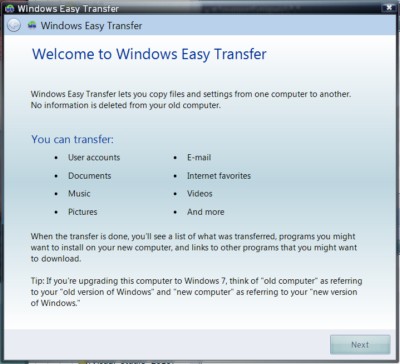 Three months ago,
Three months ago, 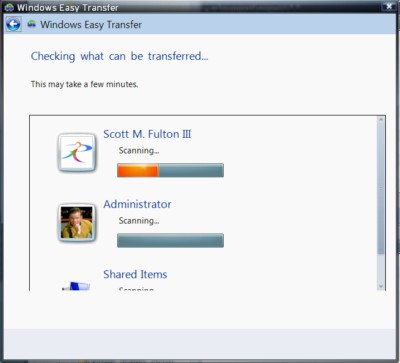 You can't run Easy Transfer in Safe Mode. You'd think since this is essentially a system tool, Microsoft would have designed it to run in Safe Mode, which is where many Windows 95 / Win98 veterans performed many system upgrades to XP after all. Perhaps our choice of USB-based storage device was giving the wizard fits -- surely with 100 GB of free space, it shouldn't be a problem. In any event, we tried choosing to network two computers together, bypassing the remote storage option. And that's where we learned...
You can't run Easy Transfer in Safe Mode. You'd think since this is essentially a system tool, Microsoft would have designed it to run in Safe Mode, which is where many Windows 95 / Win98 veterans performed many system upgrades to XP after all. Perhaps our choice of USB-based storage device was giving the wizard fits -- surely with 100 GB of free space, it shouldn't be a problem. In any event, we tried choosing to network two computers together, bypassing the remote storage option. And that's where we learned...


 Since the first editions of the Tablet SDK were produced during XP's lifecycle, Microsoft has been building up
Since the first editions of the Tablet SDK were produced during XP's lifecycle, Microsoft has been building up 
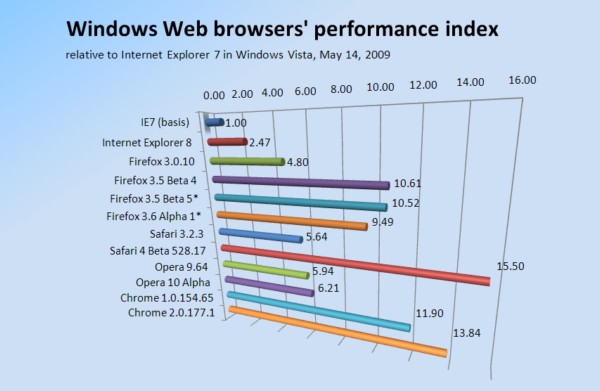
 "I believe that there would be an impact on innovation, I believe there could be an impact on price, and also an impact on people's choice," Moorhead told Betanews. But is there a realistic dollar value that AMD or anyone has been able to pin to this impact, we continued -- knowing that AMD's civil suit against Intel in a Delaware court is ongoing, and that AMD seeks damages there. "I actually think the EU put a dollar figure on it the best they can. Does that represent the exact damages to the consumer? I don't know," he responded. "But if you think about the fact that there's a 50% price delta between us and Intel, if you look at the fact that they've just been convicted of using monopolistic power, using bribery and coercive measures, to block us out, I think it's pretty safe to say that its impact on prices could have been pretty amazing.
"I believe that there would be an impact on innovation, I believe there could be an impact on price, and also an impact on people's choice," Moorhead told Betanews. But is there a realistic dollar value that AMD or anyone has been able to pin to this impact, we continued -- knowing that AMD's civil suit against Intel in a Delaware court is ongoing, and that AMD seeks damages there. "I actually think the EU put a dollar figure on it the best they can. Does that represent the exact damages to the consumer? I don't know," he responded. "But if you think about the fact that there's a 50% price delta between us and Intel, if you look at the fact that they've just been convicted of using monopolistic power, using bribery and coercive measures, to block us out, I think it's pretty safe to say that its impact on prices could have been pretty amazing. Prism comes as a two-part set. Technically, you only need the Prism "runtime" (the Firefox browser with a little less fox and more fire), though in Betanews tests on a Windows XP SP3-based machine, we had difficulty getting the stand-alone Prism to enroll a Web application as a stand-alone app. We had much better luck with the Firefox plug-in, which lets you use Firefox to browse to the application you want to enroll, then from the Tools menu, select Convert Website to Application. A very simple dialog box gives you the only options you need for effectively bringing up an instance of Prism like a browser and loading your Web app as though it were its home page. When we checked Start Menu, Prism created a shortcut there, but conveniently in the Web Apps folder rather than in the usual mess of first-tier apps.
Prism comes as a two-part set. Technically, you only need the Prism "runtime" (the Firefox browser with a little less fox and more fire), though in Betanews tests on a Windows XP SP3-based machine, we had difficulty getting the stand-alone Prism to enroll a Web application as a stand-alone app. We had much better luck with the Firefox plug-in, which lets you use Firefox to browse to the application you want to enroll, then from the Tools menu, select Convert Website to Application. A very simple dialog box gives you the only options you need for effectively bringing up an instance of Prism like a browser and loading your Web app as though it were its home page. When we checked Start Menu, Prism created a shortcut there, but conveniently in the Web Apps folder rather than in the usual mess of first-tier apps.
 In the absence of many dramatically new product announcements (notices about the
In the absence of many dramatically new product announcements (notices about the 
 As Russinovich described, "The slider over here on the left lets you dial up or down the specificity of your rule. For example, if I trusted everything from SysInternals [his own company, acquired by Microsoft] -- which you should, obviously -- then you'd want to set this slider to here [Publisher]. But if I slide it all the way down to here [File Version], I'm creating a rule that says that only Stock Viewer is allowed to run, and only versions 1.0 or higher. So I've really controlled exactly which application from this publisher is allowed to run, but I've still made it flexible because if version 2 comes out, I don't have to go revisit this rule. It's just going to magically work."
As Russinovich described, "The slider over here on the left lets you dial up or down the specificity of your rule. For example, if I trusted everything from SysInternals [his own company, acquired by Microsoft] -- which you should, obviously -- then you'd want to set this slider to here [Publisher]. But if I slide it all the way down to here [File Version], I'm creating a rule that says that only Stock Viewer is allowed to run, and only versions 1.0 or higher. So I've really controlled exactly which application from this publisher is allowed to run, but I've still made it flexible because if version 2 comes out, I don't have to go revisit this rule. It's just going to magically work." AppLocker wasn't the only demonstration garnering enthusiasm this morning; later during his time, Mark Russinovich demonstrated the first effective use of PowerShell version 2 to generate scripts for applying group policy objects. And later he received some rousing applause for the revelation that Windows 7 can mount and even use virtual hard disk (VHD) files -- the kind usually reserved for Microsoft-brand virtual machines. This way a user can have access to a VHD's contents without invoking the actual virtual host that created it. This also enables new possibilities for VHDs' portability between devices. For example, Windows 7 and Windows Server 2008 R2 can now both be set up to boot from a VHD, regardless of where it's located -- on portable storage, maybe over a network, maybe in the cloud.
AppLocker wasn't the only demonstration garnering enthusiasm this morning; later during his time, Mark Russinovich demonstrated the first effective use of PowerShell version 2 to generate scripts for applying group policy objects. And later he received some rousing applause for the revelation that Windows 7 can mount and even use virtual hard disk (VHD) files -- the kind usually reserved for Microsoft-brand virtual machines. This way a user can have access to a VHD's contents without invoking the actual virtual host that created it. This also enables new possibilities for VHDs' portability between devices. For example, Windows 7 and Windows Server 2008 R2 can now both be set up to boot from a VHD, regardless of where it's located -- on portable storage, maybe over a network, maybe in the cloud. I can't think of Star Trek movies today without picturing the gang of us seated around the linoleum tables at Big Ed's, chomping down a heap of fresh-cut fries and taking apart the pictures from the promotional kit for clues. What was the meaning, for example, of Uhura's and Chekov's sweater collars being blue-gray, while Sulu's and Scotty's were mustard yellow?
I can't think of Star Trek movies today without picturing the gang of us seated around the linoleum tables at Big Ed's, chomping down a heap of fresh-cut fries and taking apart the pictures from the promotional kit for clues. What was the meaning, for example, of Uhura's and Chekov's sweater collars being blue-gray, while Sulu's and Scotty's were mustard yellow?

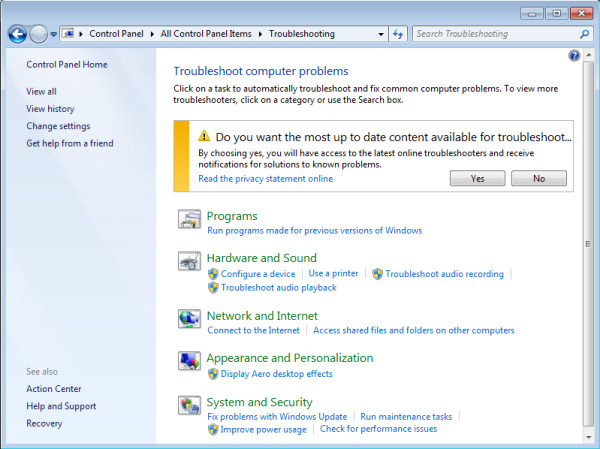

 Last October, PowerShell creator and Microsoft architect Jeffrey Snover
Last October, PowerShell creator and Microsoft architect Jeffrey Snover  The prospects for applications were boundless, and Microsoft wanted to be seen as opening all the doors and not stepping through them first. The first question in journalists' minds was, would there be a counterpart to Hypercard? Without a Hypercard, Windows may as well be broken. Rest assured, we were told, a company called Asymmetrix would provide the toolkit that would revolutionize programming, with a bit of Microsoft's funding. The next generation metaphors for Windows were being created not by Microsoft but by Hewlett-Packard, for a product called NewWave -- again, Microsoft made certain journalists knew, with its help but not its supervision. And the world would know Windows was for real when it used an everyday spreadsheet with a name familiar to everyone: Lotus 1-2-3 G.
The prospects for applications were boundless, and Microsoft wanted to be seen as opening all the doors and not stepping through them first. The first question in journalists' minds was, would there be a counterpart to Hypercard? Without a Hypercard, Windows may as well be broken. Rest assured, we were told, a company called Asymmetrix would provide the toolkit that would revolutionize programming, with a bit of Microsoft's funding. The next generation metaphors for Windows were being created not by Microsoft but by Hewlett-Packard, for a product called NewWave -- again, Microsoft made certain journalists knew, with its help but not its supervision. And the world would know Windows was for real when it used an everyday spreadsheet with a name familiar to everyone: Lotus 1-2-3 G.
![A network application that requires Windows XP appears to run fine in Windows 7 under 'XP mode' virtualization. [Photo credit: Microsoft Corp.]](http://images.betanews.com/media/3209.jpg)



![AMD 4/22/09 platform update slide [Courtesy AMD Corp.]](http://images.betanews.com/media/3186.jpg)
![AMD 4/22/09 platform update slide [Courtesy AMD Corp.]](http://images.betanews.com/media/3187.jpg)

 Our tests pit the latest Windows-based Web browsers in a virtual Vista system, and combine the Acid3 standards test with three trusted performance tests for CSS rendering and JavaScript speed. Nearly all the early news for the 3.6 alpha was good, including posting Mozilla's best-ever score on the Acid3 test -- a 94% -- and posting a Betanews cumulative index score for the first time above 10.0, which means this alpha performs over ten times better than Microsoft Internet Explorer 7 (not the current version, IE8, but the previous one).
Our tests pit the latest Windows-based Web browsers in a virtual Vista system, and combine the Acid3 standards test with three trusted performance tests for CSS rendering and JavaScript speed. Nearly all the early news for the 3.6 alpha was good, including posting Mozilla's best-ever score on the Acid3 test -- a 94% -- and posting a Betanews cumulative index score for the first time above 10.0, which means this alpha performs over ten times better than Microsoft Internet Explorer 7 (not the current version, IE8, but the previous one).
 Once we stop tinkering with the accelerator pedals for a minute or two, we might get a chance to play with some of 3.6's new features. We did stumble across one of them right away: When clearing your history and the contents of the browser cache, you can now specify generally how much time you want to wipe clean -- the last hour, two hours, four hours, today, or everything in the cache. Now, at the moment, this comes at the expense of specifying what you want to wipe clean -- history, cache, cookies, passwords -- but perhaps the team is looking for a way to integrate those choices into the new setup.
Once we stop tinkering with the accelerator pedals for a minute or two, we might get a chance to play with some of 3.6's new features. We did stumble across one of them right away: When clearing your history and the contents of the browser cache, you can now specify generally how much time you want to wipe clean -- the last hour, two hours, four hours, today, or everything in the cache. Now, at the moment, this comes at the expense of specifying what you want to wipe clean -- history, cache, cookies, passwords -- but perhaps the team is looking for a way to integrate those choices into the new setup.
![JournalismOnline.com co-partner and former Wall Street Journal editor L. Gordon Crovitz. [courtesy JournalismOnline.com]](http://images.betanews.com/media/3165.jpg) L. Gordon Crovitz, partner,
L. Gordon Crovitz, partner, 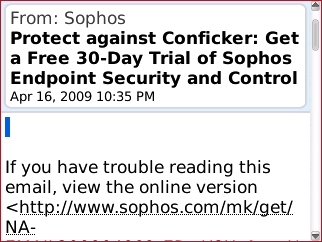 Okay, so the font file itself is still in the system, but you won't actually use it or want it. The old system fonts looked like something spat out of a Centronics dot-matrix printer, circa 1978. I remember selling dot-matrix printers in the early days, including one of the first to offer a switch that converted you from "sans-serif" to "serif," or in that particular case, from "legible" to "illegible." Until today, we 8800 users had something called "BBClarity" (which at least meant, devoid of junk) and "BBMilbank," which looked like it belonged on one of those programmable highway warning signs, shouting, "BEWARE OF ZOMBIES."
Okay, so the font file itself is still in the system, but you won't actually use it or want it. The old system fonts looked like something spat out of a Centronics dot-matrix printer, circa 1978. I remember selling dot-matrix printers in the early days, including one of the first to offer a switch that converted you from "sans-serif" to "serif," or in that particular case, from "legible" to "illegible." Until today, we 8800 users had something called "BBClarity" (which at least meant, devoid of junk) and "BBMilbank," which looked like it belonged on one of those programmable highway warning signs, shouting, "BEWARE OF ZOMBIES." One of those apps is the mobile edition of Pandora, the original programmable radio stream that learns your musical tastes as you listen. Having Pandora in my pocket is reason alone to own a mobile handset; my friend Angela
One of those apps is the mobile edition of Pandora, the original programmable radio stream that learns your musical tastes as you listen. Having Pandora in my pocket is reason alone to own a mobile handset; my friend Angela  The Mobile Pandora isn't as conversational as the PC edition -- for instance, you can't go into your profile and load up all your bookmarks. You can get an explanation why you're hearing the song you're hearing, and this little feature alone shows you why the System upgrade was necessary -- on the old system, there's no way this information would be the least bit legible in a single alert box.
The Mobile Pandora isn't as conversational as the PC edition -- for instance, you can't go into your profile and load up all your bookmarks. You can get an explanation why you're hearing the song you're hearing, and this little feature alone shows you why the System upgrade was necessary -- on the old system, there's no way this information would be the least bit legible in a single alert box. The upgrade process will back up your existing calendar, e-mail, media, and personal applications automatically, and will restore them after the new modules are loaded in and verified. The verification process, for some reason, is the longest stage -- be prepared to wait as long as 45 minutes. The process in its entirety could take an hour, maybe a little longer.
The upgrade process will back up your existing calendar, e-mail, media, and personal applications automatically, and will restore them after the new modules are loaded in and verified. The verification process, for some reason, is the longest stage -- be prepared to wait as long as 45 minutes. The process in its entirety could take an hour, maybe a little longer. You'll notice some differences right away, some thanks to the new system, others on account of smart users who truly appreciate the low value of farting apps. The catalog is much more pleasant to read, even if -- sadly -- some of the entries haven't changed all that much since App World's premiere earlier this month. The "before" and "after" pictures above tell the story. ("ECOE" isn't very self-explanatory, is it? It's a Ticketmaster application, so you'd think it would have been named something like "Ticketmaster Application.")
You'll notice some differences right away, some thanks to the new system, others on account of smart users who truly appreciate the low value of farting apps. The catalog is much more pleasant to read, even if -- sadly -- some of the entries haven't changed all that much since App World's premiere earlier this month. The "before" and "after" pictures above tell the story. ("ECOE" isn't very self-explanatory, is it? It's a Ticketmaster application, so you'd think it would have been named something like "Ticketmaster Application.") It should be no surprise, especially to long-time Mac users, that noted analyst Roger L. Kay, currently with Endpoint Technologies, is a supporter of the Windows "ecosystem." His opinions with regard to Windows are very much on the record, and he and I have often joined together with our colleagues, in brisk, lively, but fair discussions about the relative value of software and hardware on different platforms.
It should be no surprise, especially to long-time Mac users, that noted analyst Roger L. Kay, currently with Endpoint Technologies, is a supporter of the Windows "ecosystem." His opinions with regard to Windows are very much on the record, and he and I have often joined together with our colleagues, in brisk, lively, but fair discussions about the relative value of software and hardware on different platforms. Kay's current message plays very well to Microsoft's current marketing message for Windows-based PCs...eerily well. In the last several days prior to the release of Kay's white paper,
Kay's current message plays very well to Microsoft's current marketing message for Windows-based PCs...eerily well. In the last several days prior to the release of Kay's white paper,  "It is critical that our plan be competitively and technologically neutral," wrote McDowell yesterday (
"It is critical that our plan be competitively and technologically neutral," wrote McDowell yesterday (